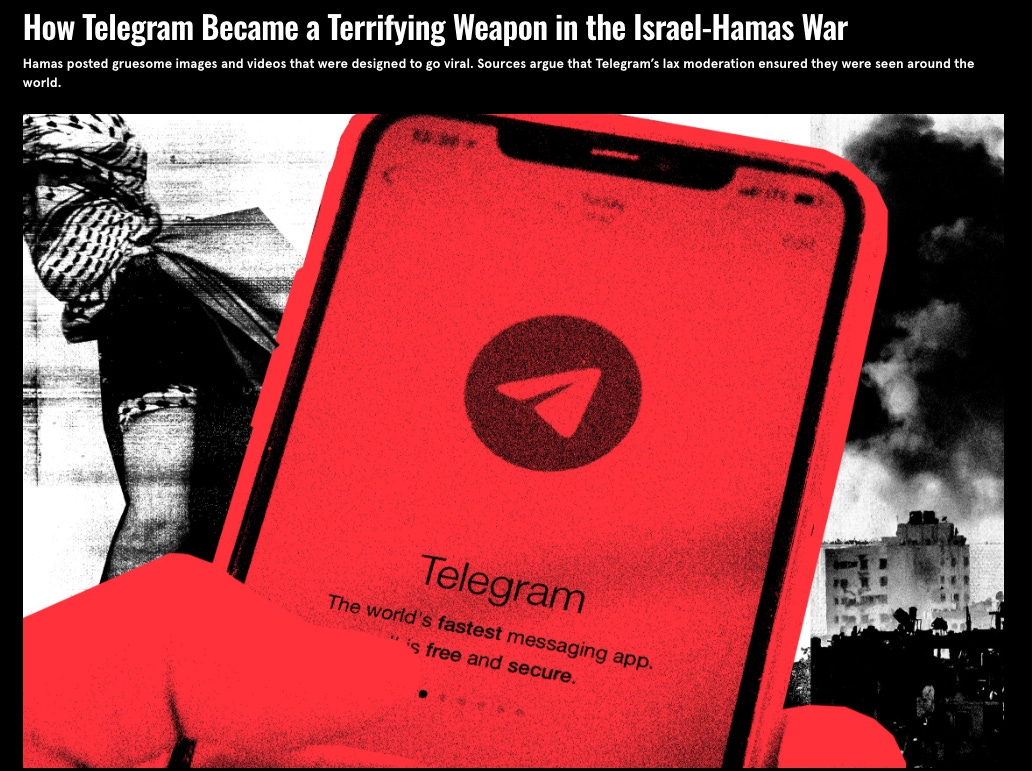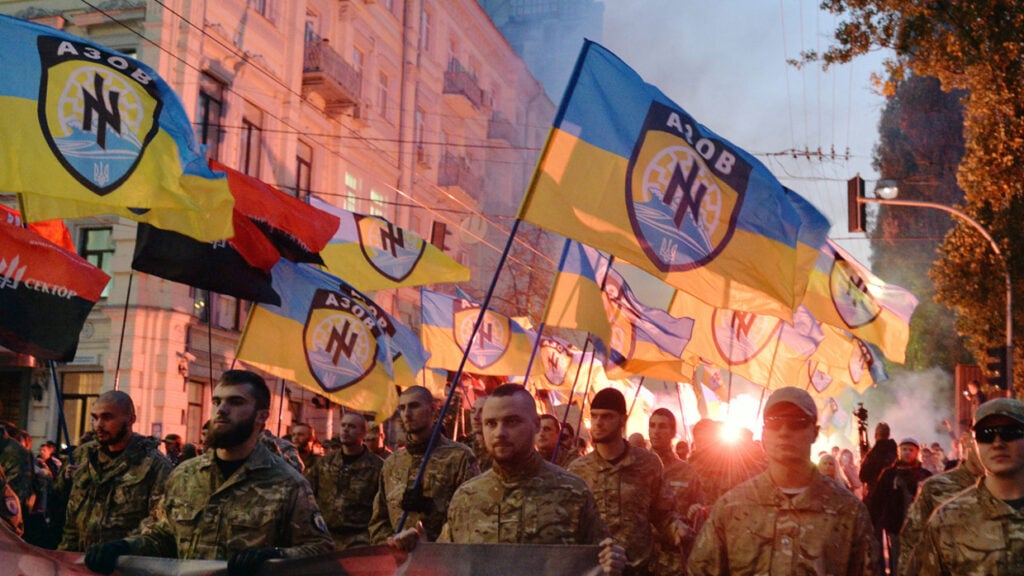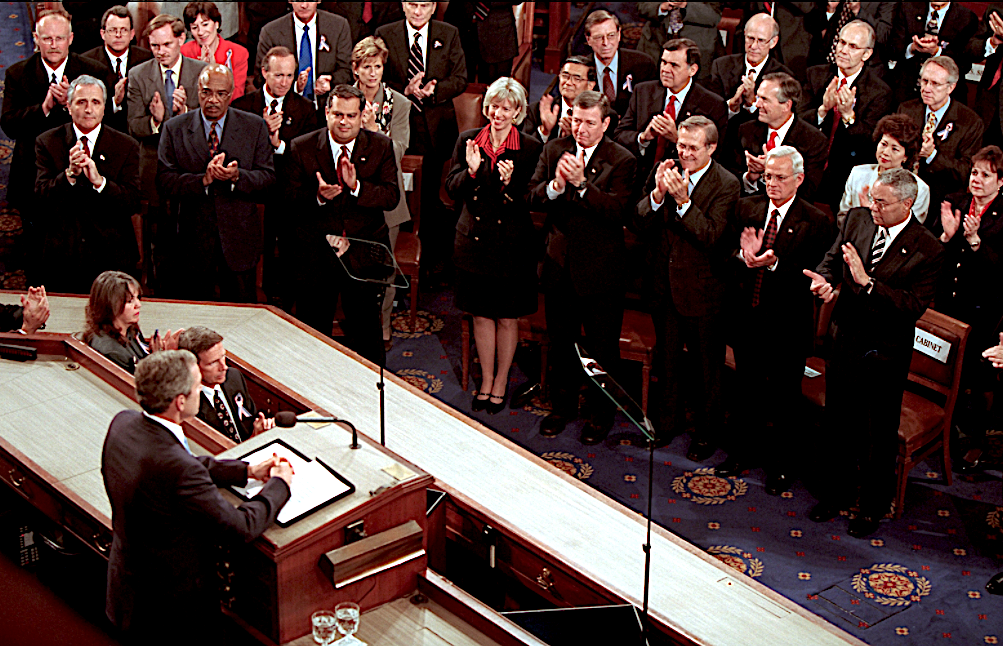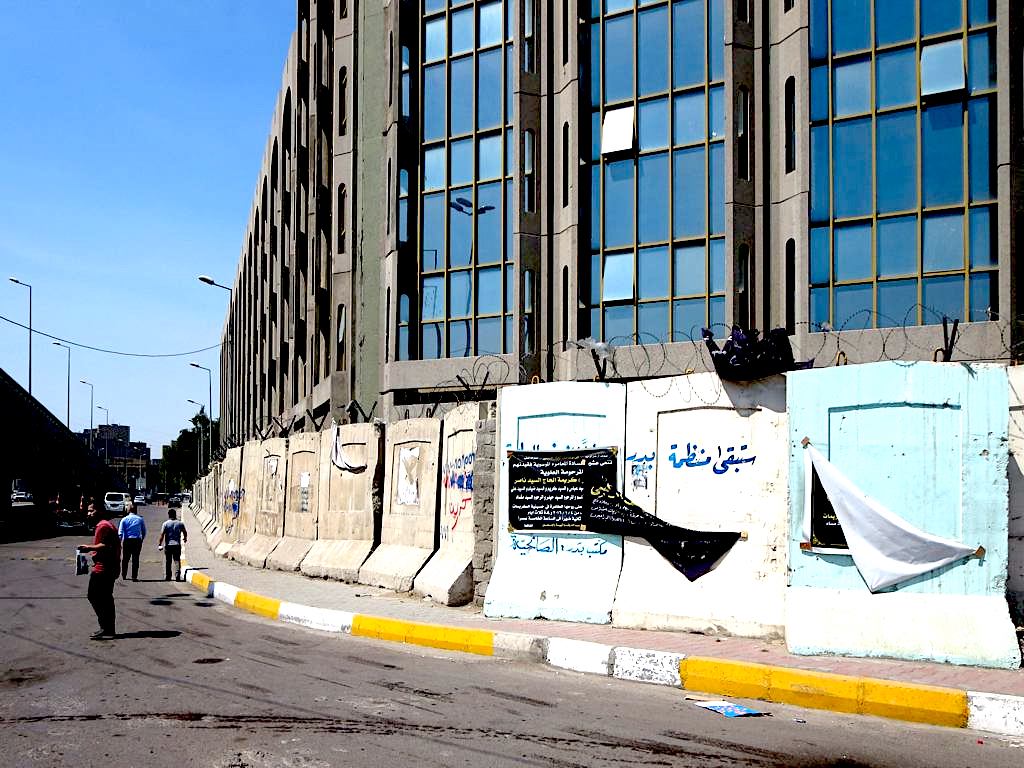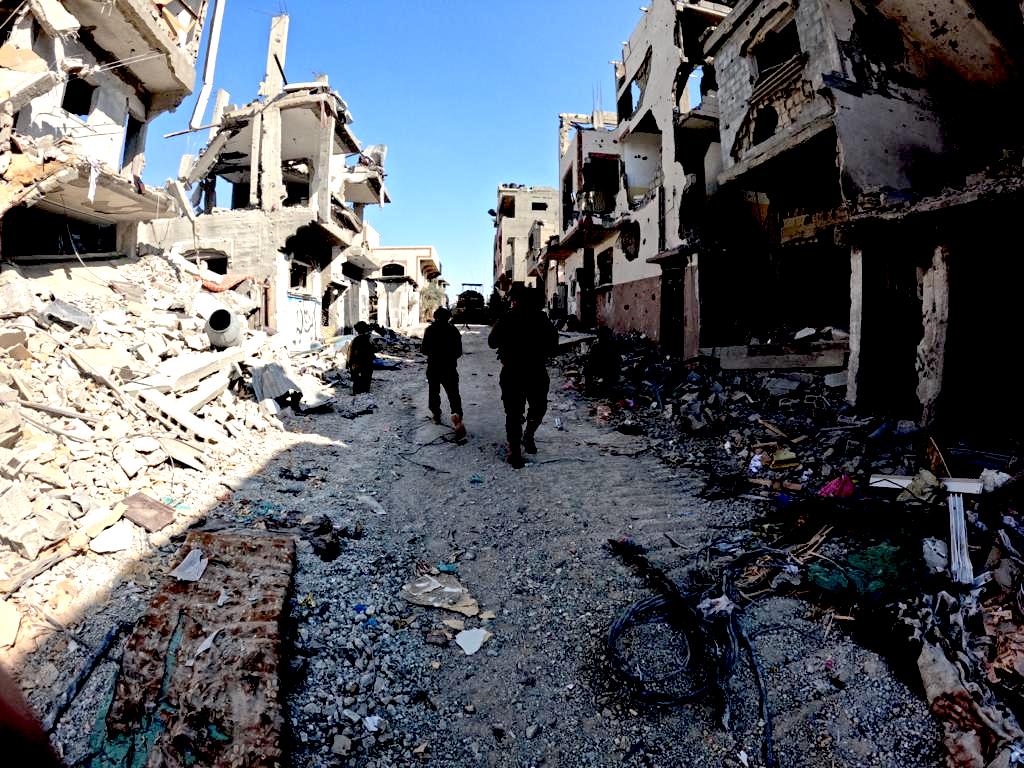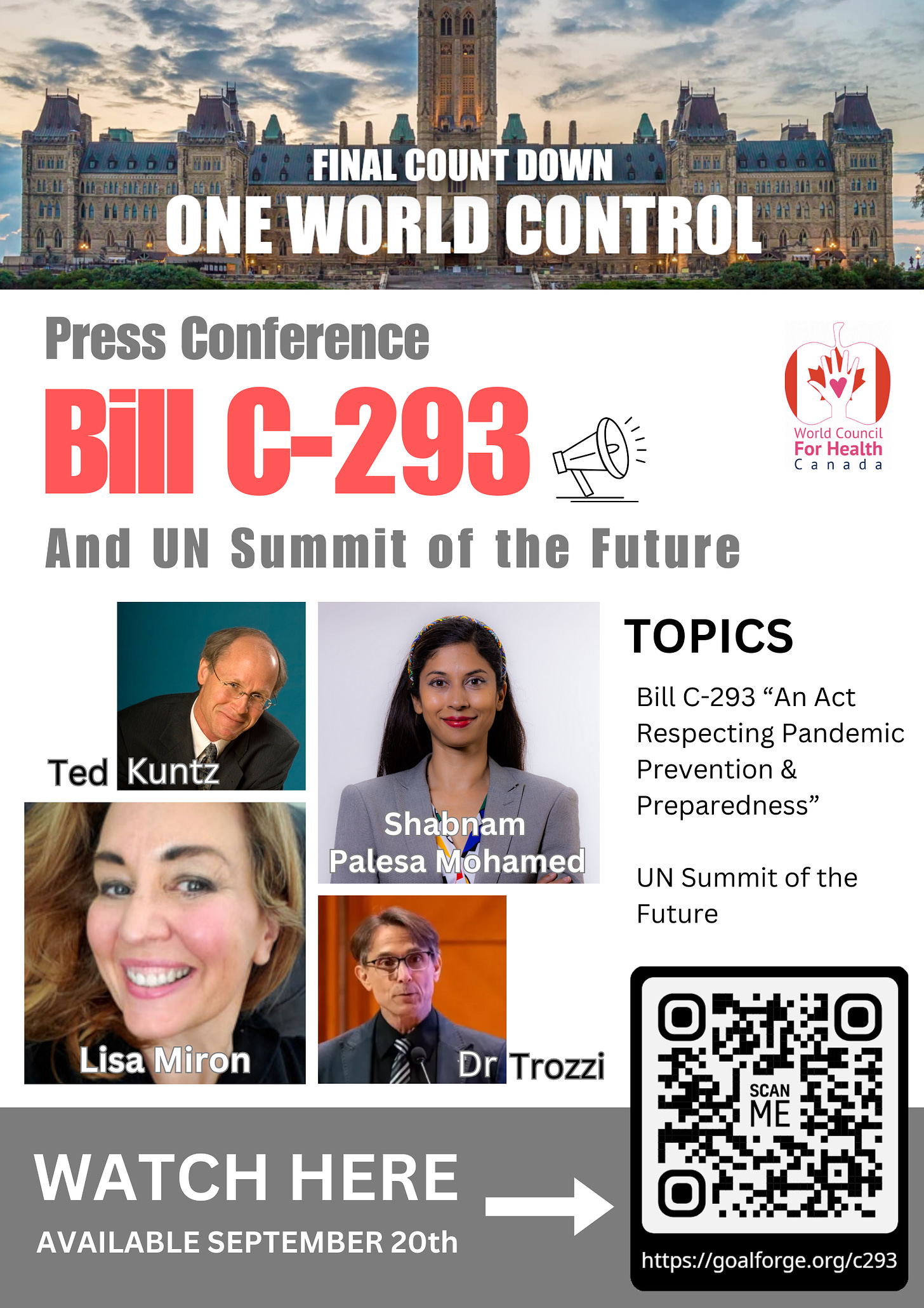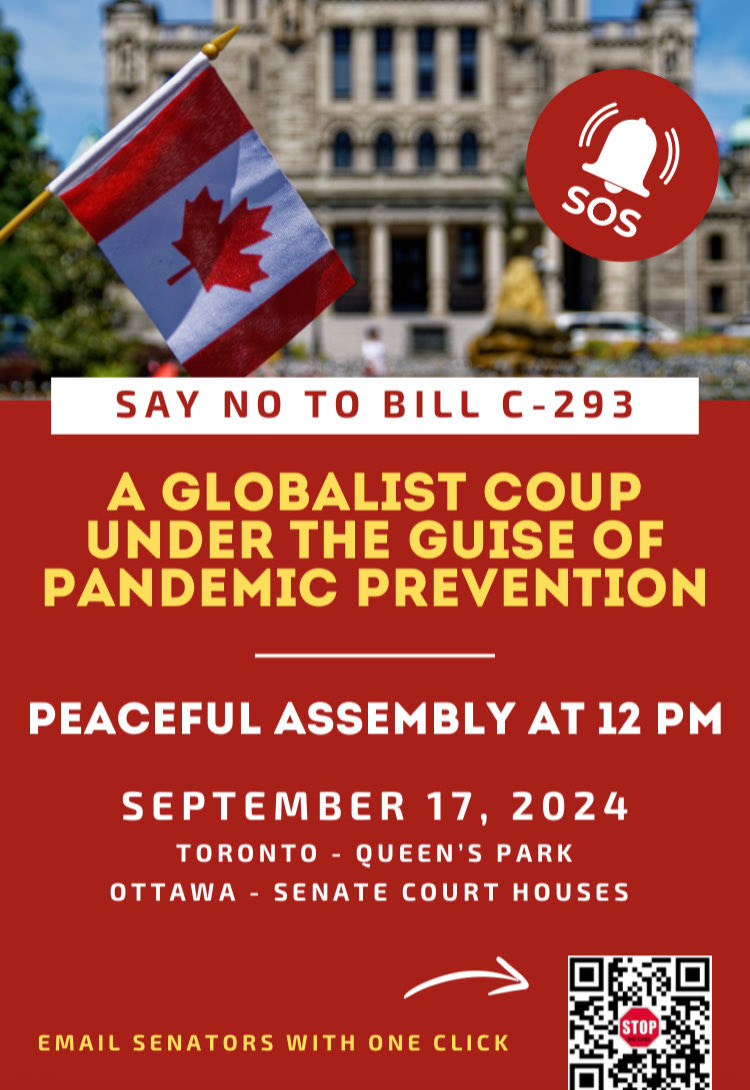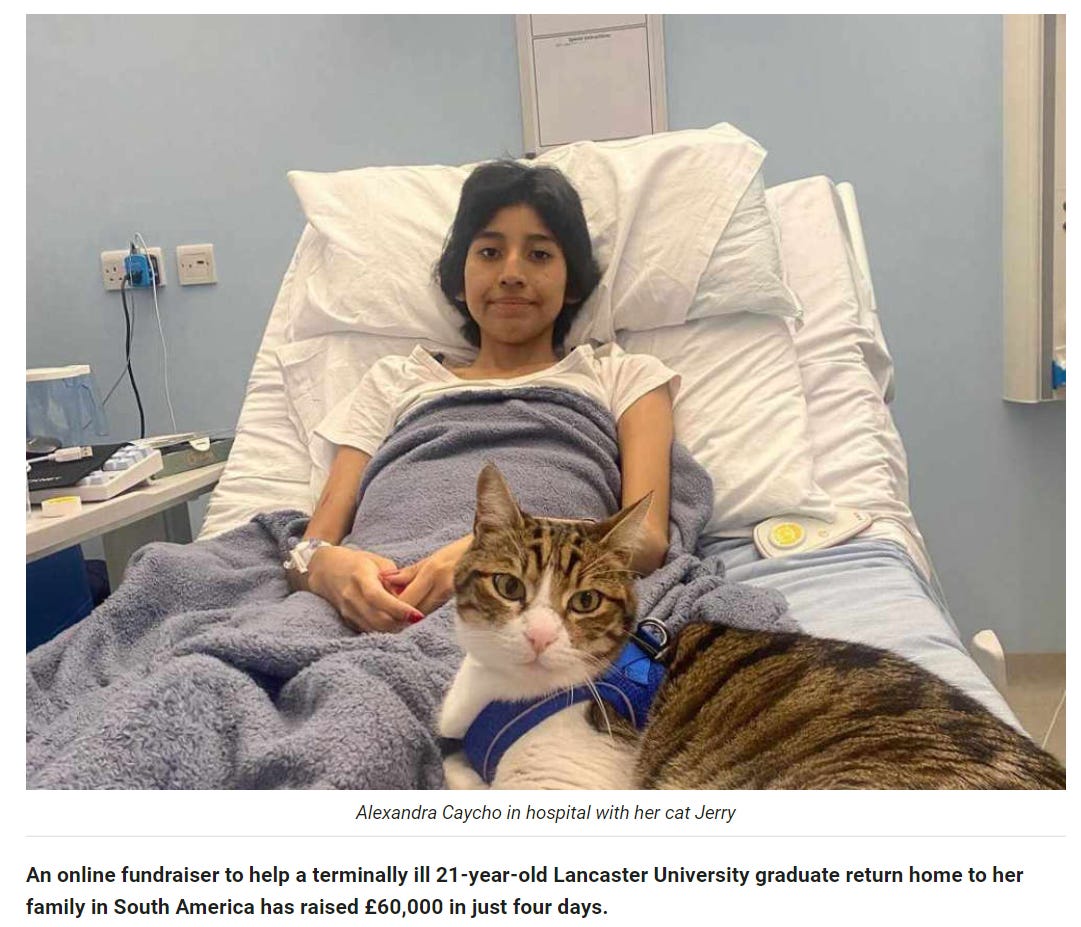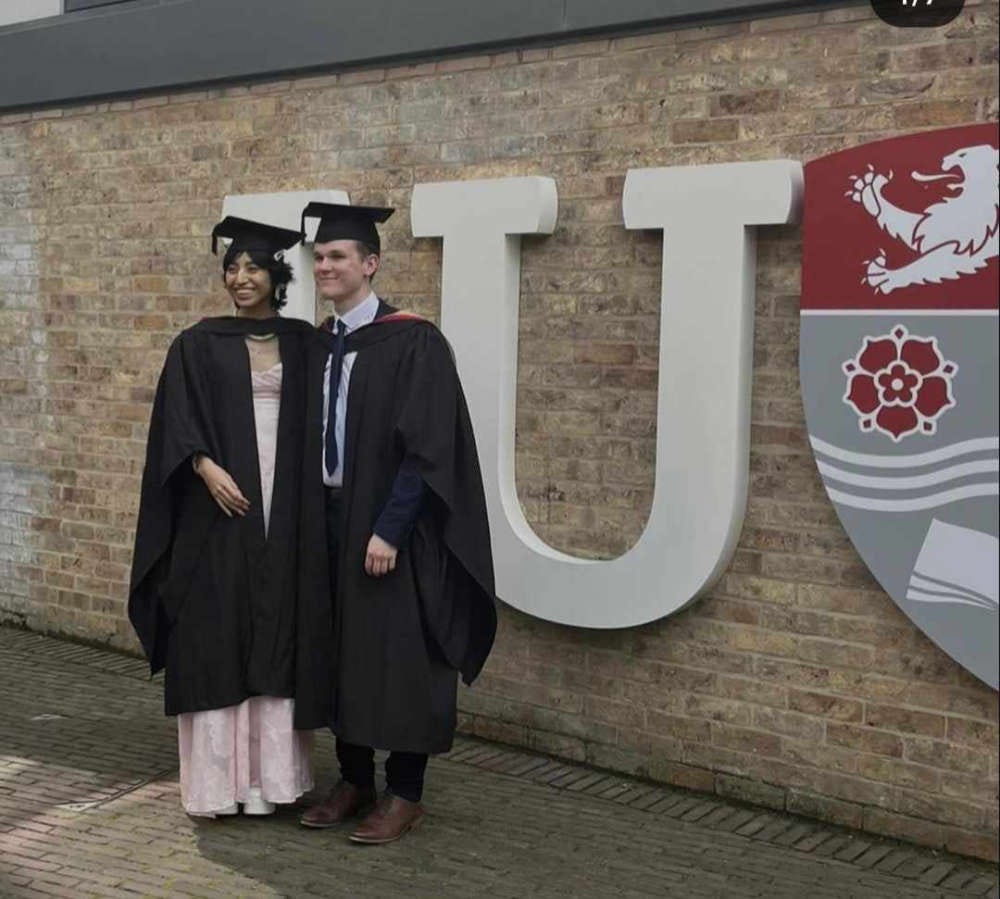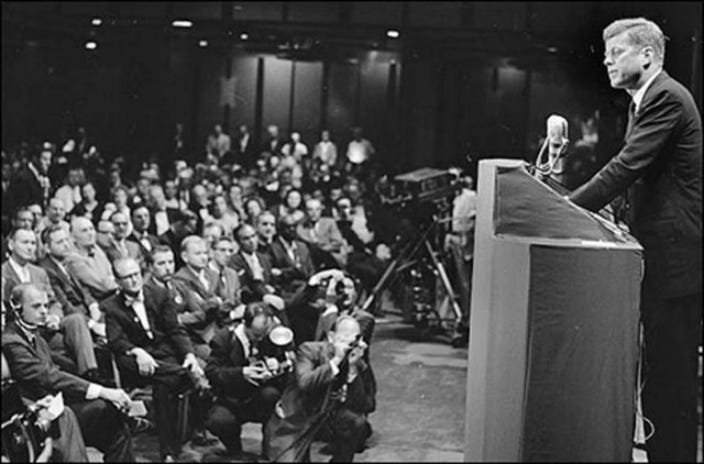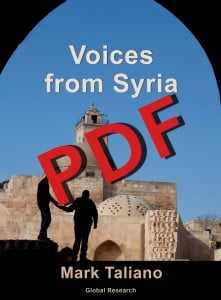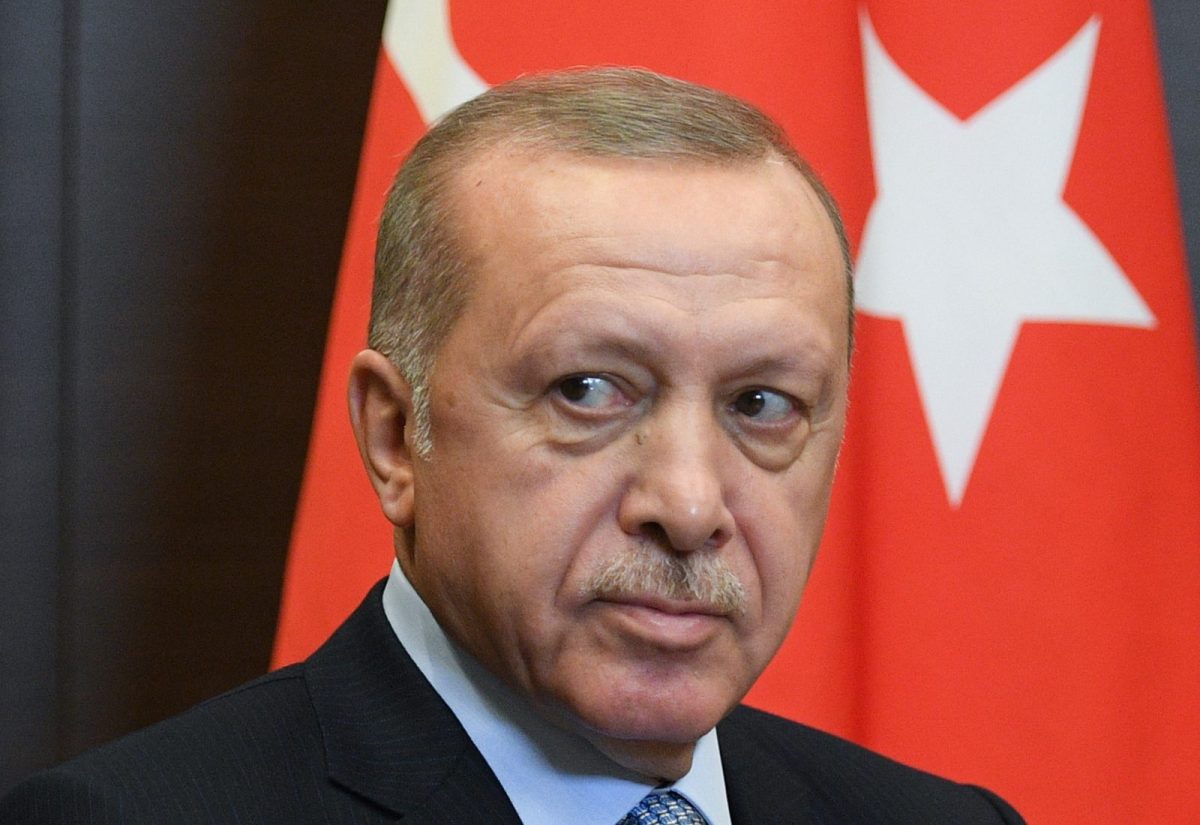
Food, Dispossession and Dependency.
Resisting the New World Order
by
Colin Todhunter
We are currently seeing an acceleration of the corporate consolidation of the entire global agri-food chain. The high-tech/big data conglomerates, including Amazon, Microsoft, Facebook and Google, have joined traditional agribusiness giants, such as Corteva, Bayer, Cargill and Syngenta, in a quest to impose their model of food and agriculture on the world.
The Bill and Melinda Gates Foundation is also involved (documented in ‘Gates to a Global Empire‘ by Navdanya International), whether through buying up huge tracts of farmland, promoting a much-heralded (but failed) ‘green revolution’ for Africa, pushing biosynthetic food and genetic engineering technologies or more generally facilitating the aims of the mega agri-food corporations.
Of course, the billionaire interests behind this try to portray what they are doing as some kind of humanitarian endeavour – saving the planet with ‘climate-friendly solutions’, ‘helping farmers’ or ‘feeding the world’. In the cold light of day, however, what they are really doing is repackaging and greenwashing the dispossessive strategies of imperialism.
The following text sets out some key current trends affecting food and agriculture and begins by looking at the Gates Foundation’s promotion of a failing model of industrial, (GMO) chemical-intensive agriculture and the deleterious impacts it has on indigenous farming and farmers, human health, rural communities, agroecological systems and the environment.
Alternatives to this model are then discussed which focus on organic agriculture and specifically agroecology. However, there are barriers to implementing these solutions, not least the influence of global agri-capital in the form of agritech and agribusiness conglomerates which have captured key institutions.
The discussion then moves on to focus on the situation in India because that country’s ongoing agrarian crisis and the farmers’ struggle encapsulates what is at stake for the world.
Finally, it is argued that the COVID-19 ‘pandemic’ is being used as cover to manage a crisis of capitalism and the restructuring of much of the global economy, including food and agriculture.
About the Author
Colin Todhunter is a Research Associate of the Centre for Research on Globalization (CRG).
In 2018, he was named a Living Peace and Justice leader/Model by Engaging Peace Inc. in recognition of his writing.
Table of Contents
Chapter I.
Toxic Agriculture – From the Gates Foundation to the Green Revolution
Chapter II.
Genetic Engineering – Value Capture and Market Dependency
Chapter III.
Agroecology – Localisation and Food Sovereignty
Chapter IV.
Distorting Development – Corporate Capture and Imperialist Intent
Chapter V.
The Farmers’ Struggle in India – The Farm Laws and a Neoliberal Death Knell
Chapter VI.
Colonial Deindustrialisation – Predation and Inequality
Chapter VII.
Neoliberal Playbook – Economic Terrorism and Smashing Farmers’ Heads
Chapter VIII.
The New Normal – Crisis of Capitalism and Dystopian Reset
Chapter IX.
Post-COVID Dystopia – Hand of God and the New World Order
Chapter X.
The Violence of Development
Chapter I
Toxic Agriculture
From the Gates Foundation to the Green Revolution
As of December 2018, the Bill and Melinda Gates Foundation had $46.8 billion in assets. It is the largest charitable foundation in the world, distributing more aid for global health than any government.
The Gates Foundation is a major funder of the CGIAR system (formerly the Consultative Group for International Agricultural Research) – a global partnership whose stated aim is to strive for a food-secure future.
In 2016, the Gates Foundation was accused of dangerously and unaccountably distorting the direction of international development. The charges were laid out in a report by Global Justice Now: ‘Gated Development – Is the Gates Foundation always a force for good?‘
The report’s author, Mark Curtis, outlined the foundation’s promotion of industrial agriculture across Africa, which would undermine existing sustainable, small-scale farming that is providing the vast majority of food across the continent.

Curtis described how the foundation works with US agri-commodity trader Cargill in an $8 million project to “develop the soya value chain” in southern Africa. Cargill is the biggest global player in the production of and trade in soya with heavy investments in South America where GM soya monocrops (and associated agrochemicals) have displaced rural populations and caused health problems and environmental damage.
The Gates-funded project will likely enable Cargill to capture a hitherto untapped African soya market and eventually introduce genetically modified (GM) soya onto the continent. The Gates foundation is also supporting projects involving other chemical and seed corporations, including DuPont, Syngenta and Bayer. It is promoting a model of industrial agriculture, the increasing use of agrochemicals and GM patented seeds and the privatisation of extension services.
What the Gates Foundation is doing is part of the Alliance for a Green Revolution in Africa (AGRA) initiative, which is based on the premise that hunger and malnutrition in Africa are mainly the result of a lack of technology and functioning markets. AGRA has been intervening directly in the formulation of African governments’ agricultural policies on issues like seeds and land, opening up African markets to US agribusiness.
More than 80% of Africa’s seed supply comes from millions of small-scale farmers recycling and exchanging seed from year to year. But AGRA is supporting the introduction of commercial (chemical-dependent) seed systems, which risk enabling a few large companies to control seed research and development, production and distribution.
Since the 1990s, there has been a steady process of national seed law reviews, sponsored by USAID and the G8 along with Gates and others, opening the door to multinational corporations’ involvement in seed production, including the acquisition of every sizeable seed enterprise on the African continent.
The Gates Foundation is also very active in the area of health, which is ironic given its promotion of industrial agriculture and its reliance on health-damaging agrochemicals.
The foundation is a prominent funder of the World Health Organization and UNICEF. Gates has been the largest or second largest contributor to the WHO’s budget in recent years. Perhaps this sheds some light onto why so many international reports omit the effects of pesticides on health.
Pesticides
According to the 2021 paper ‘Growing Agrichemical Ubiquity: New Questions for Environments and Health’ (Community of Excellence in Global Health Equity), the volume of pesticide use and exposure is occurring on a scale that is without precedent and world-historical in nature; agrochemicals are now pervasive as they cycle through bodies and environments; and the herbicide glyphosate has been a major factor in driving this increase in use.

The authors state that when the WHO’s International Agency for Research on Cancer (IARC) declared glyphosate to be a “probable carcinogen” in 2015, the fragile consensus about its safety was upended.
They note that in 2020 the US Environmental Protection Agency affirmed that glyphosate-based herbicides (GBHs) pose no risk to human health, apparently disregarding new evidence about the link between glyphosate and non-Hodgkin’s lymphoma as well as its non-cancer impacts on the liver, kidney and gastrointestinal system.
The multi-authored paper notes:
“In just under 20 years, much of the Earth has been coated with glyphosate, in many places layering on already chemical-laden human bodies, other organisms and environments.”
However, the authors add that glyphosate (Roundup being the most well-known – initially manufactured by Monsanto – now Bayer) is not the only pesticide to achieve broad-scale pervasiveness:
“The insecticide imidacloprid, for example, coats the majority of US maize seed, making it the most widely used insecticide in US history. Between just 2003 and 2009, sales of imidacloprid products rose 245% (Simon-Delso et al. 2015). The scale of such use, and its overlapping effects on bodies and environments, have yet to be fully reckoned with, especially outside of countries with relatively strong regulatory and monitoring capacities.”
Imidacloprid was licensed for use in Europe in 1994. In July of that year, beekeepers in France noticed something unexpected. Just after the sunflowers had bloomed, a substantial number of their hives would collapse, as the worker bees flew off and never returned, leaving the queen and immature workers to die. The French beekeepers soon believed they knew the reason: a brand new insecticide called Gaucho with imidacloprid as active ingredient was being applied to sunflowers for the first time.
In the 2022 paper ‘Neonicotinoid insecticides found in children treated for leukaemias and lymphomas’ (Environmental Health), the authors stated that multiple neonicotinoids were found in children’s cerebrospinal fluid (CSF), plasma and urine. As the most widely used class of insecticides worldwide, they are ubiquitously found in the environment, wildlife and foods.
As for the world’s most widely used herbicide, glyphosate-based formulas affect the gut microbiome and are associated with a global metabolic health crisis. They also cause epigenetic changes in humans and animals – diseases skip a generation then appear.
A French team has found heavy metals in chemical formulants of GBHs in people’s diets. As with other pesticides, 10–20% of GBHs consist of chemical formulants. Families of petroleum-based oxidized molecules and other contaminants have been identified as well as the heavy metals arsenic, chromium, cobalt, lead and nickel, which are known to be toxic and endocrine disruptors.
In 1988, Ridley and Mirly (commissioned by Monsanto) found bioaccumulation of glyphosate in rat tissues. Residues were present in bone, marrow, blood and glands including the thyroid, testes and ovaries, as well as major organs, including the heart, liver, lungs, kidneys, spleen and stomach. Glyphosate was also associated with ophthalmic degenerative lens changes.
A Stout and Rueker (1990) study (also commissioned by Monsanto) provided concerning evidence with regard to cataracts following glyphosate exposure in rats. It is interesting to note that the rate of cataract surgery in England “increased very substantially” between 1989 and 2004: from 173 (1989) to 637 (2004) episodes per 100,000 population.
A 2016 study by the WHO also confirmed that the incidence of cataracts had greatly increased: ‘A global assessment of the burden of disease from environmental risks’ says that cataracts are the leading cause of blindness worldwide. Globally, cataracts are responsible for 51% of blindness. In the US, between 2000 and 2010 the number of cases of cataract rose by 20% from 20.5 million to 24.4 million. It is projected that by 2050, the number of people with cataracts will have doubled to 50 million.
The authors of ‘Assessment of Glyphosate Induced Epigenetic Transgenerational Inheritance of Pathologies and Sperm Epimutations: Generational Toxicology’ (Scientific Reports, 2019) noted that ancestral environmental exposures to a variety of factors and toxicants promoted the epigenetic transgenerational inheritance of adult onset disease.
They proposed that glyphosate can induce the transgenerational inheritance of disease and germline (for example, sperm) epimutations. Observations suggest the generational toxicology of glyphosate needs to be considered in the disease etiology of future generations.
In a 2017 study, Carlos Javier Baier and colleagues documented behavioural impairments following repeated intranasal glyphosate-based herbicide administration in mice. Intranasal GBH caused behavioural disorders, decreased locomotor activity, induced an anxiogenic behaviour and produced memory deficit.
The paper contains references to many studies from around the world that confirm GBHs are damaging to the development of the foetal brain and that repeated exposure is toxic to the adult human brain and may result in alterations in locomotor activity, feelings of anxiety and memory impairment.
Highlights of a 2018 study on neurotransmitter changes in rat brain regions following glyphosate exposure include neurotoxicity in rats. And in a 2014 study which examined mechanisms underlying the neurotoxicity induced by glyphosate-based herbicide in the immature rat hippocampus, it was found that Monsanto’s glyphosate-based Roundup induces various neurotoxic processes.
In the paper ‘Glyphosate damages blood-testis barrier via NOX1-triggered oxidative stress in rats: Long-term exposure as a potential risk for male reproductive health’ (Environment International, 2022) it was noted that glyphosate causes blood-testis barrier (BTB) damage and low-quality sperm and that glyphosate-induced BTB injury contributes to sperm quality decrease.
The study Multiomics reveal non-alcoholic fatty liver disease in rats following chronic exposure to an ultra-low dose of Roundup herbicide (2017), revealed non-fatty acid liver disease (NFALD) in rats following chronic exposure to an ultra-low dose of Roundup herbicide. NFALD currently affects 25% of the US population and similar numbers of Europeans.
The 2020 paper ‘Glyphosate exposure exacerbates the dopaminergic neurotoxicity in the mouse brain after repeated of MPTP’ suggests that glyphosate may be an environmental risk factor for Parkinson’s.
In the 2019 Ramazzini Institute’s 13-week pilot study that looked into the effects of GBHs on development and the endocrine system, it was demonstrated that GBHs exposure, from prenatal period to adulthood, induced endocrine effects and altered reproductive developmental parameters in male and female rats.
Nevertheless, according to Phillips McDougall’s Annual Agriservice Reports, herbicides made up 43% of the global pesticide market in 2019 by value. Much of the increase in glyphosate use is due to the introduction of glyphosate-tolerant soybean, maize, and cotton seeds in the US, Brazil and Argentina.
A corporation’s top priority is the bottom line (at all costs, by all means necessary) and not public health. A CEO’s obligation is to maximise profit, capture markets and – ideally – regulatory and policy-making bodies as well.
Corporations must also secure viable year-on-year growth which often means expanding into hitherto untapped markets. Indeed, in the previously mentioned paper ‘Growing Agrichemical Ubiquity’, the authors note that while countries like the US are still reporting higher pesticide use, most of this growth is taking place in the Global South:
“For example, pesticide use in California grew 10% from 2005 to 2015, while use by Bolivian farmers, though starting from a low base, increased 300% in the same period. Pesticide use is growing steeply in countries as diverse as China, Mali, South Africa, Nepal, Laos, Ghana, Argentina, Brazil and Bangladesh. Most countries with high levels of growth have weak regulatory enforcement, environmental monitoring and health surveillance infrastructure.”
And much of this growth is driven by increased demand for herbicides:
“India saw a 250% increase since 2005 (Das Gupta et al. 2017) while herbicide use jumped by 2500% in China (Huang, Wang, and Xiao 2017) and 2000% in Ethiopia (Tamru et al. 2017). The introduction of glyphosate-tolerant soybean, maize, and cotton seeds in the US, Brazil, and Argentina is clearly driving much of the demand, but herbicide use is also expanding dramatically in countries that have not approved nor adopted such crops and where smallholder farming is still dominant.”
The UN expert on toxics, Baskut Tuncak, said in a November 2017 article:
“Our children are growing up exposed to a toxic cocktail of weedkillers, insecticides, and fungicides. It’s on their food and in their water, and it’s even doused over their parks and playgrounds.”
In February 2020, Tuncak rejected the idea that the risks posed by highly hazardous pesticides could be managed safely. He told Unearthed (Greenpeace UK’s journalism website) that there is nothing sustainable about the widespread use of highly hazardous pesticides for agriculture. Whether they poison workers, extinguish biodiversity, persist in the environment or accumulate in a mother’s breast milk, Tuncak argued that these are unsustainable, cannot be used safely and should have been phased out of use long ago.
In his 2017 article, he stated:
“The UN Convention on the Rights of the Child… makes it clear that states have an explicit obligation to protect children from exposure to toxic chemicals, from contaminated food and polluted water, and to ensure that every child can realise their right to the highest attainable standard of health. These and many other rights of the child are abused by the current pesticide regime. These chemicals are everywhere and they are invisible.”
Tuncak added that paediatricians have referred to childhood exposure to pesticides as creating a “silent pandemic” of disease and disability. He noted that exposure in pregnancy and childhood is linked to birth defects, diabetes and cancer and stated that children are particularly vulnerable to these toxic chemicals: increasing evidence shows that even at ‘low’ doses of childhood exposure, irreversible health impacts can result.
He concluded that the overwhelming reliance of regulators on industry-funded studies, the exclusion of independent science from assessments and the confidentiality of studies relied upon by authorities must change.
A joint investigation by Unearthed and the NGO Public Eye has found the world’s five biggest pesticide manufacturers are making more than a third of their income from leading products, chemicals that pose serious hazards to human health and the environment.
An analysis of a huge database of 2018’s top-selling ‘crop protection products’ revealed the world’s leading agrochemical companies made more than 35% of their sales from pesticides classed as highly hazardous to people, animals or ecosystems. The investigation identified billions of dollars of income for agrochemical giants BASF, Bayer, Corteva, FMC and Syngenta from chemicals found by regulatory authorities to pose health hazards like cancer or reproductive failure.
This investigation is based on an analysis of a huge dataset of pesticide sales from the agribusiness intelligence company Phillips McDougall. The data covers around 40% of the $57.6bn global market for agricultural pesticides in 2018. It focuses on 43 countries, which between them represent more than 90% of the global pesticide market by value.
While Bill Gates promotes a chemical-intensive model of agriculture that dovetails with the needs and value chains of agri-food conglomerates, there are spiralling rates of disease, especially in the UK and the US.
However, the mainstream narrative is to blame individuals for their ailments and conditions which are said to result from ‘lifestyle choices’. But Monsanto’s German owner Bayer has confirmed that more than 40,000 people have filed suits against Monsanto alleging that exposure to Roundup herbicide caused them or their loved ones to develop non-Hodgkin lymphoma and that Monsanto covered up the risks.
Each year, there are steady increases in the numbers of new cancers and increases in deaths from the same cancers, with no treatments making any difference to the numbers; at the same time, these treatments maximise the bottom line of the drug companies while the impacts of agrochemicals remain conspicuously absent from the mainstream disease narrative.
As part of its hegemonic strategy, the Gates Foundation says it wants to ensure global food security and optimise health and nutrition. But it seems happy to ignore the deleterious health impacts of agrochemicals as it continues to promote the interests of the firms that produce them.
Why does Gates not support agroecological approaches? Various high-level UN reports have advocated agroecology for ensuring equitable global food security. This would leave smallholder agriculture both intact and independent from Western agri-capital, something which runs counter to the underlying aims of the corporations which Gates supports. Their model depends on dispossession and creating market dependency for their inputs.
A model that has been imposed on nations for many decades and which relies on the dynamics of a system based on agri-export mono-cropping to earn foreign exchange revenue linked to sovereign dollar-denominated debt repayment and World Bank/IMF ‘structural adjustment’ directives. The outcomes have included a displacement of a food-producing peasantry, the consolidation of Western agri-food oligopolies and the transformation of many countries from food self-sufficiency into food deficit areas.
Gates is consolidating Western agri-capital in Africa in the name of ‘food security’. It is very convenient for him to ignore the fact that at the time of decolonisation in the 1960s Africa was not just self-sufficient in food but was actually a net food exporter with exports averaging 1.3 million tons a year between 1966-70. The continent now imports 25% of its food, with almost every country being a net food importer. More generally, developing countries produced a billion-dollar yearly surplus in the 1970s but by 2004 were importing US$ 11 billion a year.
The Gates Foundation promotes a corporate-industrial farming system and the strengthening of a global neoliberal, fossil-fuel-dependent food regime that by its very nature fuels and thrives on unjust trade policies, population displacement and land dispossession (something which Gates once called for but euphemistically termed “land mobility”), commodity monocropping, soil and environmental degradation, illness, nutrient-deficient diets, a narrowing of the range of food crops, water shortages, pollution and the eradication of biodiversity.
Green Revolution
At the same time, Gates is helping corporate interests to appropriate and commodify knowledge. Since 2003, CGIAR and its 15 centres have received more than $720 million from the Gates Foundation. In a June 2016 article, Vandana Shiva notes that the centres are accelerating the transfer of research and seeds to corporations, facilitating intellectual property piracy and seed monopolies created through IP laws and seed regulations.
Gates is also funding Diversity Seek, a global initiative to take patents on the seed collections through genomic mapping. Seven million crop accessions are in public seed banks. This could allow five corporations to own this diversity.
Shiva says:
“DivSeek is a global project launched in 2015 to map the genetic data of the peasant diversity of seeds held in gene banks. It robs the peasants of their seeds and knowledge, it robs the seed of its integrity and diversity, its evolutionary history, its link to the soil and reduces it to ‘code’. It is an extractive project to ‘mine’ the data in the seed to ‘censor’ out the commons.”
She notes that the peasants who evolved this diversity have no place in DivSeek – their knowledge is being mined and not recognised, honoured or conserved: an enclosure of the genetic commons.
Seed has been central to agriculture for 10,000 years. Farmers have been saving, exchanging and developing seeds for millennia. Seeds have been handed down from generation to generation. Peasant farmers have been the custodians of seeds, knowledge and land.
This is how it was until the 20th century when corporations took these seeds, hybridised them, genetically modified them, patented them and fashioned them to serve the needs of industrial agriculture with its monocultures and chemical inputs.
To serve the interests of these corporations by marginalising indigenous agriculture, a number of treaties and agreements in various countries over breeders’ rights and intellectual property have been enacted to prevent peasant farmers from freely improving, sharing or replanting their traditional seeds. Since this began, thousands of seed varieties have been lost and corporate seeds have increasingly dominated agriculture.
The UN FAO (Food and Agriculture Organization) estimates that globally just 20 cultivated plant species account for 90% of all the plant-based food consumed by humans. This narrow genetic base of the global food system has put food security at serious risk.
To move farmers away from using native seeds and to get them to plant corporate seeds, seed ‘certification’ rules and laws are often brought into being by national governments on behalf of commercial seed giants. In Costa Rica, the battle to overturn restrictions on seeds was lost with the signing of a free trade agreement with the US, although this flouted the country’s seed biodiversity laws.
Seed laws in Brazil created a corporate property regime for seeds which effectively marginalised all indigenous seeds that were locally adapted over generations. This regime attempted to stop farmers from using or breeding their own seeds.
It was an attempt to privatise seed. The privatisation of something that is a common heritage. The privatisation and appropriation of inter-generational knowledge embodied by seeds whose germplasm is ‘tweaked’ (or stolen) by corporations who then claim ownership.
Corporate control over seeds is also an attack on the survival of communities and their traditions. Seeds are integral to identity because in rural communities, people’s lives have been tied to planting, harvesting, seeds, soil and the seasons for thousands of years.
This is also an attack on biodiversity and – as we see the world over – on the integrity of soil, water, food, diets and health as well as on the integrity of international institutions, governments and officials which have too often been corrupted by powerful transnational corporations.
Regulations and ‘seed certification’ laws are often brought in on behalf of industry that are designed to eradicate traditional seeds by allowing only ‘stable’, ‘uniform’ and ‘novel’ seeds on the market (meaning corporate seeds). These are the only ‘regulated’ seeds allowed: registered and certified. It is a cynical way of eradicating indigenous farming practices at the behest of corporations.
Governments are under immense pressure via lop-sided trade deals, strings-attached loans and corporate-backed seed regimes to comply with the demands of agribusiness conglomerates and to fit in with their supply chains.
The Gates Foundation talks about health but facilitates the roll-out of a highly subsidised and toxic form of agriculture whose agrochemicals cause immense damage. It talks of alleviating poverty and malnutrition and tackling food insecurity, yet it bolsters an inherently unjust global food regime which is responsible for perpetuating food insecurity, population displacement, land dispossession, privatisation of the commons and neoliberal policies that remove support from the vulnerable and marginalised.
Bill Gates’s ‘philanthropy’ is part of a neoliberal agenda that attempts to manufacture consent and buy-off or co-opt policy makers, thereby preventing and marginalising more radical agrarian change that would challenge prevailing power structures and act as impediments to this agenda.
Gates and his corporate cronies’ activities are part of the hegemonic and dispossessive strategies of imperialism. This involves displacing a food-producing peasantry and subjugating those who remain in agriculture to the needs of global distribution and supply chains dominated by Western agri-capital.
And now, under the notion of ‘climate emergency’, Gates et al are promoting the latest technologies – gene editing, data-driven farming, cloud-based services, lab created ‘food’, monopolistic e-commerce retail and trading platforms, etc. – under the guise of one-world precision agriculture.
But this is merely a continuation of what has been happening for half a century or more.
Since the Green Revolution, US agribusiness and financial institutions like the World Bank and the International Monetary Fund have sought to hook farmers and nation states on corporate seeds and proprietary inputs as well as loans to construct the type of agri-infrastructure that chemical-intensive farming requires.
Monsanto-Bayer and other agribusiness concerns have since the 1990s been attempting to further consolidate their grip on global agriculture and farmers’ corporate dependency with the rollout of GM seeds.
In her report, ‘Reclaim the Seed’, Vandana Shiva says:
“In the 1980s, the chemical corporations started to look at genetic engineering and patenting of seed as new sources of super profits. They took farmers varieties from the public gene banks, tinkered with the seed through conventional breeding or genetic engineering, and took patents.”
Shiva talks about the Green Revolution and seed colonialism and the pirating of farmers seeds and knowledge. She says that 768,576 accessions of seeds were taken from farmers in Mexico alone:
“… taking the farmers seeds that embodies their creativity and knowledge of breeding. The ‘civilising mission’ of Seed Colonisation is the declaration that farmers are ‘primitive’ and the varieties they have bred are ‘primitive’, ‘inferior’, ‘low yielding’ and have to be ‘substituted’ and ‘replaced’ with superior seeds from a superior race of breeders, so called ‘modern varieties’ and ‘improved varieties’ bred for chemicals.”
It is interesting to note that prior to the Green Revolution many of the older crops carried dramatically higher counts of nutrients per calorie. The amount of cereal each person must consume to fulfil daily dietary requirements has therefore gone up. For instance, the iron content of millet is four times that of rice. Oats carry four times more zinc than wheat. As a result, between 1961 and 2011, the protein, zinc and iron contents of the world’s directly consumed cereals declined by 4%, 5% and 19%, respectively.
The high-input chemical-intensive Green Revolution model helped the drive towards greater monocropping and has resulted in less diverse diets and less nutritious foods. Its long-term impact has led to soil degradation and mineral imbalances, which in turn have adversely affected human health.
Adding weight to this argument, the authors of the 2010 paper ‘Zinc deficiencies in Agricultural Systems’ in the International Journal of Environmental and Rural Development state:
“Cropping systems promoted by the green revolution have… resulted in reduced food-crop diversity and decreased availability of micronutrients. Micronutrient malnutrition is causing increased rates of chronic diseases (cancer, heart diseases, stroke, diabetes and osteoporosis) in many developing nations; more than three billion people are directly affected by the micronutrient deficiencies. Unbalanced use of mineral fertilizers and a decrease in the use of organic manure are the main causes of the nutrient deficiency in the regions where the cropping intensity is high.”
The authors imply that the link between micronutrient deficiency in soil and human nutrition is increasingly regarded as important:
“Moreover, agricultural intensification requires an increased nutrient flow towards and greater uptake of nutrients by crops. Until now, micronutrient deficiency has mostly been addressed as a soil and, to a smaller extent, plant problem. Currently, it is being addressed as a human nutrition problem as well. Increasingly, soils and food systems are affected by micronutrients disorders, leading to reduced crop production and malnutrition and diseases in humans and plants.”
Although India, for example, might now be self-sufficient in various staples, many of these foodstuffs are high calorie-low nutrient, have led to the displacement of more nutritionally diverse cropping systems and have arguably mined the soil of nutrients. The importance of renowned agronomist William Albrecht, who died in 1974, should not be overlooked here and his work on healthy soils and healthy people.
In this respect, India-based botanist Stuart Newton states that the answer to Indian agricultural productivity is not that of embracing the international, monopolistic, corporate-conglomerate promotion of chemically dependent GM crops: India has to restore and nurture its depleted, abused soils and not harm them any further, with dubious chemical overload, which is endangering human and animal health.
The Indian Council of Agricultural Research reports that soil is become deficient in nutrients and fertility. The country is losing 5,334 million tonnes of soil every year due to soil erosion because of the indiscreet and excessive use of fertilisers, insecticides and pesticides.
Aside from these deleterious impacts and the health consequences of chemical-dependent crops (see Dr Rosemary Mason’s reports on the academia.edu website), New Histories of the Green Revolution (Glenn Stone, 2019) debunks the claim that the Green Revolution boosted productivity, The Violence of the Green Revolution (Vandana Shiva, 1989) details (among other things) the negative impacts on rural communities in Punjab and Bhaskar Save’s open letter to Indian officials in 2006 discusses the ecological devastation.
And for good measure, in a 2019 paper in the Journal of Experimental Biology and Agricultural Sciences, the authors note that native wheat varieties in India have higher nutrition content than the Green Revolution varieties. This is important to note given that Professor Glenn Stone argues that all the Green Revolution actually ‘succeeded’ in doing was put more wheat in the Indian diet (displacing other foodstuffs). Stone argues that food productivity per capita showed no increased or even actually decreased.
Sold on the promise that hybrid seeds and associated chemical inputs would enhance food security on the basis of higher productivity, the Green Revolution transformed agriculture in many regions. But in places like Punjab, Shiva notes that to gain access to seeds and chemicals farmers had to take out loans and debt became (and remains) a constant worry. Many became impoverished and social relations within rural communities were radically altered: previously, farmers would save and exchange seeds but now they became dependent on unscrupulous money lenders, banks and seed manufacturers and suppliers. In her book, Shiva describes the social marginalisation and violence that resulted from the Green Revolution and its impacts.
It is also worthwhile discussing Bhaskar Save. He argued that the actual reason for pushing the Green Revolution was the much narrower goal of increasing the marketable surplus of a few relatively less perishable cereals to fuel the urban-industrial expansion favoured by the government and a few industries at the expense of a more diverse and nutrient-sufficient agriculture, which rural folk – who make up the bulk of India’s population – had long benefited from.
Before, Indian farmers had been largely self-sufficient and even produced surpluses, though generally smaller quantities of many more items. These, particularly perishables, were tougher to supply urban markets. And so, the nation’s farmers were steered to grow chemically cultivated monocultures of a few cash-crops like wheat, rice, or sugar, rather than their traditional polycultures that needed no purchased inputs.
Tall, indigenous varieties of grain provided more biomass, shaded the soil from the sun and protected against its erosion under heavy monsoon rains, but these were replaced with dwarf varieties, which led to more vigorous growth of weeds and were able to compete successfully with the new stunted crops for sunlight.
As a result, the farmer had to spend more labour and money in weeding or spraying herbicides. Furthermore, straw growth with the dwarf grain crops fell and much less organic matter was locally available to recycle the fertility of the soil, leading to an artificial need for externally procured inputs. Inevitably, the farmers resorted to use more chemicals and soil degradation and erosion set in.
The exotic varieties, grown with chemical fertilisers, were more susceptible to ‘pests and diseases’, leading to yet more chemicals being poured. But the attacked insect species developed resistance and reproduced prolifically. Their predators – spiders, frogs, etc. – that fed on these insects and controlled their populations were exterminated. So were many beneficial species like earthworms and bees.
Save noted that India, next to South America, receives the highest rainfall in the world. Where thick vegetation covers the ground, the soil is alive and porous and at least half of the rain is soaked and stored in the soil and sub-soil strata.
A good amount then percolates deeper to recharge aquifers or groundwater tables. The living soil and its underlying aquifers thus serve as gigantic, ready-made reservoirs. Half a century ago, most parts of India had enough fresh water all year round, long after the rains had stopped and gone. But clear the forests, and the capacity of the earth to soak the rain, drops drastically. Streams and wells run dry.
While the recharge of groundwater has greatly reduced, its extraction has been mounting. India is presently mining over 20 times more groundwater each day than it did in 1950. But most of India’s people – living on hand-drawn or hand-pumped water in villages and practising only rain-fed farming – continue to use the same amount of ground water per person, as they did generations ago.
More than 80% of India’s water consumption is for irrigation, with the largest share hogged by chemically cultivated cash crops. For example, one acre of chemically grown sugarcane requires as much water as would suffice 25 acres of jowar, bajra or maize. The sugar factories too consume huge quantities.
From cultivation to processing, each kilo of refined sugar needs two to three tonnes of water. Save argued this could be used to grow, by the traditional, organic way, about 150 to 200 kg of nutritious jowar or bajra (native millets).
Save wrote:
“This country has more than 150 agricultural universities. But every year, each churns out several hundred ‘educated’ unemployables, trained only in misguiding farmers and spreading ecological degradation. In all the six years a student spends for an MSc in agriculture, the only goal is short-term – and narrowly perceived – ‘productivity’. For this, the farmer is urged to do and buy a hundred things. But not a thought is spared to what a farmer must never do so that the land remains unharmed for future generations and other creatures. It is time our people and government wake up to the realisation that this industry-driven way of farming – promoted by our institutions – is inherently criminal and suicidal!“
It is increasingly clear that the Green Revolution has been a failure in terms of its devastating environmental impacts, the undermining of highly productive traditional low-input agriculture and its sound ecological footing, the displacement of rural populations and the adverse impacts on communities, nutrition, health and regional food security.
Even where yields may have increased, we need to ask: what has been the cost of any increased yield of commodities in terms of local food security, overall nutrition per acre, water tables, soil structure and new pests and disease pressures?
Chapter II
Genetic Engineering
Value Capture and Market Dependency
As for GM crops, often described as Green Revolution 2.0, these too have failed to deliver on the promises made and, like the 1.0 version, have often had devastating consequences.
Regardless, the industry and its well-funded lobbyists and bought career scientists continue to spin the line that GM crops are a marvellous success and that the world needs even more of them to avoid a global food shortage. GM crops are required to feed the world is a well-worn industry slogan trotted out at every available opportunity. Just like the claim of GM crops being a tremendous success, this too is based on a myth.
There is no global shortage of food. Even under any plausible future population scenario, there will be no shortage as evidenced by scientist Dr Jonathan Latham in his paper “The Myth of a Food Crisis” (2020).
However, new gene drive and gene editing techniques have now been developed and the industry is seeking the unregulated commercial release of products that are based on these methods.
It does not want plants, animals and micro-organisms created with gene editing to be subject to safety checks, monitoring or consumer labelling. This is concerning given the real dangers that these techniques pose.
It really is a case of old GMO wine in new bottles.
And this has not been lost on 162 civil society, farmers and business organisations that have called on Vice-President of the European Commission Frans Timmermans to ensure that new genetic engineering techniques continue to be regulated in accordance with existing EU GMO (genetically modified organisms) standards.
The coalition argues that these new techniques can cause a range of unwanted genetic modifications that can result in the production of novel toxins or allergens or in the transfer of antibiotic resistance genes. Its open letter adds that even intended modifications can result in traits which could raise food safety, environmental or animal welfare concerns.
The European Court of Justice ruled in 2018 that organisms obtained with new genetic modification techniques must be regulated under the EU’s existing GMO laws. However, there has been intense lobbying from the agriculture biotech industry to weaken the legislation, aided financially by the Gates Foundation.
The coalition states that various scientific publications show that new GM techniques allow developers to make significant genetic changes, which can be very different from those that happen in nature. These new GMOs pose similar or greater risks than older-style GMOs.
In addition to these concerns, a paper from Chinese scientists, ‘Herbicide Resistance: Another Hot Agronomic Trait for Plant Genome Editing’, says that, in spite of claims from GMO promoters that gene editing will be climate-friendly and reduce pesticide use, what we can expect is just more of the same – GM herbicide-tolerant crops and increased herbicide use.
The industry wants its new techniques to be unregulated, thereby making gene edited GMOs faster to develop, more profitable and hidden from consumers when purchasing items in stores. At the same time, the costly herbicide treadmill will be reinforced for farmers.
By dodging regulation as well as avoiding economic, social, environmental and health impact assessments, it is clear that the industry is first and foremost motivated by value capture and profit and contempt for democratic accountability.
Bt cotton in India
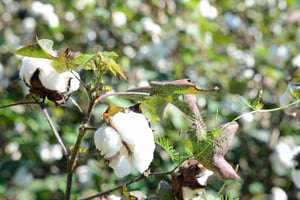
This is patently clear if we look at the rollout of Bt cotton in India (the only officially approved GM crop in that country) which served the bottom line of Monsanto but brought dependency, distress and no durable agronomic benefits for many of India’s small and marginal farmers. Prof A P Gutierrez argues that Bt cotton has effectively placed these farmers in a corporate noose.
Monsanto sucked hundreds of millions of dollars in profit from these cotton farmers, while industry-funded scientists are always keen to push the mantra that rolling out Bt cotton in India uplifted their conditions.
On 24 August 2020, a webinar on Bt cotton in India took place involving Andrew Paul Gutierrez, senior emeritus professor in the College of Natural Resources at the University of California at Berkeley, Keshav Kranthi, former director of Central Institute for Cotton Research in India, Peter Kenmore, former FAO representative in India, and Hans Herren, World Food Prize Laureate.
Dr Herren said that “the failure of Bt cotton” is a classic representation of what an unsound science of plant protection and faulty direction of agricultural development can lead to.
He explained:
“Bt hybrid technology in India represents an error-driven policy that has led to the denial and non-implementation of the real solutions for the revival of cotton in India, which lie in HDSS (high density short season) planting of non-Bt/GMO cotton in pure line varieties of native desi species and American cotton species.”
He argued that a transformation of agriculture and the food system is required; one that entails a shift to agroecology, which includes regenerative, organic, biodynamic, permaculture and natural farming practices.
Dr Kenmore said that Bt cotton is an aging pest control technology:
“It follows the same path worn down by generations of insecticide molecules from arsenic to DDT to BHC to endosulfan to monocrotophos to carbaryl to imidacloprid. In-house research aims for each molecule to be packaged biochemically, legally and commercially before it is released and promoted. Corporate and public policy actors then claim yield increases but deliver no more than temporary pest suppression, secondary pest release and pest resistance.”
Recurrent cycles of crises have sparked public action and ecological field research which creates locally adapted agroecological strategies.
He added that this agroecology:
“…now gathers global support from citizens’ groups, governments and UN FAO. Their robust local solutions in Indian cotton do not require any new molecules, including endo-toxins like in Bt cotton”.
Gutierrez presented the ecological reasons as to why hybrid Bt cotton failed in India: long season Bt cotton introduced in India was incorporated into hybrids that trapped farmers into biotech and insecticide treadmills that benefited GMO seed manufacturers.
He noted:
“The cultivation of long-season hybrid Bt cotton in rainfed areas is unique to India. It is a value capture mechanism that does not contribute to yield, is a major contributor to low yield stagnation and contributes to increasing production costs.”
Gutierrez asserted that increases in cotton farmer suicides are related to the resulting economic distress.
He argued:
“A viable solution to the current GM hybrid system is adoption of improved non-GM high-density short-season fertile cotton varieties.”
Presenting data on yields, insecticide usage, irrigation, fertiliser usage and pest incidence and resistance, Dr Kranthi said an analysis of official statistics (eands.dacnet.nic.in and cotcorp.gov.in) shows that Bt hybrid technology has not been providing any tangible benefits in India either in yield or insecticide usage.
He said that cotton yields are the lowest in the world in Maharashtra, despite being saturated with Bt hybrids and the highest use of fertilisers. Yields in Maharashtra are less than in rainfed Africa where there is hardly any usage of technologies such as Bt hybrids, fertilisers, pesticides or irrigation.
It is revealing that Indian cotton yields rank 36th in the world and have been stagnant in the past 15 years and insecticide usage has been constantly increasing after 2005, despite an increase in area under Bt cotton.
Kranthi argued that research also shows that the Bt hybrid technology has failed the test of sustainability with resistance in pink bollworm to Bt cotton, increasing sucking pest infestation, increasing trends in insecticide and fertiliser usage, increasing costs and negative net returns in 2014 and 2015.
Dr Herren said that GMOs exemplify the case of a technology searching for an application:
“It is essentially about treating symptoms, rather than taking a systems approach to create resilient, productive and bio-diverse food systems in the widest sense and to provide sustainable and affordable solutions in it’s social, environmental and economic dimensions.”
He went on to argue that the failure of Bt cotton is a classic representation of what an unsound science of plant protection and a faulty direction of agricultural development can lead to:
“We need to push aside the vested interests blocking the transformation with the baseless arguments of ‘the world needs more food’ and design and implement policies that are forward-looking… We have all the needed scientific and practical evidence that the agroecological approaches to food and nutrition security work successfully.”
Those who continue to spin Bt cotton in India as a resounding success remain wilfully ignorant of the challenges (documented in the 2019 book by Andrew Flachs – Cultivating Knowledge: Biotechnology, Sustainability and the Human Cost of Cotton Capitalism in India) farmers face in terms of financial distress, increasing pest resistance, dependency on unregulated seed markets, the eradication of environmental learning, the loss of control over their productive means and the biotech-chemical treadmill they are trapped on (this last point is precisely what the industry intended).
However, in recent times, the Indian government in league with the biotech industry has been trying to pass of Bt cotton in the country as a monumental success, thereby promoting its rollout as a template for other GM crops.
In general, across the world the performance of GM crops to date has been questionable, but the pro-GMO lobby has wasted no time in wrenching the issues of hunger and poverty from their political contexts to use notions of ‘helping farmers’ and ‘feeding the world’ as lynchpins of its promotional strategy. There exists a ‘haughty imperialism’ within the pro-GMO scientific lobby that aggressively pushes for a GMO ‘solution’ which is a distraction from the root causes of poverty, hunger and malnutrition and genuine solutions based on food justice and food sovereignty.
The performance of GM crops has been a hotly contested issue and, as highlighted in a 2018 piece by PC Kesavan and MS Swaminathan in the journal Current Science, there is already sufficient evidence to question their efficacy, especially that of herbicide-tolerant crops (which by 2007 already accounted for approximately 80% of biotech-derived crops grown globally) and the devastating impacts on the environment, human health and food security, not least in places like Latin America.
In their paper, Kesavan and Swaminathan argue that GM technology is supplementary and must be need based. In more than 99% of cases, they say that time-honoured conventional breeding is sufficient. In this respect, conventional options and innovations that outperform GM must not be overlooked or side-lined in a rush by powerful interests like the Bill and Melinda Gates Foundation to facilitate the introduction of GM crops into global agriculture; crops which are highly financially lucrative for the corporations behind them.
In Europe, robust regulatory mechanisms are in place for GMOs because it is recognised that GM food/crops are not substantially equivalent to their non-GM counterparts. Numerous studies have highlighted the flawed premise of ‘substantial equivalence’. Furthermore, from the outset of the GMO project, the side-lining of serious concerns about the technology has occurred and, despite industry claims to the contrary, there is no scientific consensus on the health impacts of GM crops as noted by Hilbeck et al (Environmental Sciences Europe, 2015). Adopting a precautionary principle where GM is concerned is therefore a valid approach.
Both the Cartagena Protocol and Codex share a precautionary approach to GM crops and foods, in that they agree that GM differs from conventional breeding and that safety assessments should be required before GMOs are used in food or released into the environment. There is sufficient reason to hold back on commercialising GM crops and to subject each GMO to independent, transparent environmental, social, economic and health impact evaluations.
Critics’ concerns cannot therefore be brushed aside by claims from industry lobbyists that ‘the science’ is decided and the ‘facts’ about GM are indisputable. Such claims are merely political posturing and part of a strategy to tip the policy agenda in favour of GM.
Regardless, global food insecurity and malnutrition are not the result of a lack of productivity. As long as food injustice remains an inbuilt feature of the global food regime, the rhetoric of GM being necessary for feeding the world will be seen for what it is: bombast.
Take India, for instance. Although it fares poorly in world hunger assessments, the country has achieved self-sufficiency in food grains and has ensured there is enough food (in terms of calories) available to feed its entire population. It is the world’s largest producer of milk, pulses and millets and the second-largest producer of rice, wheat, sugarcane, groundnuts, vegetables, fruit and cotton.
According to FAO, food security is achieved when all people, at all times, have physical, social and economic access to sufficient, safe and nutritious food that meets their dietary needs and food preferences for an active and healthy life.
But food security for many Indians remains a distant dream. Large sections of India’s population do not have enough food available to remain healthy nor do they have sufficiently diverse diets that provide adequate levels of micronutrients. The Comprehensive National Nutrition Survey 2016-18 is the first-ever nationally representative nutrition survey of children and adolescents in India. It found that 35% of children under five were stunted, 22% of school-age children were stunted while 24% of adolescents were thin for their age.
People are not hungry in India because its farmers do not produce enough food. Hunger and malnutrition result from various factors, including inadequate food distribution, (gender) inequality and poverty; in fact, the country continues to export food while millions remain hungry. It’s a case of ‘scarcity’ amid abundance.
Where farmers’ livelihoods are concerned, the pro-GMO lobby says GM will boost productivity and help secure cultivators a better income. Again, this is misleading: it ignores crucial political and economic contexts. Even with bumper harvests, Indian farmers still find themselves in financial distress.
India’s farmers are not experiencing hardship due to low productivity. They are reeling from the effects of neoliberal policies, years of neglect and a deliberate strategy to displace smallholder agriculture at the behest of the World Bank and predatory global agri-food corporations. Little wonder then that the calorie and essential nutrient intake of the rural poor has drastically fallen. No number of GMOs will put any of this right.
Nevertheless, the pro-GMO lobby, both outside of India and within, has twisted the situation for its own ends to mount intensive PR campaigns to sway public opinion and policy makers.
Golden Rice
The industry has for many years been promoting Golden Rice. It has long argued that genetically engineered Golden Rice is a practical way to provide poor farmers in remote areas with a subsistence crop capable of adding much-needed vitamin A to local diets. Vitamin A deficiency is a problem in many poor countries in the Global South and leaves millions at high risk for infection, diseases and other maladies, such as blindness.
Some scientists believe that Golden Rice, which has been developed with funding from the Rockefeller Foundation, could help save the lives of around 670,000 children who die each year from Vitamin A deficiency and another 350,000 who go blind.
Meanwhile, critics say there are serious issues with Golden Rice and that alternative approaches to tackling vitamin A deficiency should be implemented. Greenpeace and other environmental groups say the claims being made by the pro-Golden Rice lobby are misleading and are oversimplifying the actual problems in combating vitamin A deficiency.
Many critics regard Golden Rice as an over-hyped Trojan horse that biotechnology corporations and their allies hope will pave the way for the global approval of other more profitable GM crops. The Rockefeller Foundation might be regarded as a ‘philanthropic’ entity but its track record indicates it has been very much part of an agenda which facilitates commercial and geopolitical interests to the detriment of indigenous agriculture and local and national economies.
As Britain’s Environment Secretary in 2013, the now disgraced Owen Paterson claimed that opponents of GM were “casting a dark shadow over attempts to feed the world”. He called for the rapid roll-out of vitamin A-enhanced rice to help prevent the cause of up to a third of the world’s child deaths. He claimed:
“It’s just disgusting that little children are allowed to go blind and die because of a hang-up by a small number of people about this technology. I feel really strongly about it. I think what they do is absolutely wicked.”
Robin McKie, science writer for The Observer, wrote a piece on Golden Rice that uncritically presented all the usual industry talking points. On Twitter, The Observer’s Nick Cohen chimed in with his support by tweeting:
“There is no greater example of ignorant Western privilege causing needless misery than the campaign against genetically modified golden rice.”
Whether it comes from the likes of corporate lobbyist Patrick Moore, political lobbyist Owen Paterson, biotech spin-merchant Mark Lynas, well-remunerated journalists or from the lobbyist CS Prakash who engages more in spin than fact, the rhetoric takes the well-worn cynically devised PR line that anti-GM activists and environmentalists are little more than privileged, affluent people residing in rich countries and are denying the poor the supposed benefits of GM crops.
Despite the smears and emotional blackmail employed by supporters of Golden Rice, in a 2016 article in the journal Agriculture & Human Values Glenn Stone and Dominic Glover found little evidence that anti-GM activists are to blame for Golden Rice’s unfulfilled promises. Golden rice was still years away from field introduction and even when ready may fall far short of lofty health benefits claimed by its supporters.
Stone stated that:
“Golden Rice is still not ready for the market, but we find little support for the common claim that environmental activists are responsible for stalling its introduction. GMO opponents have not been the problem.”
He added that the rice simply has not been successful in test plots of the rice breeding institutes in the Philippines, where the leading research is being done. While activists did destroy one Golden Rice test plot in a 2013 protest, it is unlikely that this action had any significant impact on the approval of Golden Rice.
Stone said:
“Destroying test plots is a dubious way to express opposition, but this was only one small plot out of many plots in multiple locations over many years. Moreover, they have been calling Golden Rice critics ‘murderers’ for over a decade.”
Believing that Golden Rice was originally a promising idea backed by good intentions, Stone argued:
“But if we are actually interested in the welfare of poor children – instead of just fighting over GMOs – then we have to make unbiased assessments of possible solutions. The simple fact is that after 24 years of research and breeding, Golden Rice is still years away from being ready for release.”
Researchers still had problems developing beta carotene-enriched strains that yield as well as non-GM strains already being grown by farmers. Stone and Glover point out that it is still unknown if the beta carotene in Golden Rice can even be converted to vitamin A in the bodies of badly undernourished children. There also has been little research on how well the beta carotene in Golden Rice will hold up when stored for long periods between harvest seasons or when cooked using traditional methods common in remote rural locations.
Claire Robinson, an editor at GMWatch, has argued that the rapid degradation of beta-carotene in the rice during storage and cooking means it is not a solution to vitamin A deficiency in the developing world. There are also various other problems, including absorption in the gut and the low and varying levels of beta-carotene that may be delivered by Golden Rice in the first place.
In the meantime, Glenn Stone says that, as the development of Golden Rice creeps along, the Philippines has managed to slash the incidence of Vitamin A deficiency by non-GM methods.
The evidence presented here might lead us to question why supporters of Golden Rice continue to smear critics and engage in abuse and emotional blackmail when activists are not to blame for the failure of Golden Rice to reach the commercial market. Whose interests are they really serving in pushing so hard for this technology?
In 2011, Marcia Ishii-Eiteman, a senior scientist with a background in insect ecology and pest management asked a similar question:
“Who oversees this ambitious project, which its advocates claim will end the suffering of millions?”
She answered her question by stating:
“An elite, so-called Humanitarian Board where Syngenta sits – along with the inventors of Golden Rice, Rockefeller Foundation, USAID and public relations and marketing experts, among a handful of others. Not a single farmer, indigenous person or even an ecologist or sociologist to assess the huge political, social and ecological implications of this massive experiment. And the leader of IRRI’s Golden Rice project is none other than Gerald Barry, previously Director of Research at Monsanto.”
Sarojeni V. Rengam, executive director of Pesticide Action Network Asia and the Pacific, called on the donors and scientists involved to wake up and do the right thing:
“Golden Rice is really a ‘Trojan horse’; a public relations stunt pulled by the agribusiness corporations to garner acceptance of GE crops and food. The whole idea of GE seeds is to make money… we want to send out a strong message to all those supporting the promotion of Golden Rice, especially donor organisations, that their money and efforts would be better spent on restoring natural and agricultural biodiversity rather than destroying it by promoting monoculture plantations and genetically engineered (GE) food crops.”
And she makes a valid point. To tackle disease, malnutrition and poverty, you have to first understand the underlying causes – or indeed want to understand them.
Renowned writer and academic Walden Bello notes that the complex of policies that pushed the Philippines into an economic quagmire over the past 30 years is due to ‘structural adjustment’, involving prioritising debt repayment, conservative macroeconomic management, huge cutbacks in government spending, trade and financial liberalisation, privatisation and deregulation, the restructuring of agriculture and export-oriented production.
And that restructuring of the agrarian economy is something touched on by Claire Robinson who notes that leafy green vegetables used to be grown in backyards as well as in rice (paddy) fields on the banks between the flooded ditches in which the rice grew.
Ditches also contained fish, which ate pests. People thus had access to rice, green leafy veg and fish – a balanced diet that gave them a healthy mix of nutrients, including plenty of beta-carotene.
But indigenous crops and farming systems have been replaced by monocultures dependent on chemical inputs. Green leafy veg were killed off with pesticides, artificial fertilisers were introduced and the fish could not live in the resulting chemically contaminated water. Moreover, decreased access to land meant that many people no longer had backyards containing leafy green veg. People only had access to an impoverished diet of rice alone, laying the foundation for the supposed Golden Rice ‘solution’.
Whether it concerns The Philippines, Ethiopia, Somalia or Africa as a whole, the effects of IMF/World Bank ‘structural adjustments’ have devastated agrarian economies and made them dependent on Western agribusiness, manipulated markets and unfair trade rules. And GM is now offered as the ‘solution’ for tackling poverty-related diseases. The very corporations which gained from restructuring agrarian economies now want to profit from the havoc caused.
In 2013, the Soil Association argued that the poor are suffering from broader malnourishment than just vitamin A deficiency; the best solution is to use supplementation and fortification as emergency sticking-plasters and then for implementing measures which tackle the broader issues of poverty and malnutrition.
Tackling the wider issues includes providing farmers with a range of seeds, tools and skills necessary for growing more diverse crops to target broader issues of malnutrition. Part of this entails breeding crops high in nutrients; for instance, the creation of sweet potatoes that grow in tropical conditions, cross-bred with vitamin A rich orange sweet potatoes, which grow in the USA. There are successful campaigns providing these potatoes, a staggering five times higher in vitamin A than Golden Rice, to farmers in Uganda and Mozambique.
Blindness in developing countries could have been eradicated years ago if only the money, research and publicity put into Golden Rice over the last 20 years had gone into proven ways of addressing Vitamin A deficiency.
However, instead of pursuing genuine solutions, we continue to get smears and pro-GM spin in an attempt to close down debate.
Many of the traditional agroecological practices employed by smallholders are now recognised as sophisticated and appropriate for high-productive, nutritious, sustainable agriculture.
Agroecological principles represent a more integrated low-input systems approach to food and agriculture that prioritises local food security, local calorific production, cropping patterns and diverse nutrition production per acre, water table stability, climate resilience, good soil structure and the ability to cope with evolving pests and disease pressures. Ideally, such a system would be underpinned by a concept of food sovereignty, based on optimal self-sufficiency, the right to culturally appropriate food and local ownership and stewardship of common resources, such as land, water, soil and seeds.
Value capture
Traditional production systems rely on the knowledge and expertise of farmers in contrast to imported ‘solutions’. Yet, if we take cotton cultivation in India as an example, farmers continue to be nudged away from traditional methods of farming and are being pushed towards (illegal) GM herbicide-tolerant cotton seeds.
Researchers Glenn Stone and Andrew Flachs note the results of this shift from traditional practices to date does not appear to have benefited farmers. This is not about giving farmers ‘choice’ where GM seeds and associated chemicals are concerned (another much-promoted industry talking point). It is more about GM seed companies and weedicide manufactures seeking to leverage a highly lucrative market.
The potential for herbicide market growth in India is enormous. The objective involves opening India to GM seeds with herbicide tolerance traits, the biotechnology industry’s biggest money maker by far (86% of the world’s GM crop acres in 2015 contained plants resistant to glyphosate or glufosinate and there is a new generation of crops resistant to 2,4-D coming through).
The aim is to break farmers’ traditional pathways and move them onto corporate biotech/chemical treadmills for the benefit of industry.
It is revealing that, according to a report on the ruralindiaonline.org website, in a region of southern Odisha, farmers have been pushed towards a reliance on (illegal) expensive GM herbicide tolerant cotton seeds and have replaced their traditional food crops. Farmers used to sow mixed plots of heirloom seeds, which had been saved from family harvests the previous year and would yield a basket of food crops. They are now dependent on seed vendors, chemical inputs and a volatile international market to make a living and are no longer food secure.
Calls for agroecology and highlighting the benefits of traditional, small-scale agriculture are not based on a romantic yearning for the past or ‘the peasantry’. Available evidence suggests that smallholder farming using low-input methods is more productive in overall output than large-scale industrial farms and can be more profitable and resilient to climate change. It is for good reason that numerous high-level reports call for investment in this type of agriculture.
Despite the pressures, including the fact that globally industrial agriculture grabs 80% of subsidies and 90% of research funds, smallholder agriculture plays a major role in feeding the world.
That is a massive amount of subsidies and funds to support a system that is only made profitable as a result of these financial injections and because agri-food oligopolies externalise the massive health, social and environmental costs of their operations.
But policy makers tend to accept that profit-driven transnational corporations have a legitimate claim to be owners and custodians of natural assets (the ‘commons’). These corporations, their lobbyists and their political representatives have succeeded in cementing a ‘thick legitimacy’ among policy makers for their vision of agriculture.
Common ownership and management of these assets embodies the notion of people working together for the public good. However, these resources have been appropriated by national states or private entities. For instance, Cargill captured the edible oils processing sector in India and in the process put many thousands of village-based workers out of work; Monsanto conspired to design a system of intellectual property rights that allowed it to patent seeds as if it had manufactured and invented them; and India’s indigenous peoples have been forcibly ejected from their ancient lands due to state collusion with mining companies.
Those who capture essential common resources seek to commodify them – whether trees for timber, land for real estate or agricultural seeds – create artificial scarcity and force everyone else to pay for access. The process involves eradicating self-sufficiency.
From World Bank ‘enabling the business of agriculture’ directives to the World Trade Organization ‘agreement on agriculture’ and trade related intellectual property agreements, international bodies have enshrined the interests of corporations that seek to monopolise seeds, land, water, biodiversity and other natural assets that belong to us all. These corporations, the promoters of GMO agriculture, are not offering a ‘solution’ for farmers’ impoverishment or hunger; GM seeds are little more than a value capture mechanism.
To evaluate the pro-GMO lobby’s rhetoric that GM is needed to ‘feed the world’, we first need to understand the dynamics of a globalised food system that fuels hunger and malnutrition against a backdrop of (subsidised) food overproduction. We must acknowledge the destructive, predatory dynamics of capitalism and the need for agri-food giants to maintain profits by seeking out new (foreign) markets and displacing existing systems of production with ones that serve their bottom line. And we need to reject a deceptive ‘haughty imperialism’ within the pro-GMO scientific lobby which aggressively pushes for a GMO ‘solution’.
Technocratic meddling has already destroyed or undermined agrarian ecosystems that draw on centuries of traditional knowledge and are increasingly recognised as valid approaches to secure food security, as outlined for instance in the paper Food Security and Traditional Knowledge in India in the Journal of South Asian Studies.
Marika Vicziany and Jagjit Plahe, the authors of that paper, note that for thousands of years Indian farmers have experimented with different plant and animal specimens acquired through migration, trading networks, gift exchanges or accidental diffusion. They note the vital importance of traditional knowledge for food security in India and the evolution of such knowledge by learning and doing, trial and error. Farmers possess acute observation, good memory for detail and transmission through teaching and storytelling.
The very farmers whose seeds and knowledge have been appropriated by corporations to be bred for proprietary chemical-dependent hybrids and now to be genetically engineered.
Large corporations with their seeds and synthetic chemical inputs have eradicated traditional systems of seed exchange. They have effectively hijacked seeds, pirated germ plasm that farmers developed over millennia and have ‘rented’ the seeds back to farmers. Genetic diversity among food crops has been drastically reduced. The eradication of seed diversity went much further than merely prioritising corporate seeds: the Green Revolution deliberately side-lined traditional seeds kept by farmers that were actually higher yielding and climate appropriate.
However, under the guise of ‘climate emergency’, we are now seeing a push for the Global South to embrace the Gates’ vision for a one-world agriculture (’Ag One’) dominated by global agribusiness and the tech giants. But it is the so-called developed nations and the rich elites that have plundered the environment and degraded the natural world.
The onus is on the richer nations and their powerful agri-food corporations to put their own house in order and to stop rainforest destruction for ranches and monocrop commodities, to stop pesticide run-offs into the oceans, to curtail a meat industry that has grown out of all proportion so it serves as a ready-made market for the overproduction and surplus of animal feed crops like corn, to stop the rollout of GMO glyphosate-dependent agriculture and to put a stop to a global system of food based on long supply chains that relies on fossil fuels at every stage.
To say that one model of a (GMO-based) agriculture must now be accepted by all countries is a continuation of a colonialist mindset that has already wrecked indigenous food systems which worked with their own seeds and practices that were in in harmony with natural ecologies.
Chapter III
Agroecology
Localisation and Food Sovereignty
Industry figures and scientists claim pesticide use and GMOs are necessary in ‘modern agriculture’. But this is not the case: there is now sufficient evidence to suggest otherwise. It is simply not necessary to have our bodies contaminated with toxic agrochemicals, regardless of how much the industry tries to reassure us that they are present in ‘safe’ levels.
There is also the industry-promoted narrative that if you question the need for synthetic pesticides or GMOs in ‘modern agriculture’, you are somehow ignorant or even ‘anti-science’. This is again not true. What does ‘modern agriculture’ even mean? It means a system adapted to meet the demands of global agri-capital and its international markets and supply chains.
As writer and academic Benjamin R Cohen recently stated:
“Meeting the needs of modern agriculture – growing produce that can be shipped long distances and hold up in the store and at home for more than a few days – can result in tomatoes that taste like cardboard or strawberries that aren’t as sweet as they used to be. Those are not the needs of modern agriculture. They are the needs of global markets.”
What is really being questioned is a policy paradigm that privileges a certain model of social and economic development and a certain type of agriculture: urbanisation, giant supermarkets, global markets, long supply chains, external proprietary inputs (seeds, synthetic pesticides and fertilisers, machinery, etc), chemical-dependent monocropping, highly processed food and market (corporate) dependency at the expense of rural communities, small independent enterprises and smallholder farms, local markets, short supply chains, on-farm resources, diverse agroecological cropping, nutrient dense diets and food sovereignty.
It is clear that an alternative agri-food system is required.
The 2009 report Agriculture at a Crossroads by the International Assessment of Agricultural Knowledge, Science and Technology for Development, produced by 400 scientists and supported by 60 countries, recommended agroecology to maintain and increase the productivity of global agriculture. It cites the largest study of ‘sustainable agriculture’ in the Global South, which analysed 286 projects covering 37 million hectares in 57 countries and found that on average crop yields increased by 79% (the study also included ‘resource conserving’ non-organic conventional approaches).
The report concludes that agroecology provides greatly improved food security and nutritional, gender, environmental and yield benefits compared to industrial agriculture.
The message conveyed in the paper Reshaping the European Agro-food System and Closing its Nitrogen Cycle: The potential of combining dietary change, agroecology, and circularity (2020), which appeared in the journal One Earth, is that an organic-based, agri-food system could be implemented in Europe and would allow a balanced coexistence between agriculture and the environment. This would reinforce Europe’s autonomy, feed the predicted population in 2050, allow the continent to continue to export cereals to countries which need them for human consumption and substantially reduce water pollution and toxic emissions from agriculture.

The paper by Gilles Billen et al follows a long line of studies and reports which have concluded that organic agriculture is vital for guaranteeing food security, rural development, better nutrition and sustainability.
In the 2006 book The Global Development of Organic Agriculture: Challenges and Prospects, Neils Halberg and his colleagues argue that there are still more than 740 million food insecure people (at least 100 million more today), the majority of whom live in the Global South. They say if a conversion to organic farming of approximately 50% of the agricultural area in the Global South were to be carried out, it would result in increased self-sufficiency and decreased net food imports to the region.
In 2007, the FAO noted that organic models increase cost-effectiveness and contribute to resilience in the face of climatic stress. The FAO concluded that by managing biodiversity in time (rotations) and space (mixed cropping) organic farmers can use their labour and environmental factors to intensify production in a sustainable way and organic agriculture could break the vicious circle of farmer indebtedness for proprietary agricultural inputs.
Of course, organic agriculture and agroecology are not necessarily one and the same. Whereas organic agriculture can still be part of the prevailing globalised food regime dominated by giant agri-food conglomerates, agroecology uses organic practices but is ideally rooted in the principles of localisation, food sovereignty and self-reliance.
The FAO recognises that agroecology contributes to improved food self-reliance, the revitalisation of smallholder agriculture and enhanced employment opportunities. It has argued that organic agriculture could produce enough food on a global per capita basis for the current world population but with reduced environmental impact than conventional agriculture.
In 2012, Deputy Secretary General of the UN Conference on Trade and Development (UNCTAD) Petko Draganov stated that expanding Africa’s shift towards organic farming will have beneficial effects on the continent’s nutritional needs, the environment, farmers’ incomes, markets and employment.
A meta analysis conducted by the UN Environment Programme (UNEP) and UNCTAD (2008) assessed 114 cases of organic farming in Africa. The two UN agencies concluded that organic agriculture can be more conducive to food security in Africa than most conventional production systems and that it is more likely to be sustainable in the long term.
There are numerous other studies and projects which testify to the efficacy of organic farming, including those from the Rodale Institute, the UN Green Economy Initiative, the Women’s Collective of Tamil Nadu, Newcastle University and Washington State University. We also need look no further than the results of organic-based farming in Malawi.
But Cuba is the one country in the world that has made the biggest changes in the shortest time in moving away from industrial chemical-intensive agriculture.
Professor of Agroecology Miguel Altieri notes that due to the difficulties Cuba experienced as a result of the fall of the USSR it moved towards organic and agroecological techniques in the 1990s. From 1996 to 2005, per capita food production in Cuba increased by 4.2% yearly during a period when production was stagnant across the wider region.
By 2016, Cuba had 383,000 urban farms, covering 50,000 hectares of otherwise unused land producing more than 1.5 million tons of vegetables. The most productive urban farms yield up to 20 kg of food per square metre, the highest rate in the world, using no synthetic chemicals. Urban farms supply 50 to 70% or more of all the fresh vegetables consumed in Havana and Villa Clara.
It has been calculated by Altieri and his colleague Fernando R Funes-Monzote that if all peasant farms and cooperatives adopted diversified agroecological designs, Cuba would be able to produce enough to feed its population, supply food to the tourist industry and even export some food to help generate foreign currency.
A systems approach
Agroecological principles represent a shift away from the reductionist yield-output chemical-intensive industrial paradigm, which results in among other things enormous pressures on human health, soil and water resources.
Agroecology is based on traditional knowledge and modern agricultural research, utilising elements of contemporary ecology, soil biology and the biological control of pests. This system combines sound ecological management by using on-farm renewable resources and privileging endogenous solutions to manage pests and disease without the use of agrochemicals and corporate seeds.
Academic Raj Patel outlines some of the basic practices of agroecology by saying that nitrogen-fixing beans are grown instead of using inorganic fertilizer, flowers are used to attract beneficial insects to manage pests and weeds are crowded out with more intensive planting. The result is a sophisticated polyculture: many crops are produced simultaneously, instead of just one.
However, this model is a direct challenge to the interests of global agribusiness interests. With the emphasis on localisation and on-farm inputs, agroecology does not require dependency on proprietary chemicals, pirated patented seeds and knowledge nor long-line global supply chains.
Agroecology stands in sharp contrast to the prevailing industrial chemical-intensive model of farming. That model is based on a reductionist mindset which is fixated on a narrow yield-output paradigm that is unable or more likely unwilling to grasp an integrated social-cultural-economic-agronomic systems approach to food and agriculture.
Localised, democratic food systems based on agroecological principles and short supply chains are required. An approach that leads to local and regional food self-sufficiency rather than dependency on faraway corporations and their expensive environment-damaging inputs. If the last two years have shown anything due to the closing down of much of the global economy, it is that long supply chains and global markets are vulnerable to shocks. Indeed, hundreds of millions are now facing food shortages as a result of the various economic lockdowns that have been imposed.
In 2014, a report by the then UN special rapporteur Olivier De Schutter concluded that by applying agroecological principles to democratically controlled agricultural systems we can help to put an end to food crises and poverty challenges.
But Western corporations and foundations are jumping on the ‘sustainability’ bandwagon by undermining traditional agriculture and genuine sustainable agri-food systems and packaging their corporate takeover of food as some kind of ‘green’ environmental mission.
The Gates Foundation through its ‘Ag One’ initiative is pushing for one type of agriculture for the whole world. A top-down approach regardless of what farmers or the public need or want. A system based on corporate consolidation and centralisation.
But given the power and influence of those pushing for such a model, is this merely inevitable? Not according to the International Panel of Experts on Sustainable Food Systems, which has released a report in collaboration with the ETC Group: ‘A Long Food Movement: Transforming Food Systems by 2045‘.
It calls for civil society and social movements – grassroots organisations, international NGOs, farmers’ and fishers’ groups, cooperatives and unions – to collaborate more closely to transform financial flows, governance structures and food systems from the ground up.
The report’s lead author, Pat Mooney, says that agribusiness has a very simple message: the cascading environmental crisis can be resolved by powerful new genomic and information technologies that can only be developed if governments unleash the entrepreneurial genius, deep pockets and risk-taking spirit of the most powerful corporations.
Mooney notes that we have had similar messages based on emerging technology for decades but the technologies either did not show up or fell flat and the only thing that grew were the corporations.
Although Mooney argues that new genuinely successful alternatives like agroecology are frequently suppressed by the industries they imperil, he states that civil society has a remarkable track record in fighting back, not least in developing healthy and equitable agroecological production systems, building short (community-based) supply chains and restructuring and democratising governance systems.
And he has a point. A few years ago, the Oakland Institute released a report on 33 case studies which highlighted the success of agroecological agriculture across Africa in the face of climate change, hunger and poverty. The studies provide facts and figures on how agricultural transformation can yield immense economic, social, and food security benefits while ensuring climate justice and restoring soils and the environment.
The research highlights the multiple benefits of agroecology, including affordable and sustainable ways to boost agricultural yields while increasing farmers’ incomes, food security and crop resilience.
The report described how agroecology uses a wide variety of techniques and practices, including plant diversification, intercropping, the application of mulch, manure or compost for soil fertility, the natural management of pests and diseases, agroforestry and the construction of water management structures.
There are many other examples of successful agroecology and of farmers abandoning Green Revolution thought and practices to embrace it.
Upscaling
In an interview on the Farming Matters website, Million Belay sheds light on how agroecological agriculture is the best model for Africa. Belay explains that one of the greatest agroecological initiatives started in 1995 in Tigray, Northern Ethiopia, and continues today.
It began with four villages and after good results, it was scaled up to 83 villages and finally to the whole Tigray Region. It was recommended to the Ministry of Agriculture to be scaled up at the national level. The project has now expanded to six regions of Ethiopia.
The fact that it was supported with research by the Ethiopian University at Mekele has proved to be critical in convincing decision makers that these practices work and are better for both the farmers and the land.
Bellay describes an agroecological practice that spread widely across East Africa – ‘push-pull’. This method manages pests through selective intercropping with important fodder species and wild grass relatives, in which pests are simultaneously repelled – or pushed – from the system by one or more plants and are attracted to – or pulled – toward ‘decoy’ plants, thereby protecting the crop from infestation.
Push-pull has proved to be very effective at biologically controlling pest populations in fields, reducing significantly the need for pesticides, increasing production, especially for maize, increasing income to farmers, increasing fodder for animals and, due to that, increasing milk production, and improving soil fertility.
By 2015, the number of farmers using this practice had increased to 95,000. One of the bedrocks of success is the incorporation of cutting-edge science through the collaboration of the International Center of Insect Physiology and Ecology and the Rothamsted Research Station (UK) who have worked in East Africa for more than 15 years on an effective ecologically based pest management solution for stem borers and striga.
It shows what can be achieved with the support of key institutions, including government departments and research institutions.
In Brazil, for instance, administrations have supported peasant agriculture and agroecology by developing supply chains with public sector schools and hospitals (Food Acquisition Programme). This secured good prices and brought farmers together. It came about by social movements applying pressure on the government to act.
The federal government also brought native seeds and distributed them to farmers across the country, which was important for combatting the advance of the corporations as many farmers had lost access to native seeds.
But agroecology should not just be regarded as something for the Global South. Food First Executive Director Eric Holtz-Gimenez argues that it offers concrete, practical solutions to many of the world’s problems that move beyond (but which are linked to) agriculture. In doing so, it challenges – and offers alternatives to – prevailing moribund doctrinaire neoliberal economics.
The scaling up of agroecology can tackle hunger, malnutrition, environmental degradation and climate change. By creating securely paid labour-intensive agricultural work in the richer countries, it can also address the interrelated links between labour offshoring and the displacement of rural populations elsewhere who end up in sweat shops to carry out the outsourced jobs: the two-pronged process of neoliberal globalisation that has undermined the economies of the US and UK and which is displacing existing indigenous food production systems and undermining the rural infrastructure in places like India to produce a reserve army of cheap labour.
Various official reports have argued that to feed the hungry and secure food security in low-income regions we need to support small farms and diverse, sustainable agroecological methods of farming and strengthen local food economies.
Olivier De Schutter says:
“To feed nine billion people in 2050, we urgently need to adopt the most efficient farming techniques available. Today’s scientific evidence demonstrates that agroecological methods outperform the use of chemical fertilizers in boosting food production where the hungry live, especially in unfavourable environments.”
De Schutter indicates that small-scale farmers can double food production within 10 years in critical regions by using ecological methods. Based on an extensive review of scientific literature, the study he was involved in calls for a fundamental shift towards agroecology as a way to boost food production and improve the situation of the poorest. The report calls on states to implement a fundamental shift towards agroecology.
The success stories of agroecology indicate what can be achieved when development is placed firmly in the hands of farmers themselves. The expansion of agroecological practices can generate a rapid, fair and inclusive development that can be sustained for future generations. This model entails policies and activities that come from the bottom-up and which the state can then invest in and facilitate.
A decentralised system of food production with access to local markets supported by proper roads, storage and other infrastructure must take priority ahead of exploitative international markets dominated and designed to serve the needs of global capital.
Countries and regions must ultimately move away from a narrowly defined notion of food security and embrace the concept of food sovereignty. ‘Food security’ as defined by the Gates Foundation and agribusiness conglomerates has merely been used to justify the rollout of large-scale, industrialised corporate farming based on specialised production, land concentration and trade liberalisation. This has led to the widespread dispossession of small producers and global ecological degradation.
Across the world, we have seen a change in farming practices towards mechanised industrial-scale chemical-intensive monocropping and the undermining or eradication of rural economies, traditions and cultures. We see the ‘structural adjustment’ of regional agriculture, spiralling input costs for farmers who have become dependent on proprietary seeds and technologies and the destruction of food self-sufficiency.
Food sovereignty encompasses the right to healthy and culturally appropriate food and the right of people to define their own food and agriculture systems. ‘Culturally appropriate’ is a nod to the foods people have traditionally produced and eaten as well as the associated socially embedded practices which underpin community and a sense of communality.
But it goes beyond that. Our connection with ‘the local’ is also very much physiological.
People have a deep microbiological connection to local soils, processing and fermentation processes which affect the gut microbiome – the up to six pounds of bacteria, viruses and microbes akin to human soil. And as with actual soil, the microbiome can become degraded according to what we ingest (or fail to ingest). Many nerve endings from major organs are located in the gut and the microbiome effectively nourishes them. There is ongoing research taking place into how the microbiome is disrupted by the modern globalised food production/processing system and the chemical bombardment it is subjected to.
Capitalism colonises (and degrades) all aspects of life but is colonising the very essence of our being – even on a physiological level. With their agrochemicals and food additives, powerful companies are attacking this ‘soil’ and with it the human body. As soon as we stopped eating locally grown, traditionally processed food cultivated in healthy soils and began eating food subjected to chemical-laden cultivation and processing activities, we began to change ourselves.
Along with cultural traditions surrounding food production and the seasons, we also lost our deep-rooted microbiological connection with our localities. It was replaced with corporate chemicals and seeds and global food chains dominated by the likes of Monsanto (now Bayer), Nestle and Cargill.
Aside from affecting the functioning of major organs, neurotransmitters in the gut affect our moods and thinking. Alterations in the composition of the gut microbiome have been implicated in a wide range of neurological and psychiatric conditions, including autism, chronic pain, depression and Parkinson’s.
Science writer and neurobiologist Mo Costandi has discussed gut bacteria and their balance and importance in brain development. Gut microbes controls the maturation and function of microglia, the immune cells that eliminate unwanted synapses in the brain; age-related changes to gut microbe composition might regulate myelination and synaptic pruning in adolescence and could, therefore, contribute to cognitive development. Upset those changes and there are going to be serious implications for children and adolescents.
In addition, environmentalist Rosemary Mason notes that increasing levels of obesity are associated with low bacterial richness in the gut. Indeed, it has been noted that tribes not exposed to the modern food system have richer microbiomes. Mason lays the blame squarely at the door of agrochemicals, not least the use of the world’s most widely used herbicide, glyphosate, a strong chelator of essential minerals, such as cobalt, zinc, manganese, calcium, molybdenum and sulphate. Mason argues that it also kills off beneficial gut bacteria and allows toxic bacteria.
If policy makers were to prioritise agroecology to the extent Green Revolution practices and technology have been pushed, many of the problems surrounding poverty, unemployment and urban migration could be solved.
The 2015 Declaration of the International Forum for Agroecology argues for building grass-root local food systems that create new rural-urban links, based on truly agroecological food production. It says that agroecology should not be co-opted to become a tool of the industrial food production model; it should be the essential alternative to it.
The declaration stated that agroecology is political and requires local producers and communities to challenge and transform structures of power in society, not least by putting the control of seeds, biodiversity, land and territories, waters, knowledge, culture and the commons in the hands of those who feed the world.
However, the biggest challenge for upscaling agroecology lies in the push by big business for commercial agriculture and attempts to marginalize agroecology. Unfortunately, global agribusiness concerns have secured the status of ‘thick legitimacy’ based on an intricate web of processes successfully spun in the scientific, policy and political arenas. This perceived legitimacy derives from the lobbying, financial clout and political power of agribusiness conglomerates which set out to capture or shape government departments, public institutions, the agricultural research paradigm, international trade and the cultural narrative concerning food and agriculture.
Chapter IV
Distorting Development
Corporate Capture and Imperialist Intent
Many governments are working hand-in-glove with the agritech/agribusiness industry to promote its technology over the heads of the public. Scientific bodies and regulatory agencies that supposedly serve the public interest have been subverted by the presence of key figures with industry links, while the powerful industry lobby holds sway over bureaucrats and politicians.
In 2014, Corporate Europe Observatory released a critical report on the European Commission over the previous five years. The report concluded that the commission had been a willing servant of a corporate agenda. It had sided with agribusiness on GMOs and pesticides. Far from shifting Europe to a more sustainable food and agriculture system, the opposite had happened, as agribusiness and its lobbyists continued to dominate the Brussels scene.

Consumers in Europe reject GM food, but the commission had made various attempts to meet the demands from the biotech sector to allow GMOs into Europe, aided by giant food companies, such as Unilever, and the lobby group FoodDrinkEurope.
The report concluded that the commission had eagerly pursued a corporate agenda in all the areas investigated and pushed for policies in sync with the interests of big business. It had done this in the apparent belief that such interests are synonymous with the interests of society at large.
Little has changed since. In December 2021, Friends of the Earth Europe (FOEE) noted that big agribusiness and biotech corporations are currently pushing for the European Commission to remove any labelling and safety checks for new genomic techniques. Since the beginning of their lobbying efforts (in 2018), these corporations have spent at least €36 million lobbying the European Union and have had 182 meetings with European commissioners, their cabinets and director generals: more than one meeting a week.
According to FOEE, the European Commission seems more than willing to put the lobby’s demands into a new law that would include weakened safety checks and bypass GMO labelling.
But corporate influence over key national and international bodies is nothing new.
In October 2020, CropLife International said that its new strategic partnership with the FAO would contribute to sustainable food systems. It added that it was a first for the industry and the FAO and demonstrates the determination of the plant science sector to work constructively in a partnership where common goals are shared.
A powerful trade and lobby association, CropLife International counts among its members the world’s largest agricultural biotechnology and pesticide businesses: Bayer, BASF, Syngenta, FMC, Corteva and Sumitoma Chemical. Under the guise of promoting plant science technology, the association first and foremost looks after the interests (bottom line) of its member corporations.
A 2020 joint investigation by Unearthed (Greenpeace) and Public Eye (a human rights NGO) revealed that BASF, Corteva, Bayer, FMC and Syngenta bring in billions of dollars by selling toxic chemicals found by regulatory authorities to pose serious health hazards.
It also found more than a billion dollars of their sales came from chemicals – some now banned in European markets – that are highly toxic to bees. Over two thirds of these sales were made in low- and middle-income countries like Brazil and India.
The Political Declaration of the People’s Autonomous Response to the UN Food Systems Summit in 2021 stated that global corporations are increasingly infiltrating multilateral spaces to co-opt the narrative of sustainability to secure further industrialisation, the extraction of wealth and labour from rural communities and the concentration of corporate power.
With this in mind, a major concern is that CropLife International will now seek to derail the FAO’s commitment to agroecology and push for the further corporate colonisation of food systems. And there does now appear to be an ideological assault from within the FAO on alternative development and agri-food models that threaten CropLife International’s member interests.
In the report ‘Who Will Feed Us? The Industrial Food Chain vs the Peasant Food Web (ETC Group, 2017), it was shown that a diverse network of small-scale producers (the peasant food web) actually feeds 70% of the world, including the most hungry and marginalised.
The flagship report indicated that only 24% of the food produced by the industrial food chain actually reaches people. Furthermore, it was shown that industrial food costs us more: for every dollar spent on industrial food, it costs another two dollars to clean up the mess.
However, two prominent papers have since claimed that small farms feed only 35% of the global population.
One of the papers is ‘How much of our world’s food do smallholders produce?’ (Ricciardi et al, 2018). The other is an FAO report, ‘Which farms feed the world and has farmland become more concentrated? (Lowder et al, 2021).
Eight key organisations have just written to the FAO sharply criticising the Lowder paper which reverses a number of well-established positions held by the organisation. The letter is signed by the Oakland Institute, Landworkers Alliance, ETC Group, A Growing Culture, Alliance for Food Sovereignty in Africa, GRAIN, Groundswell International and the Institute for Agriculture and Trade Policy.
The open letter calls on the FAO to reaffirm that peasants (including small farmers, artisanal fishers, pastoralists, hunters and gatherers and urban producers) provide more food with fewer resources and are the primary source of nourishment for at least 70% of the world population.
ETC Group has also published the 16-page report ‘Small-scale Farmers and Peasants Still Feed the World‘ in response to the two papers, indicating how the authors indulged in methodological and conceptual gymnastics and certain important omissions to arrive at the 35% figure – not least by changing the definition of ‘family farmer’ and by defining a ‘small farm’ as less than 2 ha. This contradicts the FAO’s own decision in 2018 to reject a universal land area threshold for describing small farms in favour of more sensitive country-specific definitions.
The Lowder et al paper also contradicts recent FAO and other reports that state peasant farms produce more food and more nutritious food per hectare than large farms. It maintains that policy makers are wrongly focused on peasant production and should give greater attention to larger production units.
The signatories of the open letter to the FAO strongly disagree with the Lowder study’s assumption that food production is a proxy for food consumption and that the commercial value of food in the marketplace can be equated with the nutritional value of the food consumed.
The paper feeds into an agribusiness narrative that attempts to undermine the effectiveness of peasant production in order to promote its proprietary technologies and agri-food model.
Smallholder peasant farming is regarded by these conglomerates as an impediment. Their vision is fixated on a narrow yield-output paradigm based on the bulk production of commodities that is unwilling to grasp an integrated systems approach that accounts for the likes of food sovereignty and diverse nutrition production per acre.
This systems approach serves to boost rural and regional development based on thriving, self-sustaining local communities rather than eradicating them and subordinating whoever remains to the needs of global supply chains and global markets.
The FAO paper concludes that the world small farms only produce 35% of the world’s food using 12% of agricultural land. But ETC Group says that by working with the FAO’s normal or comparable databases, it is apparent that peasants nourish at least 70% of the world’s people with less than one third of the agricultural land and resources.
But even if 35% of food is produced on 12% of land, does that not suggest we should be investing in small, family and peasant farming rather than large-scale chemical-intensive agriculture?
While not all small farms might be practising agroecology or chemical-free agriculture, they are more likely to be integral to local markets and networks and to serve the food requirements of communities rather than the interests of businesses, institutional investors and shareholders half a world away.
When the corporate capture of an institution occurs, too often the first casualty is truth.
Corporate imperialism
The co-option of the FAO is but part of a wider trend. From the World Bank’s enabling the business of agriculture to the Gates Foundation’s role in opening up African agriculture to global food and agribusiness oligopolies, corporate narratives are gaining traction and democratic procedures are being bypassed to impose seed monopolies and proprietary inputs to serve the bottom line of a global agri-food chain dominated by powerful corporations.
The World Bank is pushing a corporate-led industrial model of agriculture and corporations are given free rein to write policies. Monsanto played a key part in drafting the WTO Agreement on Trade-Related Aspects of Intellectual Property Rights to create seed monopolies and the global food processing industry had a leading role in shaping the WTO Agreement on the Application of Sanitary and Phytosanitary Measures. From Codex to the Knowledge Initiative on Agriculture aimed at restructuring Indian society, the powerful agribusiness lobby has secured privileged access to policy makers to ensure its model of agriculture prevails.
The ultimate coup d’état by the transnational agribusiness conglomerates is that government officials, scientists and journalists take as given that profit-driven Fortune 500 corporations have a legitimate claim to be custodians of natural assets. These corporations have convinced so many that they have the ultimate legitimacy to own and control what is essentially humanity’s commonwealth.
There is the premise that water, food, soil, land and agriculture should be handed over to powerful transnational corporations to milk for profit, under the pretence these entities are somehow serving the needs of humanity.
Corporations which promote industrial agriculture have embedded themselves deeply within the policy-making machinery on both national and international levels. But how long can the ‘legitimacy’ of a system persist given that it merely produces bad food, creates food deficit regions globally, destroys health, impoverishes small farms, leads to less diverse diets and less nutritious food, is less productive than small farms, creates water scarcity, destroys soil and fuels/benefits from dependency and debt?
Powerful agribusiness corporations can only operate as they have captured governments and regulatory bodies and are able to use the WTO and bilateral trade deals to lever global influence and to profit on the back of US militarism or destabilisations.
Take Ukraine, for instance. In 2014, small farmers operated 16% of agricultural land in that country but provided 55% of agricultural output, including: 97% of potatoes, 97% of honey, 88% of vegetables, 83% of fruits and berries and 80% of milk. It is clear that Ukraine’s small farms were delivering impressive outputs.
Following the toppling of Ukraine’s government in early 2014, the way was paved for foreign investors and Western agribusiness to take a firm hold over the agri-food sector. Reforms mandated by the EU-backed loan to Ukraine in 2014 included agricultural deregulation intended to benefit foreign agribusiness. Natural resource and land policy shifts were being designed to facilitate the foreign corporate takeover of enormous tracts of land.
Frederic Mousseau, policy director at the Oakland Institute, stated at the time that the World Bank and IMF were intent on opening up foreign markets to Western corporations and that the high stakes around the control of Ukraine’s vast agricultural sector, the world’s third largest exporter of corn and fifth largest exporter of wheat, constitute an overlooked critical factor. He added that in recent years, foreign corporations had acquired more than 1.6 million hectares of Ukrainian land.
Western agribusiness had been coveting Ukraine’s agriculture sector for quite some time, long before the coup. That country contains one third of all arable land in Europe. An article by Oriental Review in 2015 noted that since the mid-90s the Ukrainian-Americans at the helm of the US-Ukraine Business Council had been instrumental in encouraging the foreign control of Ukrainian agriculture.
In November 2013, the Ukrainian Agrarian Confederation drafted a legal amendment that would benefit global agribusiness producers by allowing the widespread use of GM seeds. When GM crops were legally introduced into the Ukrainian market in 2013, they were planted in up to 70% of all soybean fields, 10-20% of cornfields and over 10% of all sunflower fields, according to various estimates (or 3% of the country’s total farmland).
In June 2020, the IMF approved an 18-month $5 billion loan programme with Ukraine. According to the Brettons Wood Project website, the government committed to lifting the 19-year moratorium on the sale of state-owned agricultural lands after sustained pressure from international finance. The World Bank incorporated further measures relating to the sale of public agricultural land as conditions in a $350 million Development Policy Loan (COVID ‘relief package’) to Ukraine approved in late June. This included a required ‘prior action’ to “enable the sale of agricultural land and the use of land as collateral.”
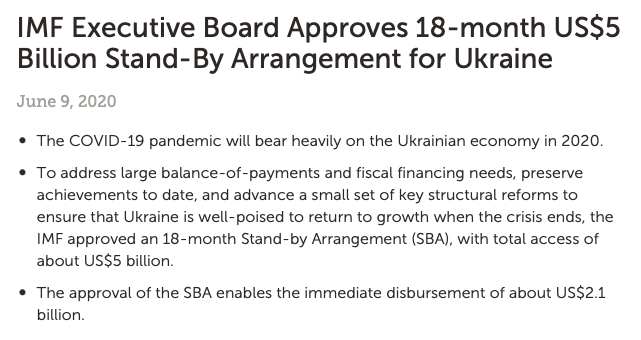
Screenshot from IMF
In response, Frederic Mousseau recently stated:
“The goal is clearly to favour the interests of private investors and Western agribusinesses… It is wrong and immoral for Western financial institutions to force a country in a dire economic situation… to sell its land.”
The IMF and World Bank’s ongoing commitment to global agribusiness and a rigged model of ‘globalisation’ is a recipe for continued plunder. Whether it involves Bayer, Corteva, Cargill or the type of corporate power grab of African agriculture that Bill Gates is helping to spearhead, private capital will continue to ensure this happens while hiding behind platitudes about ‘free trade’ and ‘development’ which are anything but.
India
If there is one country that encapsulates the battle for the future of food and agriculture, it is India.
Agriculture in India is at a crossroads. Indeed, given that over 60% of the country’s 1.3-billion-plus population still make a living from agriculture (directly or indirectly), what is at stake is the future of the country. Unscrupulous interests are intent on destroying India’s indigenous agri-food sector and recasting it in their own image and farmers are rising up in protest.
To appreciate what is happening to agriculture and farmers in India, we must first understand how the development paradigm has been subverted. Development used to be about breaking with colonial exploitation and radically redefining power structures. Today, neoliberal ideology masquerades as economic theory and the subsequent deregulation of international capital ensures giant transnational conglomerates are able to ride roughshod over national sovereignty.
The deregulation of international capital flows (financial liberalisation) has effectively turned the planet into a free-for-all bonanza for the world’s richest capitalists. Under the post-World-War Two Bretton Woods monetary regime, nations put restrictions on the flow of capital. Domestic firms and banks could not freely borrow from banks elsewhere or from international capital markets, without seeking permission, and they could not simply take their money in and out of other countries.
Domestic financial markets were segmented from international ones elsewhere. Governments could to a large extent run their own macroeconomic policy without being restrained by monetary or fiscal policies devised by others. They could also have their own tax and industrial policies without having to seek market confidence or worry about capital flight.
However, the dismantling of Bretton Woods and the deregulation of global capital movement has led to the greater incidence of financial crises (including sovereign debt) and has deepened the level of dependency of nation states on capital markets.
The dominant narrative calls this ‘globalisation’, a euphemism for a predatory neoliberal capitalism based on endless profit growth, crises of overproduction, overaccumulation and market saturation and a need to constantly seek out and exploit new, untapped (foreign) markets to maintain profitability.
In India, we can see the implications very clearly. Instead of pursuing a path of democratic development, India has chosen (or been coerced) to submit to the regime of foreign finance, awaiting signals on how much it can spend, giving up any pretence of economic sovereignty and leaving the space open for private capital to move in on and capture markets.
India’s agri-food sector has indeed been flung open, making it ripe for takeover. The country has borrowed more money from the World Bank than any other country in that institution’s history.
Back in the 1990s, the World Bank directed India to implement market reforms that would result in the displacement of 400 million people from the countryside. Moreover, the World Bank’s ‘Enabling the Business of Agriculture’ directives entail opening up markets to Western agribusiness and their fertilisers, pesticides, weedicides and patented seeds and compel farmers to work to supply transnational corporate global supply chains.
The aim is to let powerful corporations take control under the guise of ‘market reforms’. The very transnational corporations that receive massive taxpayer subsidies, manipulate markets, write trade agreements and institute a regime of intellectual property rights, thereby indicating that the ‘free’ market only exists in the warped delusions of those who churn out clichés about ‘price discovery’ and the sanctity of ‘the market’.
Indian agriculture is to be wholly commercialised with large-scale, mechanised (monocrop) enterprises replacing small farms that help sustain hundreds of millions of rural livelihoods while feeding the masses.
India’s agrarian base is being uprooted, the very foundation of the country, its cultural traditions, communities and rural economy. Indian agriculture has witnessed gross underinvestment over the years, whereby it is now wrongly depicted as a basket case and underperforming and ripe for a sell off to those very interests who had a stake in its underinvestment.
Today, we hear much talk of ‘foreign direct investment’ and making India ‘business friendly’, but behind the benign-sounding jargon lies the hard-nosed approach of modern-day capitalism that is no less brutal for Indian farmers than early industrial capitalism was for English peasants.
Early capitalists and their cheerleaders complained how peasants were too independent and comfortable to be properly exploited. Indeed, many prominent figures advocated for their impoverishment, so they would leave their land and work for low pay in factories.
In effect, England’s peasants were booted off their land by depriving a largely self-reliant population of its productive means. Although self-reliance persisted among the working class (self-education, recycling products, a culture of thrift, etc), this too was eventually eradicated via advertising and an education system that ensured conformity and dependence on the goods manufactured by capitalism.
The intention is for India’s displaced cultivators to be retrained to work as cheap labour in the West’s offshored plants, even though nowhere near the numbers of jobs necessary are being created and that under capitalism’s ‘Great Reset’ human labour is to be largely replaced by artificial intelligence-driven technology. The future impacts of AI aside, the aim is for India to become a fully incorporated subsidiary of global capitalism, with its agri-food sector restructured for the needs of global supply chains and a reserve army of urban labour that will effectively serve to further weaken workers’ position in relation to capital in the West.
As independent cultivators are bankrupted, the aim is that land will eventually be amalgamated to facilitate large-scale industrial cultivation. Those who remain in farming will be absorbed into corporate supply chains and squeezed as they work on contracts dictated by large agribusiness and chain retailers.
A 2016 UN report said that by 2030 Delhi’s population will be 37 million.
One of the report’s principal authors, Felix Creutzig, said:
“The emerging mega-cities will rely increasingly on industrial-scale agricultural and supermarket chains, crowding out local food chains.”
The drive is to entrench industrial agriculture and commercialise the countryside.
The outcome will be a mainly urbanised country reliant on an industrial agriculture and all it entails, including denutrified food, increasingly monolithic diets, the massive use of agrochemicals and food contaminated by hormones, steroids, antibiotics and a range of chemical additives. A country with spiralling rates of ill health, degraded soil, a collapse in the insect population, contaminated and depleted water supplies and a cartel of seed, chemical and food processing companies with ever-greater control over the global food production and supply chain.
But we do not need a crystal ball to look into the future. Much of the above is already taking place, not least the destruction of rural communities, the impoverishment of the countryside and continuing urbanisation, which is itself causing problems for India’s crowded cities and eating up valuable agricultural land.
Transnational corporate-backed front groups are hard at work behind the scenes to secure this future. According to a September 2019 report in the New York Times, ‘A Shadowy Industry Group Shapes Food Policy Around the World’, the International Life Sciences Institute (ILSI) has been quietly infiltrating government health and nutrition bodies. The article lays bare ILSI’s influence on the shaping of high-level food policy globally, not least in India.
ILSI helps to shape narratives and policies that sanction the roll out of processed foods containing high levels of fat, sugar and salt. In India, ILSI’s expanding influence coincides with mounting rates of obesity, cardiovascular disease and diabetes.
It is worth noting that over the past 60 years in Western nations there have been fundamental changes in the quality of food. Trace elements and micronutrient contents in many basic staples have been severely depleted.
In 2007, nutritional therapist David Thomas in ‘A Review of the 6th Edition of McCance and Widdowson’s the Mineral Depletion of Foods Available to Us as a Nation’ associated this with a precipitous change towards convenience and pre-prepared foods containing saturated fats, highly processed meats and refined carbohydrates, often devoid of vital micronutrients yet packed with a cocktail of chemical additives including colourings, flavourings and preservatives.
Aside from the impacts of Green Revolution cropping systems and practices, Thomas proposed that these changes are significant contributors to rising levels of diet-induced ill health. He added that ongoing research clearly demonstrates a significant relationship between deficiencies in micronutrients and physical and mental ill health.
Increasing prevalence of diabetes, childhood leukaemia, childhood obesity, cardiovascular disorders, infertility, osteoporosis and rheumatoid arthritis, mental illnesses and so on have all been shown to have some direct relationship to diet and specifically micronutrient deficiency.
However, this is precisely the kind of food model that ILSA supports. Little more than a front group for its 400 corporate members that provide its $17 million budget, ILSI’s members include Coca-Cola, DuPont, PepsiCo, General Mills and Danone. The report says ILSI has received more than $2 million from chemical companies, among them Monsanto. In 2016, a UN committee issued a ruling that glyphosate, the key ingredient in Monsanto’s weedkiller Roundup, was “probably not carcinogenic,” contradicting an earlier report by the WHO’s cancer agency. The committee was led by two ILSI officials.
From India to China, whether it has involved warning labels on unhealthy packaged food or shaping anti-obesity education campaigns that stress physical activity and divert attention from the food system itself, prominent figures with close ties to the corridors of power have been co-opted to influence policy in order to boost the interests of agri-food corporations.
Whether through IMF-World Bank structural adjustment programmes, as occurred in Africa, trade agreements like NAFTA and its impact on Mexico, the co-option of policy bodies at national and international levels or deregulated global trade rules, the outcome has been similar across the world: poor and less diverse diets and illnesses, resulting from the displacement of traditional, indigenous agriculture and food production by a corporatised model centred on unregulated global markets and transnational conglomerates.
A hard-edged Rock
While it is right to focus on the individual firms that dominate the agri-sector, we also need to shed light on the powerful asset managers who finance them and determine the financial architecture that upholds a predatory economic system.
Larry Fink is the head of BlackRock – the world’s biggest asset management firm. In 2011, Fink said agricultural and water investments would be the best performers over the next 10 years.
Fink Stated:
“Go long agriculture and water and go to the beach.”
Just three years later, in 2014, the Oakland Institute found that institutional investors, including hedge funds, private equity and pension funds, were capitalising on global farmland as a new and highly desirable asset class.
Funds tend to invest for a 10- to 15-year period, resulting in good returns for investors but often cause long-term environmental and social devastation. They undermine local and regional food security through buying up land and entrenching an industrial, export-oriented model of agriculture.
In September 2020, Grain.org showed that private equity funds – pools of money that use pension funds, sovereign wealth funds, endowment funds and investments from governments, banks, insurance companies and high net worth individuals – were being injected into the agriculture sector throughout the world.
This money was being used to lease or buy up farms on the cheap and aggregate them into large-scale, US-style grain and soybean concerns.
BlackRock is a publicly owned investment manager that primarily provides its services to institutional, intermediary and individual investors. The firm exists to put its assets to work to make money for its clients. And it must ensure the financial system functions to secure this goal. And this is exactly what it does.
Back in 2010, the farmlandgrab.org website reported that BlackRock’s global agriculture fund would target companies involved with agriculture-related chemical products, equipment and infrastructure, as well as soft commodities and food, biofuels, forestry, agricultural sciences and arable land.
Blackrock’s Global Consumer Staples exchange rated fund (ETF) was launched in 2006 and has $560 million in assets under management. Agrifood stocks make up around 75% of the fund. Nestlé is the fund’s largest holding. Other agrifood firms that make up the fund include Coca-Cola, PepsiCo, Walmart, Anheuser Busch InBev, Mondelez, Danone and Kraft Heinz.
BlackRock’s iShares Core S&P 500 Index ETF has $150 billion in assets under management. Most of the top publicly traded food and agriculture firms are part of the S&P 500 index and BlackRock holds significant shares in those firms.
Professor Jennifer Clapp notes that BlackRock’s COW Global Agriculture ETF has $231 million in assets and focuses on firms that provide inputs (seeds, chemicals and fertilizers) and farm equipment and agricultural trading companies. Among its top holdings are Deere & Co, Bunge, ADM and Tyson. This is based on BlackRock’s own data from 2018.
Clapp states that, collectively, the global asset management giants – BlackRock, Vanguard, State Street, Fidelity, and Capital Group – own significant proportions of the firms that dominate at various points along agrifood supply chains.
BlackRock et al are heavily invested in the success of the prevailing globalised system of food and agriculture.
They profit from an inherently predatory system that – focusing on the agrifood sector alone – has been responsible for, among other things, the displacement of indigenous systems of production, the impoverishment of many farmers worldwide, the destruction of rural communities and cultures, poor-quality food and illness, less diverse diets, ecological destruction and the proletarianisation of independent producers.
BlackRock currently has $10 trillion in assets under its management and to underline the influence of the firm, Fink himself is a billionaire who sits on the board of the World Economic Forum and the powerful and highly influential Council for Foreign Relations, often referred to as the shadow government of the US – the real power behind the throne.
Researcher William Engdahl says that, since 1988, the company has put itself in a position to de facto control the Federal Reserve, most Wall Street mega-banks, including Goldman Sachs, the Davos World Economic Forum Great Reset and now the Biden Administration.
Engdahl describes how former top people at BlackRock are now in key government positions, running economic policy for the Biden administration, and that the firm is steering the ‘great reset’ and the global ‘green’ agenda. BlackRock is the pinnacle of capitalist power.
Fink recently eulogised about the future of food and ‘coded’ seeds that would produce their own fertiliser. He says this is “amazing technology”. This technology is years away and whether it can deliver on what he says is another thing.
More likely, it will be a great investment opportunity that is par for the course as far as genetically modified organisms in agriculture are concerned: a failure to deliver on inflated false promises. And even if it does eventually deliver, a whole host of ‘hidden costs’ (health, social, ecological, etc.) will emerge.
But why should Fink care about these ‘hidden costs’, not least the health impacts?
Well, actually, he probably does – with his eye on investments in ‘healthcare’ and Big Pharma. BlackRock’s investments support and profit from industrial agriculture as well as the hidden costs.
Poor health is good for business (for example, see on the BlackRock website BlackRock on healthcare investment opportunities amid Covid-19). Scroll through BlackRock’s website and it soon becomes clear that it sees the healthcare sector as a strong long-term bet.
And for good reason. For instance, increased consumption of ultra-processed foods (UPFs) was associated with more than 10% of all-cause premature, preventable deaths in Brazil in 2019 according to a recent peer-reviewed study in the American Journal of Preventive Medicine.
The findings are significant not only for Brazil but more so for high income countries such as the US, Canada, the UK and Australia, where UPFs account for more than half of total calorific intake. Brazilians consume far less of these products than countries with high incomes. This means the estimated impact would be even higher in richer nations.
Larry Fink is good at what he does – securing returns for the assets his company holds. He needs to keep expanding into or creating new markets to ensure the accumulation of capital to offset the tendency for the general rate of profit to fall. He needs to accumulate capital (wealth) to be able to reinvest it and make further profits.
When capital struggles to make sufficient profit, productive wealth (capital) over accumulates, devalues and the system goes into crisis. To avoid crisis, capitalism requires constant growth, expanding markets and sufficient demand.
And that means laying the political and legislative groundwork to facilitate this. What matters to global agricapital and investment firms is facilitating profit and maximising returns on investment.
This has been a key driving force behind the modern food system that sees around a billion people experiencing malnutrition in a world of food abundance. That is not by accident but by design – inherent to a system that privileges corporate profit ahead of human need.
The modern agritech/agribusiness sector uses notions of it and its products being essential to ‘feed the world’ by employing ‘amazing technology’ in an attempt to seek legitimacy. But the reality is an inherently unjust globalised food system, farmers forced out of farming or trapped on proprietary product treadmills working for corporate supply chains and the public fed GMOs, more ultra-processed products and lab-engineered food.
A system that facilitates ‘going long and going to the beach’ serves elite interests well. It’s business as usual. For vast swathes of humanity, however, economic warfare is waged on them each day courtesy of a hard-edged rock.
However, ‘imperialism’ is a dirty word never to be used in ‘polite’ circles. Such a notion is to be brushed aside as ideological by the corporations that benefit from it.
Chapter V
Farmers’ Struggle in India
The Farm Laws and a Neoliberal Death Knell
Much of what appears in the following chapters was written prior to the Indian government’s announcement in late 2021 that the three farm laws discussed would be repealed. This is little more than a tactical manoeuvre given that state elections were upcoming in key rural heartlands in 2022. The powerful global interests behind these laws have not gone away and the concerns expressed below are still highly relevant. These interests have been behind a decades-long agenda to displace the prevailing agri-food system in India. The laws might have been struck down, but the goal and underlying framework to capture and radically restructure the sector remains. The farmers’ struggle in India is not over.
In 1830, British colonial administrator Lord Metcalfe said India’s villages were little republics that had nearly everything they could want for within themselves. India’s ability to endure derived from these communities:
“Dynasty after dynasty tumbles down but the village community remains the same. It is in a high degree conducive to their happiness, and to the enjoyment of a great portion of freedom and independence.”
Metcalfe was acutely aware that to subjugate India this capacity to ‘endure’ had to be broken. Since gaining independence from the British, India’s rulers have only further served to undermine the vibrancy or rural India. But now a potential death knell for rural India and its villages is underway.
There is a plan for the future of India and most of its current farmers do not have a role in it.
Three important farm bills are aimed at imposing the shock therapy of neoliberalism on India’s agri-food sector for the benefit of large commodity traders and other (international) corporations: many if not most smallholder farmers could go to the wall in a landscape of ‘get big or get out’.
This legislation comprises the Farmers’ Produce Trade and Commerce (Promotion and Facilitation) Act 2020, the Farmers (Empowerment and Protection) Agreement on Price Assurance and Farm Services Act 2020 and the Essential Commodities (Amendment) Act 2020.
This could represent a final death knell for indigenous agriculture in India. The legislation will mean that mandis – state-run market locations for farmers to sell their agricultural produce via auction to traders – can be bypassed, allowing farmers to sell to private players elsewhere (physically and online), thereby undermining the regulatory role of the public sector. In trade areas open to the private sector, no fees will be levied (fees levied in mandis go to the states and, in principle, are used to enhance infrastructure to help farmers).
This could incentivise the corporate sector operating outside of the mandis to (initially at least) offer better prices to farmers; however, as the mandi system is run down completely, these corporations will monopolise trade, capture the sector and dictate prices to farmers.
Another outcome could see the largely unregulated storage of produce and speculation, opening the farming sector to a free-for-all profiteering payday for the big traders and jeopardising food security. The government will no longer regulate and make key produce available to consumers at fair prices. This policy ground is being ceded to influential market players.
The legislation will enable transnational agri-food corporations like Cargill and Walmart and India’s billionaire capitalists Gautam Adani (agribusiness conglomerate) and Mukesh Ambini (Reliance retail chain) to decide on what is to be cultivated at what price, how much of it is to be cultivated within India and how it is to be produced and processed. Industrial agriculture will be the norm with all the devastating health, social and environmental costs that the model brings with it.
Forged in Washington
The recent agriculture legislation represents the final pieces of a 30-year-old plan which will benefit a handful of billionaires in the US and in India. It means the livelihoods of hundreds of millions (the majority of the population) who still rely on agriculture for a living are to be sacrificed at the behest of these elite interests.
Consider that much of the UK’s wealth came from sucking $45 trillion from India alone according to renowned economist Utsa Patnaik. Britain grew rich by underdeveloping India. Today, what are little more than modern-day East India-type corporations are currently in the process of helping themselves to the country’s most valuable asset – agriculture.
According to the World Bank’s lending report, based on data compiled up to 2015, India was easily the largest recipient of its loans in the history of the institution. On the back of India’s foreign exchange crisis in the 1990s, the IMF and World Bank wanted India to shift hundreds of millions out of agriculture.
In return for up to more than $120 billion in loans at the time, India was directed to dismantle its state-owned seed supply system, reduce subsidies, run down public agriculture institutions and offer incentives for the growing of cash crops to earn foreign exchange.
The details of this plan appear in a January 2021 article by the Mumbai-based Research Unit for Political Economy (RUPE), ‘Modi’s Farm Produce Act Was Authored Thirty Years Ago, in Washington DC’. The piece says that the current agricultural ‘reforms’ are part of a broader process of imperialism’s increasing capture of the Indian economy:
“Indian business giants such as Reliance and Adani are major recipients of foreign investment, as we have seen in sectors such as telecom, retail, and energy. At the same time, multinational corporations and other financial investors in the sectors of agriculture, logistics and retail are also setting up their own operations in India. Multinational trading corporations dominate global trade in agricultural commodities… The opening of India’s agriculture and food economy to foreign investors and global agribusinesses is a longstanding project of the imperialist countries.”
The article provides details of a 1991 World Bank memorandum which set out the programme for India.
It states that, at the time, India was still in its foreign exchange crisis of 1990-91 and had just submitted itself to an IMF-monitored ‘structural adjustment’ programme. India’s July 1991 budget marked the fateful start of India’s neoliberal era.
The Modi government is attempting to dramatically accelerate the implementation of the above programme, which to date has been too slow for the overlords in Washington: the dismantling of the public procurement and distribution of food is to be facilitated courtesy of the three agriculture-related acts passed by parliament.
What is happening predates the current administration, but it is as if Modi was especially groomed to push through the final components of this agenda.
Describing itself as a major global communications, stakeholder engagement and business strategy company, APCO Worldwide is a lobby agency with firm links to the Wall Street/corporate US establishment and facilitates its global agenda. Some years ago, Modi turned to APCO to help transform his image and turn him into electable pro-corporate PM material. It also helped him get the message out that what he achieved in Gujarat as chief minister was a miracle of economic neoliberalism, although the actual reality is quite different.
Some years ago, following the 2008 financial crisis, APCO stated that India’s resilience in weathering the global downturn has made governments, policy makers, economists, corporate houses and fund managers believe that the country can play a significant role in the recovery of global capitalism.
Decoded, this means global capital moving into regions and nations and displacing indigenous players. Where agriculture is concerned, this hides behind emotive and seemingly altruistic rhetoric about ‘helping farmers’ and the need to ‘feed a burgeoning population’ (regardless of the fact this is exactly what India’s farmers have been doing).
Modi has been on board with this aim and has proudly stated that India is now one of the most ‘business friendly’ countries in the world. What he really means is that India is in compliance with World Bank directives on ‘ease of doing business’ and ‘enabling the business of agriculture’ by facilitating further privatisation of public enterprises, environment-destroying policies and forcing working people to take part in a race to the bottom based on ‘free’ market fundamentalism.
APCO has described India as a trillion-dollar market. It talks about positioning international funds and facilitating corporations’ ability to exploit markets, sell products and secure profit. None of this is a recipe for national sovereignty, let alone food security.
Renowned agronomist MS Swaminathan has stated:
“Independent foreign policy is only possible with food security. Therefore, food has more than just eating implications. It protects national sovereignty, national rights and national prestige.”
The drive is to drastically dilute the role of the public sector in agriculture, reducing it to a facilitator of private capital. The norm will be industrial (GM) commodity-crop farming suited to the needs of the likes of Cargill, Archer Daniels Midlands, Louis Dreyfus, Bunge and India’s retail and agribusiness giants as well as the global agritech, seed and agrochemical corporations and Silicon Valley, which is leading the drive for ‘data-driven agriculture’.
Of course, those fund managers and corporate houses mentioned by APCO are no doubt also well positioned to take advantage, not least via the purchase of land and land speculation. For example, the Karnataka Land Reform Act will make it easier for business to purchase agricultural land, resulting in increased landlessness and urban migration.
As a result of the ongoing programme, more than 300,000 farmers in India have taken their lives since 1997 and many more are experiencing economic distress or have left farming as a result of debt, a shift to cash crops and economic liberalisation. There has been an ongoing strategy to make farming non-viable for many of India’s farmers.
The number of cultivators in India declined from 166 million to 146 million between 2004 and 2011. Some 6,700 left farming each day. Between 2015 and 2022, the number of cultivators is likely to decrease to around 127 million.
We have seen the running down of the sector for decades, spiralling input costs, withdrawal of government assistance and the impacts of cheap, subsidised imports which depress farmers’ incomes. India’s spurt of high GDP growth during the last decade was partly fuelled on the back of cheap food and the subsequent impoverishment of farmers: the gap between farmers’ income and the rest of the population has widened enormously.
While underperforming corporations receive massive handouts and have loans written off, the lack of a secure income, exposure to international market prices and cheap imports contribute to farmers’ misery of not being able to cover the costs of production.
With more than 800 million people, rural India is arguably the most interesting and complex place on the planet but is plagued by farmer suicides, child malnourishment, growing unemployment, increased informalisation, indebtedness and an overall collapse of agriculture.
Given that India is still an agrarian-based society, renowned journalist P Sainath says what is taking place can be described as a crisis of civilisation proportions and can be explained in just five words: hijack of agriculture by corporations. He notes the process by which it is being done in five words too: predatory commercialisation of the countryside. And another five words to describe the outcome: biggest displacement in our history.
Take the cultivation of pulses, for instance, which highlights the plight of farmers. According to a report in the Indian Express (September 2017), pulses production increased by 40% during the previous 12 months (a year of record production). At the same time, however, imports also rose resulting in black gram selling at 4,000 rupees per quintal (much less than during the previous 12 months). This effectively pushed down prices thereby reducing farmers already meagre incomes.
We have already witnessed a running down of the indigenous edible oils sector thanks to Indonesian palm oil imports (which benefits Cargill) on the back of World Bank pressure to reduce tariffs (India was virtually self-sufficient in edible oils in the 1990s but now faces increasing import costs).
The pressure from the richer nations for the Indian government to further reduce support given to farmers and open up to imports and export-oriented ‘free market’ trade is based on nothing but hypocrisy.
On the ‘Down to Earth’ website in late 2017, it was stated some 3.2 million people were engaged in agriculture in the US in 2015. The US government provided them each with a subsidy of $7,860 on average. Japan provides a subsidy of $14,136 and New Zealand $2,623 to its farmers. In 2015, a British farmer earned $2,800 and $37,000 was added through subsidies. The Indian government provides on average a subsidy of $873 to farmers. However, between 2012 and 2014, India reduced the subsidy on agriculture and food security by $3 billion.
According to policy analyst Devinder Sharma, subsidies provided to US wheat and rice farmers are more than the market worth of these two crops. He also notes that, per day, each cow in Europe receives subsidy worth more than an Indian farmer’s daily income.
The Indian farmer simply cannot compete with this. The World Bank, WTO and the IMF have effectively served to undermine the indigenous farm sector in India.
And now, based on the new farm laws, by reducing public sector buffer stocks and facilitating corporate-dictated contract farming and full-scale neoliberal marketisation for the sale and procurement of produce, India will be sacrificing its farmers and its own food security for the benefit of a handful of billionaires.
Of course, many millions have already been displaced from the Indian countryside and have had to seek work in the cities. And if the coronavirus-related lockdown has indicated anything, it is that many of these ‘migrant workers’ had failed to gain a secure foothold in urban centres and were compelled to return ‘home’ to their villages. Their lives are defined by low pay and insecurity even after 30 years of neoliberal ‘reforms’.
Charter for change
In late November 2018, a charter was released by the All India Kisan Sangharsh Coordination Committee (an umbrella group of around 250 farmers’ organisations) to coincide with the massive, well-publicised farmers’ march that was then taking place in Delhi.
The charter stated:
“Farmers are not just a residue from our past; farmers, agriculture and village India are integral to the future of India and the world; as bearers of historic knowledge, skills and culture; as agents of food safety, security and sovereignty; and as guardians of biodiversity and ecological sustainability.”
The farmers stated that they were alarmed at the economic, ecological, social and existential crisis of Indian agriculture as well as the persistent state neglect of the sector and discrimination against farming communities.
They were also concerned about the deepening penetration of large, predatory and profit hungry corporations, farmers’ suicide across the country and the unbearable burden of indebtedness and the widening disparities between farmers and other sectors.

A view of workers and farmers’ rally on Feb 23, 2021 at Barnala (Source: Countercurrents)
The charter called on the Indian parliament to immediately hold a special session to pass and enact two bills that were of, by and for the farmers of India.
If passed by parliament, among other things, the Farmers’ Freedom from Indebtedness Bill 2018 would have provided for the complete loan waiver for all farmers and agricultural workers.
The second bill, The Farmers’ Right to Guaranteed Remunerative Minimum Support Prices for Agricultural Commodities Bill 2018, would have seen the government take measures to bring down the input cost of farming through specific regulation of the prices of seeds, agriculture machinery and equipment, diesel, fertilisers and insecticides, while making purchase of farm produce below the minimum support price (MSP) both illegal and punishable.
The charter also called for a special discussion on the universalisation of the public distribution system, the withdrawal of pesticides that have been banned elsewhere and the non-approval of genetically engineered seeds without a comprehensive need and impact assessment.
Other demands included no foreign direct investment in agriculture and food processing, the protection of farmers from corporate plunder in the name of contract farming, investment in farmers’ collectives to create farmer producer organisations and peasant cooperatives and the promotion of agroecology based on suitable cropping patterns and local seed diversity revival.
Now, in 2021, rather than responding to these requirements, we see the Indian government’s promotion and facilitation of – by way of recent legislation – the corporatisation of agriculture and the dismantling of the public distribution system (and the MSP) as well as the laying of groundwork for contract farming.
Although the two aforementioned bills from 2018 have now lapsed, farmers are demanding that the new pro-corporate (anti-farmer) farm laws are replaced with a legal framework that guarantees the MSP to farmers.
Indeed, the RUPE notes that MSPs via government procurement of essential crops and commodities should be extended to the likes of maize, cotton, oilseed and pulses. At the moment, only farmers in certain states who produce rice and wheat are the main beneficiaries of government procurement at MSP.
Since per capita protein consumption in India is abysmally low and has fallen further during the liberalisation era, the provision of pulses in the public distribution system (PDS) is long overdue and desperately needed. The RUPE argues that the ‘excess’ stocks of food grain with the Food Corporation of India are merely the result of the failure or refusal of the government to distribute grain to the people.
(For those not familiar with the PDS: central government via the Food Corporation of India FCI is responsible for buying food grains from farmers at MSP at state-run market yards or mandis. It then allocates the grains to each state. State governments then deliver to the ration shops.)
If public procurement of a wider range of crops at the MSP were to occur – and MSP were guaranteed for rice and wheat across all states – it would help address hunger and malnutrition as well as farmer distress.
Instead of rolling back the role of the public sector and surrendering the system to foreign corporations, there is a need to further expand official procurement and public distribution. This would occur by extending procurement to additional states and expanding the range of commodities under the PDS.
Of course, some will raise a red flag here and say this would cost too much. But as the RUPE notes, it would cost around 20% of the current handouts (‘incentives’) received by corporations and their super-rich owners which do not benefit the bulk of the wider population in any way. It is also worth considering that the loans provided to just five large corporations in India were in 2016 equal to the entire farm debt.
But this is not where the government’s priorities lie.
It is clear that the existence of the MSP, the Food Corporation of India, the public distribution system and publicly held buffer stocks constitute an obstacle to the profit-driven requirements of global agribusiness interests who have sat with government agencies and set out their wish-lists.
The RUPE notes that India accounts for 15% of world consumption of cereals. India’s buffer stocks are equivalent to 15-25% of global stocks and 40% of world trade in rice and wheat. Any large reduction in these stocks will almost certainly affect world prices: farmers would be hit by depressed prices; later, once India became dependent on imports, prices could rise on the international market and Indian consumers would be hit.
At the same time, the richer countries are applying enormous pressure on India to scrap its meagre agricultural subsidies; yet their own subsidies are vast multiples of India’s. The end result could be India becoming dependent on imports and the restructure of its own agriculture to crops destined for export.
Vast buffer stocks would of course still exist; but instead of India holding these stocks, they would be held by multinational trading firms and India would bid for them with borrowed funds. In other words, instead of holding physical buffer stocks, India would hold foreign exchange reserves.
Successive administrations have made the country dependent on volatile flows of foreign capital and India’s foreign exchange reserves have been built up by borrowing and foreign investments. The fear of capital flight is ever present. Policies are often governed by the drive to attract and retain these inflows and maintain market confidence by ceding to the demands of international capital.
This throttling of democracy and the ‘financialisation’ of agriculture would seriously undermine the nation’s food security and leave almost 1.4 billion people at the mercy of international speculators and markets and foreign investment.
If unrepealed, the recent legislation represents the ultimate betrayal of India’s farmers and democracy as well as the final surrender of food security and food sovereignty to unaccountable corporations. This legislation could eventually lead to the country relying on outside forces to feed its population – and a possible return to hand-to-mouth imports, especially in an increasingly volatile world prone to conflict, public health scares, unregulated land and commodity speculation and price shocks.
Chapter VI
Colonial Deindustrialisation
Predation and Inequality
According to a report by Oxfam, ‘The Inequality Virus’, the wealth of the world’s billionaires increased by $3.9tn (trillion) between 18 March and 31 December 2020. Their total wealth now stands at $11.95tn. The world’s 10 richest billionaires have collectively seen their wealth increase by $540bn over this period. In September 2020, Jeff Bezos could have paid all 876,000 Amazon employees a $105,000 bonus and still be as wealthy as he was before COVID.
At the same time, hundreds of millions of people will lose (have lost) their jobs and face destitution and hunger. It is estimated that the total number of people living in poverty around the world could have increased by between 200 million and 500 million in 2020. The number of people living in poverty might not return even to its pre-crisis level for over a decade.
Mukesh Ambani, India’s richest man and head of Reliance Industries, which specialises in petrol, retail and telecommunications, doubled his wealth between March and October 2020. He now has $78.3bn. The average increase in Ambani’s wealth in just over four days represented more than the combined annual wages of all of Reliance Industries’ 195,000 employees.
The Oxfam report states that lockdown in India resulted in the country’s billionaires increasing their wealth by around 35%. At the same time, 84% of households suffered varying degrees of income loss. Some 170,000 people lost their jobs every hour in April 2020 alone.
The authors also noted that income increases for India’s top 100 billionaires since March 2020 was enough to give each of the 138 million poorest people a cheque for 94,045 rupees.
The report went on to state:
“… it would take an unskilled worker 10,000 years to make what Ambani made in an hour during the pandemic… and three years to make what Ambani made in a second.”
During lockdown and after, hundreds of thousands of migrant workers in the cities (who had no option but to escape to the city to avoid the manufactured, deepening agrarian crisis) were left without jobs, money, food or shelter.
It is clear that COVID has been used as cover for consolidating the power of the unimaginably rich. But plans for boosting their power and wealth will not stop there.
Tech giants
An article on the grain.org website, ‘Digital control: how big tech moves into food and farming (and what it means)’, describes how Amazon, Google, Microsoft, Facebook and others are closing in on the global agri-food sector while the likes of Bayer, Syngenta, Corteva and Cargill are cementing their stranglehold.
The tech giants’ entry into the sector will increasingly lead to a mutually beneficial integration between the companies that supply products to farmers (pesticides, seeds, fertilisers, tractors, etc) and those that control the flow of data and have access to digital (cloud) infrastructure and food consumers. This system is based on corporate concentration (monopolisation).

In India, global corporations are also colonising the retail space through e-commerce. Walmart entered into India in 2016 by a US$3.3 billion take-over of the online retail start-up Jet.com which, in 2018, was followed by a US$16 billion take-over of India’s largest online retail platform Flipkart. Today, Walmart and Amazon now control almost two thirds of India’s digital retail sector.
Amazon and Walmart are using predatory pricing, deep discounts and other unfair business practices to lure customers towards their online platforms. According to GRAIN, when the two companies generated sales of over US$3 billion in just six days during a Diwali festival sales blitz, India’s small retailers called out in desperation for a boycott of online shopping.
In 2020, Facebook and the US-based private equity concern KKR committed over US$7 billion to Reliance Jio, the digital store of one of India’s biggest retail chains. Customers will soon be able to shop at Reliance Jio through Facebook’s chat application, WhatsApp.
The plan for retail is clear: the eradication of millions of small traders and retailers and neighbourhood mom and pop shops. It is similar in agriculture.
The aim is to buy up rural land, amalgamate it and rollout a system of chemically drenched farmerless farms owned or controlled by financial speculators, the high-tech giants and traditional agribusiness concerns. The end game is a system of contract farming that serves the interests of big tech, big agribusiness and big retail. Smallholder peasant agriculture is regarded as an impediment.
This model will be based on driverless tractors, drones, genetically engineered/lab-produced food and all data pertaining to land, water, weather, seeds and soils patented and often pirated from peasant farmers.
Farmers possess centuries of accumulated knowledge that once gone will never be got back. Corporatisation of the sector has already destroyed or undermined functioning agrarian ecosystems that draw on centuries of traditional knowledge and are increasingly recognised as valid approaches to secure food security.
And what of the hundreds of millions to be displaced in order to fill the pockets of the billionaire owners of these corporations? Driven to cities to face a future of joblessness: mere ‘collateral damage’ resulting from a short-sighted system of dispossessive predatory capitalism that destroys the link between humans, ecology and nature to boost the bottom line of the immensely rich.
India’s agri-food sector has been on the radar of global corporations for decades. With deep market penetration and near saturation having been achieved by agribusiness in the US and elsewhere, India represents an opportunity for expansion and maintaining business viability and all-important profit growth. And by teaming up with the high-tech players in Silicon Valley, multi-billion-dollar data management markets are being created. From data and knowledge to land, weather and seeds, capitalism is compelled to eventually commodify (patent and own) all aspects of life and nature.
As independent cultivators are bankrupted, the aim is that land will eventually be amalgamated to facilitate large-scale industrial cultivation. Indeed, a piece on the RUPE site, ‘The Kisans Are Right: Their Land Is At Stake‘, describes how the Indian government is ascertaining which land is owned by whom with the ultimate aim of making it easier to eventually sell it off (to foreign investors and agribusiness).
The recent farm bills (now repealed) will impose the neoliberal shock therapy of dispossession and dependency, finally clearing the way to restructure the agri-food sector. The massive inequalities and injustices that have resulted from the COVID-related lockdowns could be a mere taste of what is to come.
In June 2018, the Joint Action Committee against Foreign Retail and E-commerce (JACAFRE) issued a statement on Walmart’s acquisition of Flipkart. It argued that it undermines India’s economic and digital sovereignty and the livelihood of millions.
The deal would lead to Walmart and Amazon dominating India’s e-retail sector. These two US companies would also own India’s key consumer and other economic data, making them the country’s digital overlords, joining the ranks of Google and Facebook.
JACAFRE was formed to resist the entry of foreign corporations like Walmart and Amazon into India’s e-commerce market. Its members represent more than 100 national groups, including major trade, workers and farmers’ organisations.
On 8 January 2021, JACAFRE published an open letter saying that the three new farm laws, passed by parliament in September 2020, centre on enabling and facilitating the unregulated corporatisation of agriculture value chains. This will effectively make farmers and small traders of agricultural produce become subservient to the interests of a few agri-food and e-commerce giants or will eradicate them completely.
The government is facilitating the dominance of giant corporations, not least through digital or e-commerce platforms, to control the entire value chain. The letter states that if the new farm laws are closely examined, it will be evident that unregulated digitalisation is an important aspect of them.
And this is not lost on Parminder Jeet Singh from IT for Change (a member of JACAFRE). Referring to Walmart’s takeover of online retailer Flipkart, Singh notes that there was strong resistance to Walmart entering India with its physical stores; however, online and offline worlds are now merged.
That is because, today, e-commerce companies not only control data about consumption but also control data on production, logistics, who needs what, when they need it, who should produce it, who should move it and when it should be moved.
Through the control of data (knowledge), e-commerce platforms can shape the entire physical economy. What is concerning is that Amazon and Walmart have sufficient global clout to ensure they become a duopoly, more or less controlling much of India’s economy.
Singh says that whereas you can regulate an Indian company, this cannot be done with foreign players who have global data, global power and will be near-impossible to regulate.
While China succeeded in digital industrialisation by building up its own firms, Singh observes that the EU is now a digital colony of the US. The danger is clear for India.
India has its own skills and digital forms, so why is the government letting in US companies to dominate and buy India’s digital platforms?
And ‘platform’ is a key word here. We are seeing the eradication of the marketplace. Platforms will control everything from production to logistics to even primary activities like agriculture and farming. Data gives power to platforms to dictate what needs to be manufactured and in what quantities.
The digital platform is the brain of the whole system. The farmer will be told how much production is expected, how much rain is anticipated, what type of soil quality there is, what type of (GM) seeds and are inputs are required and when the produce needs to be ready.
Those traders, manufacturers and primary producers who survive will become slaves to platforms and lose their independence. Moreover, e-commerce platforms will become permanently embedded once artificial intelligence begins to plan and determine all of the above.
Of course, things have been moving in this direction for a long time, especially since India began capitulating to the tenets of neoliberalism in the early 1990s and all that entails, not least an increasing dependence on borrowing and foreign capital inflows and subservience to destructive World Bank-IMF economic directives.
Knock-out blow
But what we are currently witnessing with the three farm bills and the growing role of (foreign) e-commerce will bring about the ultimate knock-out blow to the peasantry and many small independent enterprises. This has been the objective of powerful players who have regarded India as the potential jewel in the crown of their corporate empires for a long time.
The process resembles the structural adjustment programmes that were imposed on African countries some decades ago. Economics Professor Michel Chossudovsky notes in his 1997 book ‘The Globalization of Poverty’ that economies are:
“opened up through the concurrent displacement of a pre-existing productive system. Small and medium-sized enterprises are pushed into bankruptcy or obliged to produce for a global distributor, state enterprises are privatised or closed down, independent agricultural producers are impoverished.” (p.16)
The game plan is clear and JACAFRE says the government should urgently consult all stakeholders – traders, farmers and other small and medium size players – towards a holistic new economic model where all economic actors are assured their due and appropriately valued role. Small and medium size economic actors cannot be allowed to be reduced to being helpless agents of a few digitally enabled mega-corporations.
JACAFRE concludes:
“We appeal to the government that it should urgently address the issues raised by those farmers asking for the three laws to be repealed. Specifically, from a traders’ point of view, the role of small and medium traders all along the agri-produce value chain has to be strengthened and protected against its unmitigated corporatisation.”
It is clear that the ongoing farmers’ protest in India is not just about farming. It represents a struggle for the heart and soul of the country.
Farmers, farmers’ unions and their representatives demand that the laws be repealed and state that they will not accept a compromise. Farmers’ leaders welcomed the Supreme Court of India stay order on the implementation of the farm laws in January 2021.
However, based on more than 10 rounds of talks between farmers representatives and the government, it seemed at one stage that the ruling administration would never back down on implementing the laws.
In November 2020, a nationwide general strike took place in support of the farmers and in that month around 300,000 farmers marched from the states of Punjab and Haryana to Delhi for what leaders called a “decisive battle” with the central government.
But as the farmers reached the capital, most were stopped by barricades, dug up roads, water cannons, baton charges and barbed wire erected by police. The farmers set up camps along five major roads, building makeshift tents with a view to staying for months if their demands were not met.
Throughout 2021, thousands of farmers remained camped at various points on the border, enduring the cold, the rain and the searing heat. In late March 2021, it was estimated that there were around 40,000 protestors camped at Singhu and Tikri at the Delhi border.
On 26 January 2021, India’s Republic Day, tens of thousands of farmers held a farmer’s parade with a large convoy of tractors and drove into Delhi.
In September 2021, tens of thousands of farmers attended a rally in the city of Muzaffarnagar in the Indian state of Uttar Pradesh (UP). Hundreds of thousands more turned out for other rallies in the state.
These huge gatherings came ahead of important polls in 2022 in UP, India’s most populous state with 200 million people and governed by Prime Minister Modi’s Bharatiya Janata Party (BJP). In the 2017 assembly polls, the BJP won 325 out of a total of 403 seats.
Speaking at the rally in Muzaffarnagar, farmers’ leader Rakesh Tikait stated:
“We take a pledge that we’ll not leave the protest site there (around Delhi) even if our graveyard is made there. We will lay down our lives if needed but will not leave the protest site until we emerge victorious.”
Tikait also attacked the Modi-led government for:
“… selling the country to corporates… We have to stop the country from getting sold. Farmers should be saved; the country should be saved.”
Police brutality, the smearing of protesters by certain prominent media commentators and politicians, the illegal detention of protesters and clampdowns on free speech (journalists arrested, social media accounts closed, shutting down internet services) have been symptomatic of officialdom’s approach to the farmers’ struggle which itself has been defined by resilience, resoluteness and restraint.
But it is not as though the farmers’ struggle arose overnight. Indian agriculture has been deliberately starved of government support for decades and has resulted in a well-documented agrarian – even civilisation – crisis. What we are currently seeing is the result of injustices and neglect coming to a head as foreign agri-capital tries to impose its neoliberal ‘final solution’ on Indian agriculture.
It is essential to protect and strengthen local markets and indigenous, independent small-scale enterprises, whether farmers, hawkers, food processers or mom and pop corner stores. This will ensure that India has more control over its food supply, the ability to determine its own policies and economic independence: in other words, the protection of food and national sovereignty and a greater ability to pursue genuine democratic development.
Washington and its ideologue economists call this ‘liberalising’ the economy: how is an inability to determine your own economic policies and surrendering food security to outside forces in any way liberating?
It is interesting to note that the BBC reported that, in its annual report on global political rights and liberties, the US-based non-profit Freedom House has downgraded India from a free democracy to a “partially free democracy”. It also reported that Sweden-based V-Dem Institute says India is now an “electoral autocracy”. India did not fare any better in a report by The Economist Intelligent Unit’s Democracy Index.
The BBC’s neglect of Britain’s own slide towards COVID-related authoritarianism aside, the report on India was not without substance. It focused on the increase in anti-Muslim feeling, diminishing of freedom of expression, the role of the media and the restrictions on civil society since PM Narendra Modi took power.
The undermining of liberties in all these areas is cause for concern in its own right. But this trend towards divisiveness and authoritarianism serves another purpose: it helps smooth the path for the corporate takeover of the country.
Whether it involves a ‘divide and rule’ strategy along religious lines to divert attention, the suppression of free speech or pushing unpopular farm bills through parliament without proper debate while using the police and the media to undermine the farmers’ protest, a major undemocratic heist is under way that will fundamentally adversely impact people’s livelihoods and the cultural and social fabric of India.
On one side, there are the interests of a handful of multi-billionaires who own the corporations and platforms that seek to control India. On the other, there are the interests of hundreds of millions of cultivators, vendors and various small-scale enterprises who are regarded by these rich individuals as mere collateral damage to be displaced in their quest for ever greater profit.
Indian farmers are currently on the frontline against global capitalism and the colonial-style deindustrialisation of the economy. This is where ultimately the struggle for democracy and the future of India is taking place.
In April 2021, the Indian government signed a Memorandum of Understanding (MoU) with Microsoft, allowing its local partner CropData to leverage a master database of farmers. The MoU seems to be part of the AgriStack policy initiative, which involves the roll out of ‘disruptive’ technologies and digital databases in the agricultural sector.
Based on press reports and government statements, Microsoft would help farmers with post- harvest management solutions by building a collaborative platform and capturing agriculture datasets such as crop yields, weather data, market demand and prices. In turn, this would create a farmer interface for ‘smart’ agriculture, including post-harvest management and distribution.
CropData will be granted access to a government database of 50 million farmers and their land records. As the database is developed, it will include farmers’ personal details, profile of land held (cadastral maps, farm size, land titles, local climatic and geographical conditions), production details (crops grown, production history, input history, quality of output, machinery in possession) and financial details (input costs, average return, credit history).
The stated aim is to use digital technology to improve financing, inputs, cultivation and supply and distribution.
It seems that the blueprint for AgriStack is in an advanced stage despite the lack of consultation with or involvement of farmers themselves. Technology could certainly improve the sector but handing control over to powerful private concerns will merely facilitate what they require in terms of market capture and farmer dependency.
Such ‘data-driven agriculture’ is integral to the recent farm legislation which includes a proposal to create a digital profile of cultivators, their farm holdings, climatic conditions in an area, what is grown and average output.
Many concerns have been raised about this, ranging from farmer displacement, the further exploitation of farmers through microfinance and the misuse of farmer’s data and increased algorithmic decision-making without accountability.
Familiar playbook
The displacement of farmers is not lost on the RUPE which, in a three-part series of articles, explains how neoliberal capitalism has removed peasant farmers from their land to facilitate an active land market for corporate interests. The Indian government is trying to establish a system of ‘conclusive titling’ of all land in the country, so that ownership can be identified and land can then be bought or taken away.
Taking Mexico as an example, the RUPE says:
“Unlike Mexico, India never underwent significant land reform. Nevertheless, its current programme of ‘conclusive titling’ of land bears clear resemblances to Mexico’s post-1992 drive to hand over property rights… The Indian rulers are closely following the script followed by Mexico, written in Washington.”
The plan is that, as farmers lose access to land or can be identified as legal owners, predatory institutional investors and large agribusinesses will buy up and amalgamate holdings, facilitating the further roll out of high-input, corporate-dependent industrial agriculture.
This is an example of stakeholder-partnership capitalism, much promoted by the likes of the World Economic Forum, whereby a government facilitates the gathering of such information by a private player which can then, in this case, use the data for developing a land market (courtesy of land law changes that the government enacts) for institutional investors at the expense of smallholder farmers who will find themselves displaced.
By harvesting (pirating) information – under the benign-sounding policy of data-driven agriculture – private corporations will be better placed to exploit farmers’ situations for their own ends: they will know more about their incomes and businesses than individual farmers themselves.
Some 55 civil society groups and organisations have written to the government expressing these and various other concerns, not least the perceived policy vacuum with respect to the data privacy of farmers and the exclusion of farmers themselves in current policy initiatives.
In an open letter, they state:
“At a time when ‘data has become the new oil’ and the industry is looking at it as the next source of profits, there is a need to ensure the interest of farmers. It will not be surprising that corporations will approach this as one more profit-making possibility, as a market for so-called ‘solutions’ which lead to sale of unsustainable agri-inputs combined with greater loans and indebtedness of farmers for this through fintech, as well as the increased threat of dispossession by private corporations.”
They add that any proposal which seeks to tackle the issues that plague Indian agriculture must address the fundamental causes of these issues. The current model relies on ‘tech-solutionism’ which emphasises using technology to solve structural issues.
There is also the issue of reduced transparency on the part of the government through algorithm-based decision-making.
The 55 signatories request the government holds consultations with all stakeholders, especially farmers’ organisations, on the direction of its digital push as well as the basis of partnerships and put out a policy document in this regard after giving due consideration to feedback from farmers and farmer organisations. As agriculture is a state subject, the central government should consult the state governments also.
They state that all initiatives that the government has begun with private entities to integrate and/or share multiple databases with private/personal information about individual farmers or their farms be put on hold till an inclusive policy framework is put in place and a data protection law is passed.
It is also advocated that the development of AgriStack, both as a policy framework and its execution, should take the concerns and experiences of farmers as the prime starting point.
The letter states that if the new farm laws are closely examined, it will be evident that unregulated digitalisation is an important aspect of them.
There is the strong possibility that monopolistic corporate owned e-commerce ‘platforms’ will eventually control much of India’s economy given the current policy trajectory. From retail and logistics to cultivation, data certainly will be the ‘new oil’, giving power to platforms to dictate what needs to be manufactured and in what quantities.
Handing over all information about the sector to Microsoft and others places power in their hands – the power to shape the sector in their own image.
Bayer, Corteva, Syngenta and traditional agribusiness will work with Microsoft, Google and the big-tech giants to facilitate AI-driven farmerless farms and e-commerce retail dominated by the likes of Amazon and Walmart. A cartel of data owners, proprietary input suppliers and retail concerns at the commanding heights of the economy, peddling toxic industrial food and the devastating health impacts associated with it.
And elected representatives? Their role will be highly limited to technocratic overseers of these platforms and the artificial intelligence tools that plan and determine all of the above.
The links between humans and the land reduced to an AI-driven technocratic dystopia in compliance with the tenets of neoliberal capitalism. AgriStack will help facilitate this end game.
Chapter VII
Neoliberal Playbook
Economic Terrorism and Smashing Farmers’ Heads
While the brands lining the shelves of giant retail outlets seem vast, a handful of food companies own these brands which, in turn, rely on a relatively narrow range of produce for ingredients. At the same time, this illusion of choice often comes at the expense of food security in poorer countries that were compelled to restructure their agriculture to facilitate agri-exports courtesy of the World Bank, IMF, the WTO and global agribusiness interests.
In Mexico, transnational food retail and processing companies have taken over food distribution channels, replacing local foods with cheap processed items, often with the direct support of the government. Free trade and investment agreements have been critical to this process and the consequences for public health have been catastrophic.
Mexico’s National Institute for Public Health released the results of a national survey of food security and nutrition in 2012. Between 1988 and 2012, the proportion of overweight women between the ages of 20 and 49 increased from 25 to 35% and the number of obese women in this age group increased from 9 to 37%. Some 29% of Mexican children between the ages of 5 and 11 were found to be overweight, as were 35% of the youngsters between 11 and 19, while one in ten school age children experienced anaemia.
Former Special Rapporteur on the Right to Food, Olivier De Schutter, concludes that trade policies had favoured a greater reliance on heavily processed and refined foods with a long shelf life rather than on the consumption of fresh and more perishable foods, particularly fruit and vegetables. He added that the overweight and obesity emergency that Mexico faces could have been avoided.
In 2015, the non-profit organisation GRAIN reported that the North America Free Trade Agreement (NAFTA) led to the direct investment in food processing and a change in Mexico’s retail structure (towards supermarkets and convenience stores) as well as the emergence of global agribusiness and transnational food companies in the country.
NAFTA eliminated rules preventing foreign investors from owning more than 49% of a company. It also prohibited minimum amounts of domestic content in production and increased rights for foreign investors to retain profits and returns from initial investments. By 1999, US companies had invested 5.3 billion dollars in Mexico’s food processing industry, a 25-fold increase in just 12 years.
US food corporations began to colonise the dominant food distribution networks of small-scale vendors, known as tiendas (corner shops). This helped spread nutritionally poor food as they allowed these corporations to sell and promote their foods to poorer populations in small towns and communities. By 2012, retail chains had displaced tiendas as Mexico’s main source of food sales.
In Mexico, the loss of food sovereignty induced catastrophic changes to the nation’s diet and many small-scale farmers lost their livelihoods, which was accelerated by the dumping of surplus commodities (produced at below the cost of production due to subsidies) from the US. NAFTA rapidly drove millions of Mexican farmers, ranchers and small businesspeople into bankruptcy, leading to the flight of millions of immigrant workers.
What happened in Mexico should serve as a warning to Indian farmers as global corporations seek to fully corporatize the agri-food sector through contract farming, the massive roll-back of public sector support systems, a reliance on imports (boosted by a future US trade deal) and the acceleration of large-scale (online) retail.
If you want to know the possible eventual fate of India’s local markets and small retailers, look no further than what US Treasury Secretary Steven Mnuchin said in 2019. He stated that Amazon had “destroyed the retail industry across the United States.”
Global vs local
Amazon’s move into India encapsulates the unfair fight for space between local and global markets. There is a relative handful of multi-billionaires who own the corporations and platforms. And there are the interests of tens of millions of vendors and various small-scale enterprises who are regarded by these rich individuals as mere collateral damage to be displaced in their quest for ever greater profit.

Jeff Bezos, Amazon’s executive chairman, aims to plunder India and eradicate millions of small traders and retailers and neighbourhood mom and pop shops.
This is a man with few scruples.
After returning from a brief flight to space in July 2021, in a rocket built by his private space company, Bezos said during a news conference:
“I also want to thank every Amazon employee and every Amazon customer because you guys paid for all of this.”
In response, US congresswoman Nydia Velazquez wrote on Twitter:
“While Jeff Bezos is all over the news for paying to go to space, let’s not forget the reality he has created here on Earth.”
She added the hashtag #WealthTaxNow in reference to Amazon’s tax dodging, revealed in numerous reports, not least the May 2021 study ‘The Amazon Method: How to take advantage of the international state system to avoid paying tax’ by researchers at the University of London.
Little wonder that when Bezos visited India in January 2020, he was hardly welcomed with open arms.
Bezos praised India on Twitter by posting:
“Dynamism. Energy. Democracy. #IndianCentury.”
The ruling party’s top man in the BJP foreign affairs department hit back with:
“Please tell this to your employees in Washington DC. Otherwise, your charm offensive is likely to be waste of time and money.”
A fitting response, albeit perplexing given the current administration’s proposed sanctioning of the foreign takeover of the economy.
Bezos landed in India on the back of the country’s antitrust regulator initiating a formal investigation of Amazon and with small store owners demonstrating in the streets. The Confederation of All India Traders (CAIT) announced that members of its affiliate bodies across the country would stage sit-ins and public rallies in 300 cities in protest.
In a letter to PM Modi, prior to the visit of Bezos, the secretary of the CAIT, General Praveen Khandelwal, claimed that Amazon, like Walmart-owned Flipkart, was an “economic terrorist” due to its predatory pricing that “compelled the closure of thousands of small traders.”
In 2020, Delhi Vyapar Mahasangh (DVM) filed a complaint against Amazon and Flipkart alleging that they favoured certain sellers over others on their platforms by offering them discounted fees and preferential listing. The DVM lobbies to promote the interests of small traders. It also raised concerns about Amazon and Flipkart entering into tie-ups with mobile phone manufacturers to sell phones exclusively on their platforms.
It was argued by DVM that this was anti-competitive behaviour as smaller traders could not purchase and sell these devices. Concerns were also raised over the flash sales and deep discounts offered by e-commerce companies, which could not be matched by small traders.
The CAIT estimates that in 2019 upwards of 50,000 mobile phone retailers were forced out of business by large e-commerce firms.
Amazon’s internal documents, as revealed by Reuters, indicated that Amazon had an indirect ownership stake in a handful of sellers who made up most of the sales on its Indian platform. This is an issue because in India Amazon and Flipkart are legally allowed to function only as neutral platforms that facilitate transactions between third-party sellers and buyers for a fee.
The upshot is that India’s Supreme Court recently ruled that Amazon must face investigation by the Competition Commission of India (CCI) for alleged anti-competitive business practices. The CCI said it would probe the deep discounts, preferential listings and exclusionary tactics that Amazon and Flipkart are alleged to have used to destroy competition.
However, there are powerful forces that have been sitting on their hands as these companies have been running amok.
In August 2021, the CAIT attacked the NITI Aayog (the influential policy commission think tank of the Government of India) for interfering in e-commerce rules proposed by the Consumer Affairs Ministry.
The CAIT said that the think tank clearly seems to be under the pressure and influence of the foreign e-commerce giants.
The president of CAIT, BC Bhartia, stated that it is deeply shocking to see such a callous and indifferent attitude of the NITI Aayog, which has remained a silent spectator for so many years when:
“… the foreign e-commerce giants have circumvented every rule of the FDI policy and blatantly violated and destroyed the retail and e-commerce landscape of the country but have suddenly decided to open their mouth at a time when the proposed e-commerce rules will potentially end the malpractices of the e-commerce companies.”
But this is to be expected given the policy trajectory of the government.
During their protests against the three farm laws, farmers were teargassed, smeared in the media and beaten. Journalist Satya Sagar notes that government advisors feared that seeming to appear weak with the agitating farmers would not sit well with foreign agri-food investors and could stop the flow of big money into the sector – and the economy as a whole.
Policies are being governed by the drive to attract and retain foreign investment and maintain ‘market confidence’ by ceding to the demands of international capital. ‘Foreign direct investment’ has thus become the holy grail of the Modi-led administration.
Little wonder the government needed to be seen as acting ‘tough’ on protesting farmers because now, more than ever, attracting and retaining foreign reserves will be required to purchase food on the international market once India surrenders responsibility for its food policy to private players by eliminating its buffer stocks.
The plan to radically restructure agri-food in the country is being sold to the public under the guise of ‘modernising’ the sector. And this is to be carried out by self-proclaimed ‘wealth creators’ like Zuckerberg, Bezos and Ambani who are highly experienced at creating wealth – for themselves.
It is clear who these ‘wealth creators’ create wealth for.
On the People’s Review site, Tanmoy Ibrahim writes a piece on India’s billionaire class, with a strong focus on Ambani and Adani. By outlining the nature of crony capitalism in India, it is clear that Modi’s ‘wealth creators’ are given carte blanche to plunder the public purse, people and the environment, while real wealth creators – not least the farmers – are fighting for their existence.
The agrarian crisis and the recent protests should not be regarded as a battle between the government and farmers. If what happened in Mexico is anything to go by, the outcome will adversely affect the entire nation in terms of the further deterioration of public health and the loss of livelihoods.
Consider that rates of obesity in India have already tripled in the last two decades and the nation is fast becoming the diabetes and heart disease capital of the world. According to the National Family Health Survey (NFHS-4), between 2005 and 2015 the number of obese people doubled, even though one in five children in the 5–9-year age group were found to be stunted.
This will be just part of the cost of handing over the sector to billionaire (comprador) capitalists Mukesh Ambani and Gautum Adani and Jeff Bezos (world’s richest person), Mark Zukerberg (world’s fourth richest person), the Cargill business family (14 billionaires) and the Walmart business family (richest in the US).
These individuals aim to siphon off the wealth of India’s agri-food sector while denying the livelihoods of many millions of small-scale farmers and local mom and pop retailers while undermining the health of the nation.
Hundreds of thousands of farmers attended a rally in the city of Muzaffarnagar in the Indian state of Uttar Pradesh on 5 September 2021. A similar number turned out for other rallies in the state.
Rakesh Tikait, a prominent farmers’ leader, said this would breathe fresh life into the Indian farmers’ protest movement. He added:
“We will intensify our protest by going to every single city and town of Uttar Pradesh to convey the message that Modi’s government is anti-farmer.”
Tikait is a leader of the protest movement and a spokesperson of the Bharatiya Kisan Union (Indian Farmers’ Union).
Until the repeal of the three farm laws, stating in November 2020, tens of thousands of farmers were encamped on the outskirts of Delhi in protest against the laws what would have amounted to effectively handing over the agri-food sector to corporates and placing India at the mercy of international commodity and financial markets for its food security.
Aside from the rallies in Uttar Pradesh, thousands more farmers gathered in Karnal in the state of Haryana to continue to pressurise the Modi-led government to repeal the laws. This particular protest was also in response to police violence during another demonstration, also in Karnal (200 km north of Delhi), during late August when farmers had been blocking a highway. The police Lathi-charged them and at least 10 people were injured and one person died from a heart attack a day later.
A video that appeared on social media showed Ayush Sinha, a top government official, encouraging officers to “smash the heads of farmers” if they broke through the barricades placed on the highway.
Haryana Chief Minister Manohar Lal Khattar criticised the choice of words but said that “strictness had to be maintained to ensure law and order”.
But that is not quite true. “Strictness” – outright brutality – must be imposed to placate the scavengers abroad who are circling overhead with India’s agri-food sector firmly in their sights.
As much as the authorities try to distance themselves from such language – ‘smashing heads’ is precisely what India’s rulers and the billionaire owners of foreign agri-food corporations require.
The government has to demonstrate to global agri-capital that it is being tough on farmers in order to maintain ‘market confidence’ and attract foreign direct investment into the sector (aka the takeover of the sector).
Although it has now somewhat (temporarily) with the repeal of the farm laws, the Indian government’s willingness to cede control of its agri-food sector would appear to represent a victory for US foreign policy.
Economist Prof Michael Hudson stated in 2014:
“It’s by agriculture and control of the food supply that American diplomacy has been able to control most of the Third World. The World Bank’s geopolitical lending strategy has been to turn countries into food deficit areas by convincing them to grow cash crops – plantation export crops – not to feed themselves with their own food crops.”
The control of global agriculture has been a tentacle of US capitalism’s geopolitical strategy. The Green Revolution was exported courtesy of oil-rich interests and poorer nations adopted agri-capital’s chemical- and oil-dependent model of agriculture that required loans for inputs and related infrastructure development. It entailed trapping nations into a globalised system of debt bondage, rigged trade relations and a system vulnerable to oil price shocks.
A December 2020 photograph published by the Press Trust of India defines the Indian government’s approach to protesting farmers. It shows a security official in paramilitary garb raising a lathi. An elder from the Sikh farming community was about to feel its full force.
But ‘smashing the heads of farmers’ is symbolic of how near-totalitarian ‘liberal democracies’ the world over now regards many within their own populations. In order to fully understand why this is the case, it is necessary to broaden the analysis.
Chapter VIII
The New Normal
Crisis of Capitalism and Dystopian Reset
Today, driven by the vision of its influential executive chairman Klaus Schwab, the World Economic Forum is a major focal point for the dystopian ‘great reset’, a tectonic shift that intends to change how we live, work and interact with each other.
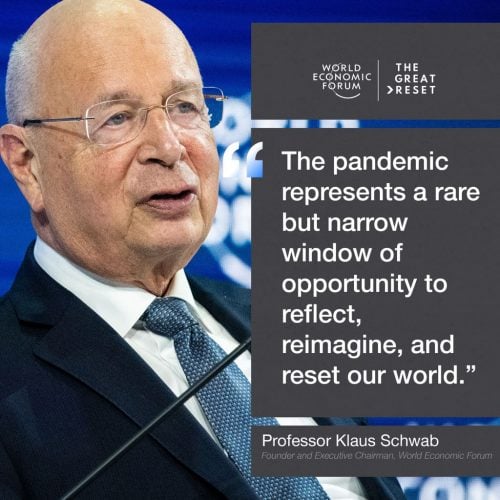
The great reset envisages a transformation of capitalism, resulting in permanent restrictions on fundamental liberties and mass surveillance as livelihoods and entire sectors are sacrificed to boost the monopoly and hegemony of pharmaceutical corporations, high-tech/big data giants, Amazon, Google, major global chains, the digital payments sector, biotech concerns, etc.
Under the cover of COVID-19 lockdowns and restrictions, the great reset has been accelerated under the guise of a ‘Fourth Industrial Revolution’ in which smaller enterprises are to be driven to bankruptcy or bought up by monopolies. Economies are being ‘restructured’ and many jobs and roles will be carried out by AI-driven technology.
And we are also witnessing the drive towards a ‘green economy’ underpinned by the rhetoric of ‘sustainable consumption’ and ‘climate emergency’.
Essential (for capitalism) new arenas for profit making will be created through the ‘financialisation’ and ownership of all aspects of nature, which is to be colonised, commodified and traded under the fraudulent notion of protecting the environment. This essentially means that – under the pretext of ‘net-zero emissions’ – polluters can keep polluting but ‘offset’ their pollution by using and trading (and profiting from) the land and resources of indigenous peoples and farmers as carbon sinks. Another financial Ponzi scheme, this time based on ‘green imperialism’.
Politicians in countries throughout the world have been using the rhetoric of the great reset, talking of the need to ‘build back better’ for the ‘new normal’. They are all on point. Hardly a coincidence.
But why is this reset required?
Capitalism must maintain viable profit margins. The prevailing economic system demands ever-increasing levels of extraction, production and consumption and needs a certain level of annual GDP growth for large firms to make sufficient profit.
But markets have become saturated, demand rates have fallen and overproduction and overaccumulation of capital has become a problem. In response, we have seen credit markets expand and personal debt increase to maintain consumer demand as workers’ wages have been squeezed, financial and real estate speculation rise (new investment markets), stock buy backs and massive bail outs and subsidies (public money to maintain the viability of private capital) and an expansion of militarism (a major driving force for many sectors of the economy).
We have also witnessed systems of production abroad being displaced for global corporations to then capture and expand markets in foreign countries.
However, these solutions were little more than band aids. The world economy was suffocating under an unsustainable mountain of debt. Many companies could not generate enough profit to cover interest payments on their own debts and were staying afloat only by taking on new loans. Falling turnover, squeezed margins, limited cashflows and highly leveraged balance sheets were rising everywhere.
In October 2019, in a speech at an International Monetary Fund conference, former Bank of England governor Mervyn King warned that the world was sleepwalking towards a fresh economic and financial crisis that would have devastating consequences for what he called the “democratic market system”.
According to King, the global economy was stuck in a low growth trap and recovery from the crisis of 2008 was weaker than that after the Great Depression. He concluded that it was time for the Federal Reserve and other central banks to begin talks behind closed doors with politicians.
In the repurchase agreement (repo) market, interest rates soared on 16 September. The Federal Reserve stepped in by intervening to the tune of $75 billion per day over four days, a sum not seen since the 2008 crisis.
At that time, according to Fabio Vighi, professor of critical theory at Cardiff University, the Fed began an emergency monetary programme that saw hundreds of billions of dollars per week pumped into Wall Street.
Over the last two years or so, under the guise of a ‘pandemic’, we have seen economies closed down, small businesses being crushed, workers being made unemployed and people’s rights being destroyed. Lockdowns and restrictions have facilitated this process. These so-called ‘public health measures’ have served to manage a crisis of capitalism.
Neoliberalism has squeezed workers income and benefits, offshored key sectors of economies and has used every tool at its disposal to maintain demand and create financial Ponzi schemes in which the rich can still invest in and profit from. The bailouts to the banking sector following the 2008 crash provided only temporary respite. The crash returned with a much bigger bang pre-Covid along with multi-billion-dollar bailouts.
Fabio Vighi sheds light on the role of the ‘pandemic’ in all of this:
“… some may have started wondering why the usually unscrupulous ruling elites decided to freeze the global profit-making machine in the face of a pathogen that targets almost exclusively the unproductive (over 80s).”
Vighi describes how, in pre-Covid times, the world economy was on the verge of another colossal meltdown and chronicles how the Swiss Bank of International Settlements, BlackRock (the world’s most powerful investment fund), G7 central bankers and others worked to avert a massive impending financial meltdown.
Lockdowns and the global suspension of economic transactions were intended to allow the Fed to flood the ailing financial markets (under the guise of COVID) with freshly printed money while shutting down the real economy to avoid hyperinflation.
Vighi says:
“… the stock market did not collapse (in March 2020) because lockdowns had to be imposed; rather, lockdowns had to be imposed because financial markets were collapsing. With lockdowns came the suspension of business transactions, which drained the demand for credit and stopped the contagion. In other words, restructuring the financial architecture through extraordinary monetary policy was contingent on the economy’s engine being turned off.”
It all amounted to a multi-trillion bailout for Wall Street under the guise of COVID ‘relief’ followed by an ongoing plan to fundamentally restructure capitalism that involves smaller enterprises being driven to bankruptcy or bought up by monopolies and global chains, thereby ensuring continued viable profits for these predatory corporations, and the eradication of millions of jobs resulting from lockdowns and accelerated automation.
Ordinary people will foot the bill for the ‘COVID relief’ packages and if the financial bailouts do not go according to plan, we could see further lockdowns imposed, perhaps justified under the pretext of ‘the virus’ but also ‘climate emergency’.
It is not only Big Finance that has been saved. A previously ailing pharmaceuticals industry has also received a massive bailout (public funds to develop and purchase the vaccines) and lifeline thanks to the money-making COVID jabs.
What we are seeing is many millions around the world being robbed of their livelihoods. With AI and advanced automation of production, distribution and service provision on the horizon, a mass labour force will no longer be required.
It raises fundamental questions about the need for and the future of mass education, welfare and healthcare provision and systems that have traditionally served to reproduce and maintain labour that capitalist economic activity has required. As the economic is restructured, labour’s relationship to capital is being transformed. If work is a condition of the existence of the labouring classes, then, in the eyes of capitalists, why maintain a pool of (surplus) labour that is no longer needed?
At the same time, as large sections of the population head into a state of permanent unemployment, the rulers are weary of mass dissent and resistance. We are witnessing an emerging biosecurity surveillance state designed to curtail liberties ranging from freedom of movement and assembly to political protest and free speech.
In a system of top-down surveillance capitalism with an increasing section of the population deemed ‘unproductive’ and ‘useless eaters’, notions of individualism, liberal democracy and the ideology of free choice and consumerism are regarded by the elite as ‘unnecessary luxuries’ along with political and civil rights and freedoms.
We need only look at the ongoing tyranny in Australia to see how quickly the country was transformed from a ‘liberal democracy’ to a brutal totalitarian police state of endless lockdowns where gathering and protests are not to be tolerated.
Being beaten and thrown to the ground and fired at with rubber bullets in the name of protecting health makes as much sense as devastating entire societies through socially and economically destructive lockdowns to ‘save lives’.
There is little if any logic to this. But of course, If we view what is happening in terms of a crisis of capitalism, it might begin to make a lot more sense.
The austerity measures that followed the 2008 crash were bad enough for ordinary people who were still reeling from the impacts when the first lockdown was imposed.
The authorities are aware that deeper, harsher impacts as well as much more wide-ranging changes will be experienced this time around and seem adamant that the masses must become more tightly controlled and conditioned to their coming servitude.
Chapter IX
Post-COVID dystopia
Hand of God and the New World Order
During its numerous prolonged lockdowns, in parts of Australia the right to protest and gather in public as well as the right of free speech was suspended. It resembled a giant penal colony as officials pursued a nonsensical ‘zero-COVID’ policy. Across Europe and in the US and Israel, unnecessary and discriminatory ‘COVID passports’ are being rolled out to restrict freedom of movement and access to services.
Again, governments must demonstrate resolve to their billionaire masters in Big Finance, the Gates and Rockefeller Foundations, the World Economic Forum and the entire gamut of forces in the military-financial industrial complex behind the ‘Great Reset’, ‘4th Industrial Revolution, ‘New Normal’ or whichever other benign-sounding term is used to disguise the restructuring of capitalism and the brutal impacts on ordinary people.
COVID has ensured that trillions of dollars have been handed over to elite interests, while lockdowns and restrictions have been imposed on ordinary people and small businesses. The winners have been the likes of Amazon, Big Pharma and the tech giants. The losers have been small enterprises and the bulk of the population, deprived of their right to work and the entire panoply of civil rights their ancestors struggled and often died for.
Professor Michel Chossudovsky of the Centre for Research on Globalization (CRG) says:
“The Global Money financial institutions are the ‘creditors’ of the real economy which is in crisis. The closure of the global economy has triggered a process of global indebtedness. Unprecedented in World history, a multi-trillion bonanza of dollar denominated debts is hitting simultaneously the national economies of 193 countries.”
In August 2020, a report by the International Labour Organization (ILO) stated:
“The COVID-19 crisis has severely disrupted economies and labour markets in all world regions, with estimated losses of working hours equivalent to nearly 400 million full-time jobs in the second quarter of 2020, most of which are in emerging and developing countries.”
Among the most vulnerable are the 1.6 billion informal economy workers, representing half of the global workforce, who are working in sectors experiencing major job losses or have seen their incomes seriously affected by lockdowns. Most of the workers affected (1.25 billion) are in retail, accommodation and food services and manufacturing. And most of these are self-employed and in low-income jobs in the informal sector.
India was especially affected in this respect when the government imposed a lockdown. The policy ended up pushing 230 million into poverty and wrecked the lives and livelihoods of many. A May 2021 report prepared by the Centre for Sustainable Employment at Azim Premji University has highlighted how employment and income had not recovered to pre-pandemic levels even by late 2020.
The report ‘State of Working India 2021 – One year of Covid-19’ highlights how almost half of formal salaried workers moved into the informal sector and that 230 million people fell below the national minimum wage poverty line.
Even before COVID, India was experiencing its longest economic slowdown since 1991 with weak employment generation, uneven development and a largely informal economy. An article by the RUPE highlights the structural weaknesses of the economy and the often desperate plight of ordinary people.
To survive Modi’s lockdown, the poorest 25% of households borrowed 3.8 times their median income, as against 1.4 times for the top 25%. The study noted the implications for debt traps.
Six months later, it was also noted that food intake was still at lockdown levels for 20% of vulnerable households.
Meanwhile, the rich were well taken care of. According to Left Voice:
“The Modi government has handled the pandemic by prioritising the profits of big business and protecting the fortunes of billionaires over protecting the lives and livelihoods of workers.”
Governments are now under the control of global creditors and the post-COVID era will see massive austerity measures, including the cancellation of workers’ benefits and social safety nets. An unpayable multi-trillion-dollar public debt is unfolding: the creditors of the state are Big Money, which calls the shots in a process that will lead to the privatisation of the state.
Between April and July 2020, the total wealth held by billionaires around the world grew from $8 trillion to more than $10 trillion. Chossudovsky says a new generation of billionaire innovators looks set to play a critical role in repairing the damage by using the growing repertoire of emerging technologies. He adds that tomorrow’s innovators will digitise, refresh and revolutionise the economy: but, as he notes, these corrupt billionaires are little more than impoverishers.
With this in mind, a piece on the US Right To Know website exposes the Gates-led agenda for the future of food based on the programming of biology to produce synthetic and genetically engineered substances. The thinking reflects the programming of computers in the information economy. Of course, Gates and his ilk have patented, or are patenting, the processes and products involved.
For example, Ginkgo Bioworks, a Gates-backed start-up that makes ‘custom organisms’, recently went public in a $17.5 billion deal. It uses ‘cell programming’ technology to genetically engineer flavours and scents into commercial strains of engineered yeast and bacteria to create ‘natural’ ingredients, including vitamins, amino acids, enzymes and flavours for ultra-processed foods.
Ginkgo plans to create up to 20,000 engineered ‘cell programs’ (it now has five) for food products and many other uses. It plans to charge customers to use its ‘biological platform’. Its customers are not consumers or farmers but the world’s largest chemical, food and pharmaceutical companies.
Gates pushes fake food by way of his greenwash agenda. If he really is interested in avoiding ‘climate catastrophe’, helping farmers or producing enough food, instead of cementing the power and the control of corporations over our food, he should be facilitating community-based/led agroecological approaches.
But he will not because there is no scope for patents, external proprietary inputs, commodification and dependency on global corporations which Gates sees as the answer to all of humanity’s problems in his quest to bypass democratic processes and roll out his agenda.
India should take heed because this is the future of ‘food’. If the farmers fail to get the farm bills repealed, India will again become dependent on food imports or on foreign food manufacturers and even lab-made ‘food’. Fake or toxic food will displace traditional diets and cultivation methods will be driven by drones, genetically engineered seeds and farms without farmers, devastating the livelihoods (and health) of hundreds of millions.
World Bank Group President David Malpass has stated that poorer countries will be ‘helped’ to get back on their feet after the various lockdowns that have been implemented. This ‘help’ will be on condition that neoliberal reforms and the undermining of public services are implemented and become further embedded.
In April 2020, the Wall Street Journal ran the headline ‘IMF, World Bank Face Deluge of Aid Requests From Developing World‘. Scores of countries are asking for bailouts and loans from financial institutions with $1.2 trillion to lend. An ideal recipe for fuelling dependency.
In return for debt relief or ‘support’, global conglomerates along with the likes of Bill Gates will be able to further dictate national policies and hollow out the remnants of nation state sovereignty.
The billionaire class who are pushing this agenda think they can own nature and all humans and can control both, whether through geoengineering the atmosphere, for example, genetically modifying soil microbes or doing a better job than nature by producing bio-synthesised fake food in a lab.
They think they can bring history to a close and reinvent the wheel by reshaping what it means to be human. And they hope they can achieve this sooner rather than later. It is a cold dystopian vision that wants to eradicate thousands of years of culture, tradition and practices virtually overnight.
And many of those cultures, traditions and practices relate to food and how we produce it and our deep-rooted connections to nature. Consider that many of the ancient rituals and celebrations of our forebears were built around stories and myths that helped them come to terms with some of the most fundamental issues of existence, from death to rebirth and fertility. These culturally embedded beliefs and practices served to sanctify their practical relationship with nature and its role in sustaining human life.
As agriculture became key to human survival, the planting and harvesting of crops and other seasonal activities associated with food production were central to these customs. Freyfaxi marks the beginning of the harvest in Norse paganism, for example, while Lammas or Lughnasadh is the celebration of the first harvest/grain harvest in paganism.
Humans celebrated nature and the life it gave birth to. Ancient beliefs and rituals were imbued with hope and renewal and people had a necessary and immediate relationship with the sun, seeds, animals, wind, fire, soil and rain and the changing seasons that nourished and brought life. Our cultural and social relationships with agrarian production and associated deities had a sound practical base. People’s lives have been tied to planting, harvesting, seeds, soil and the seasons for thousands of years.
For instance, Prof Robert W Nicholls explains that the cults of Woden and Thor were superimposed on far older and better-rooted beliefs related to the sun and the earth, the crops and the animals and the rotation of the seasons between the light and warmth of summer and the cold and dark of winter.
We need look no further than India to appreciate the important relationship between culture, agriculture and ecology, not least the vital importance of the monsoon and seasonal planting and harvesting. Rural-based beliefs and rituals steeped in nature persist, even among urban Indians. These are bound to traditional knowledge systems where livelihoods, the seasons, food, cooking, food processing and preparation, seed exchange, healthcare and the passing on of knowledge are all inter-related and form the essence of cultural diversity within India itself.
Although the industrial age resulted in a diminution of the connection between food and the natural environment as people moved to cities, traditional ‘food cultures’ – the practices, attitudes and beliefs surrounding the production, distribution and consumption of food – still thrive and highlight our ongoing connection to agriculture and nature.
Hand of God
If we go back to the 1950s, it is interesting to note Union Carbide’s corporate narrative based on a series of images that depicted the company as a ‘hand of god’ coming out of the sky to ‘solve’ some of the issues facing humanity. One of the most famous images is of the hand pouring the firm’s agrochemicals on Indian soils as if traditional farming practices were somehow ‘backward’.
Despite well-publicised claims to the contrary, this chemical-driven approach did not lead to higher food production and has had long-term devastating ecological, social and economic consequences.
In the book Food and Cultural Studies’ (Bob Ashley et al), we see how, some years ago, a Coca Cola TV ad campaign sold its product to an audience which associated modernity with a sugary drink and depicted ancient Aboriginal beliefs as harmful, ignorant and outdated. Coke and not rain became the giver of life to the parched. This type of ideology forms part of a wider strategy to discredit traditional cultures and portray them as being deficient and in need of assistance from ‘god-like’ corporations.
Today, there is talk of farmerless farms being manned by driverless machines and monitored by drones with lab-based food becoming the norm. We may speculate what this could mean: commodity crops from patented GM seeds doused with chemicals and cultivated for industrial ‘biomatter’ to be processed by biotech companies and constituted into something resembling food.
In places like India, will the land of already (prior to COVID) heavily indebted farmers eventually be handed over to the tech giants, the financial institutions and global agribusiness to churn out their high-tech, data-driven GM industrial sludge?
Is this part of the brave new world being promoted by the World Economic Forum? A world in which a handful of rulers display their contempt for humanity and their arrogance, believing they are above nature and humanity.
This elite comprises between 6,000 and 7,000 individuals (around 0.0001% of the global population) according to David Rothkopf – former director of Kissinger Associates (set up by Henry Kissinger), a senior administrator in the Bill Clinton administration and a member of the Council for Foreign Relations – in his 2008 book ‘SuperClass: The Global Power Elite and the World They are Making’.
This class comprises the megacorporation-interlocked, policy-building elites of the world: people at the absolute peak of the global power pyramid. They set agendas at the Trilateral Commission, Bilderberg Group, G-8, G-20, NATO, the World Bank and the World Trade Organization and are largely from the highest levels of finance capital and transnational corporations.
But in recent years, we have also seen the rise of what journalist Ernst Wolff calls the digital-financial complex that is now driving the globalisation-one world agriculture agenda. This complex comprises many of the companies already mentioned, such as Microsoft, Alphabet (Google), Apple, Amazon and Meta (Facebook) as well as BlackRock and Vanguard, transnational investment/asset management corporations.
These entities exert control over governments and important institutions like the European Central Bank (ECB) and the US Federal Reserve. Indeed, Wolff states that BlackRock and Vanguard have more financial assets than the ECB and the Fed combined.
To appreciate the power and influence of BlackRock and Vanguard, let us turn to the documentary Monopoly: An Overview of the Great Reset which argues that the stock of the world’s largest corporations are owned by the same institutional investors. This means that ‘competing’ brands, like Coke and Pepsi, are not really competitors, since their stock is owned by the same investment companies, investment funds, insurance companies and banks.
Smaller investors are owned by larger investors. Those are owned by even bigger investors. The visible top of this pyramid shows only two companies: Vanguard and Black Rock.
A 2017 Bloomberg report states that both these companies in the year 2028 together will have investments amounting to 20 trillion dollars. In other words, they will own almost everything worth owning.
The digital-financial complex wants control over all aspects of life. It wants a cashless world, to destroy bodily integrity with a mandatory vaccination agenda linked to emerging digital-biopharmaceutical technologies, to control all personal data and digital money and it requires full control over everything, including food and farming.
If events since early 2020 have shown us anything, it is that an unaccountable, authoritarian global elite knows the type of world it wants to create, has the ability to coordinate its agenda globally and will use deception and duplicity to achieve it. And in this brave new Orwellian world where capitalist ‘liberal democracy’ has run its course, there will be no place for genuinely independent nation states or individual rights.
The independence of nation states could be further eroded by the digital-financial complex’s ‘financialisation of nature’ and its ‘green profiling’ of countries and companies.
If, again, we take the example of India, the Indian government has been on a relentless drive to attract inflows of foreign investment into government bonds (creating a lucrative market for global investors). It does not take much imagination to see how investors could destabilise the economy with large movements in or out of these bonds but also how India’s ‘green credentials’ could be factored in to downgrade its international credit rating.
And how could India demonstrate its green credentials and thus its ‘credit worthiness’? Perhaps by allowing herbicide-resistant GMO commodity crop monocultures that the GM sector misleadingly portrays as ‘climate friendly’ or by displacing indigenous people and using their lands and forests as carbon sinks for ‘net-zero’ global corporations to ‘offset’ their pollution.
With the link completely severed between food production, nature and culturally embedded beliefs that give meaning and expression to life, we will be left with the individual human who exists on lab-based food, who is reliant on income from the state and who is stripped of satisfying productive endeavour and genuine self-fulfilment.
The recent farmers’ protest in India and the global struggle taking place for the future of food and agriculture must be regarded as integral to the wider struggle concerning the future direction of humanity.
What is required is an ‘alternative to development’ as post-development theorist Arturo Escobar explains:
“Because seven decades after World War II, certain fundamentals have not changed. Global inequality remains severe, both between and within nations. Environmental devastation and human dislocation, driven by political as well as ecological factors, continues to worsen. These are symptoms of the failure of “development,” indicators that the intellectual and political post-development project remains an urgent task.”
Looking at the situation in Latin America, Escobar says development strategies have centred on large-scale interventions, such as the expansion of oil palm plantations, mining and large port development.
And it is similar in India: commodity monocropping; immiseration in the countryside; the appropriation of biodiversity, the means of subsistence for millions of rural dwellers; unnecessary and inappropriate environment-destroying, people-displacing infrastructure projects; and state-backed violence against the poorest and most marginalised sections of society.
These problems are not the result of a lack of development but of ‘excessive development’. Escobar looks towards the worldviews of indigenous peoples and the inseparability and interdependence of humans and nature for solutions.
He is not alone. Writers Felix Padel and Malvika Gupta argue that Adivasi (India’s indigenous peoples) economics may be the only hope for the future because India’s tribal cultures remain the antithesis of capitalism and industrialisation. Their age-old knowledge and value systems promote long-term sustainability through restraint in what is taken from nature. Their societies also emphasise equality and sharing rather than hierarchy and competition.
These principles must guide our actions regardless of where we live on the planet because what’s the alternative? A system driven by narcissism, domination, ego, anthropocentrism, speciesism and plunder. A system that is using up natural resources much faster than they can ever be regenerated. We have poisoned the rivers and oceans, destroyed natural habitats, driven wildlife species to (the edge of) extinction and continue to pollute and devastate.
And, as we can see, the outcome is endless conflicts over limited resources while nuclear missiles hang over humanity’s head like a sword of Damocles.
Chapter X
The Violence of Development
Much of this book has focused on the issue of development: how countries (with a focus on India) could move forward by embracing decentralisation and localisation and by prioritising, small farms, food sovereignty, agroecology and rural development. This final chapter looks at the current development paradigm and, drawing on the previous chapter, discusses the values and principles that can guide the world towards a better future and argues that our deep-rooted connection to the land is key.
In recent years, there has been much concern about a great reset, techno-feudalism, ecomodernism and technocracy, clampdowns on free speech, dissent and protest and the general erosion of civil liberties. The developments are associated with a ‘new normal’, which is in turn linked to the economic crisis affecting the Western countries and consequent economic restructuring.
However, it is business as before in terms of the ‘old normal’. The ‘old normal’ thrives. The old normal of resource plunder, violence, environmental devastation and human dislocation. Dependency and dispossession remain at the core of the global economic system.
By way of example, the following is a screenshot of a search carried out using the three words ‘tribal’, ‘mining’, ‘India’. The search was restricted to news stories in the last year. And these are just a selection of the stories that have not been disappeared due to censorship (by the magic of algorithm) of certain writers or media platforms.
Nevertheless, there were still pages and pages of news stories with similar headlines.

India was used for the search. But what is set out is not unique to India. Similar things are happening across the globe, from Congo to Bolivia and beyond.
Although civil liberties are under attack in the West, these ‘rights’ tend to be cosmetic but barely even exist in many places across the world (that often call themselves ‘democratic’).
We only see greed and outright plunder underpinned by unconstitutional land takeovers and the trampling of democratic rights. For supporters of cronyism and manipulated markets, which to all extent and purposes is what the neoliberal development agenda has fuelled, there have been untold opportunities for well-placed billionaires to make a fast buck from various infrastructure projects and privatisation sell-offs.
Powerful corporations are shaping the development agenda and have signed secretive memorandums of understanding with governments. The full backing of the state is on hand to forcibly evict (tribal) people from their lands and hand it over to mineral-hungry industries or agribusiness to fuel a warped, unsustainable model of development and swell the pockets of elite interests.
For instance, TIME magazine ran the piece India Is Pulling Back on Coal. For Many, the Damage Is Done in October 2023, highlighting the social and ecological devastation caused by the Adani Group. Much controversy surrounds Gautam Adani, who is now India’s second-richest billionaire.
Around the world, an urban-centric, high-energy model of development is stripping communities and environments bare.
In addition to displacing people to facilitate the needs of resource extraction industries that devastate tribal lands and pristine forests, land grabs for Special Economic Zones, nuclear plants and other projects have forced many others from the land.
And then there are the farmers: a ‘problem’ while on the land and a ‘problem’ to be somehow dealt with once displaced. But food producers, the genuine wealth creators of a nation, only became a problem when Western agribusiness was given the green light to take power away from farmers and recast agriculture in its own image.
In India, Hinduism and tribal society beliefs sanctify certain animals, places, rivers or mountains. But it’s also a country run by Wall Street-sanctioned politicians who convince people to accept or be oblivious to the destruction of the same.
Many are working to challenge the devastating impacts of development. Yet how easy will it be for them to be swept aside by officialdom which seeks to cast them as ‘subversive’? How easy it is for the corrosive impacts of rapacious, hugely powerful corporations to colonise almost every area of social, cultural and economic life and encourage greed, selfishness, apathy, irretrievable materialism and acquisitive individualism.
The corporations behind it achieve hegemony by altering mindsets via advertising, clever PR or by sponsoring (hijacking) major events, by funding research in public institutions and slanting findings and the knowledge paradigm in their favour or by coopting policymakers to ‘structurally readjust’ society for their benefit. They do it by many methods and means.
Before you realise it, culture, politics and the economy have become colonised by powerful private interests. The prevailing economic system soon becomes cloaked with an aura of matter of factuality, an air of naturalness, which is never to be viewed for the controlling power play that it really is.
Seeds, mountains, water, forests and biodiversity are sold off. Farmers and tribals are sold out. And the more that gets sold off, the more who get sold out, the greater the amount of cash that changes hands, and the easier it is for the misinformed to swallow the lie of ‘growth’.
The type of ‘progress and development’ being sold makes many of the beneficiaries of it in the cities blind to the misery and plight of the hundreds of millions who are deprived of their lands and livelihoods. Those who are sacrificed on the altar of plunder in the countryside, in the forests or in the hills become regarded as the price worth paying for ‘progress’.
Hegemony
If you look up a dictionary definition of violence, ‘intense force’ will be included somewhere. You may also find ‘injurious physical force or treatment’ and an ‘unwarranted exertion of force or power’ (all definitions are found to describe violence on Dictionary.com). If we take these terms as our starting point, we may justifiably claim development to be a form of violence.
In many instances, development constitutes ‘injurious physical force or treatment’. In Congo, for example, rich corporations profit from war and conflict. And in India, tens of thousands of militias (including in 2005, Salwa Judum) were put into tribal areas to forcibly displace 300,000 people and place 50,000 in camps. In the process, rapes and human rights abuses have been common.
But there is another form of violence. It often goes unnoticed and is so institutionalised that it is seldom regarded as actually constituting violence. The fact that many do not regard it as violence is thanks mainly to what philosopher and social theorist Michael Foucault suggested is our taken for granted knowledge about the world in general and how we regard ourselves in it. This ‘common sense’ knowledge may seem benign and neutral but must be viewed within the context of power: it is part of the discourse of the powerful.
Cultural norms and the prevailing social and economic system are an accepted form of ‘truth’, of reality and of how many people view the world and evaluate others. Endless glossy commercials and TV shows that wallow in the veneration of money, fame and narcissism are conveying the message that material wealth represents the epitome of success. This ideology is, in itself, a form of violence: an unwarranted exertion of power.
This hegemonic ideology is, of course, based on a false assumption, on a lingering lie. And part of that lie is the joining of bogus notions of success and failure at the hip. Notions of failure are implicit in the messages surrounding money and wealth. If you are not on the Forbes rich list, or at least aspiring to be on it, you are somehow a failure. If you don’t buy this product or wear that item, you somehow don’t cut it.
In true Foucauldian style, the ideology of modern ‘developed’ society is a power play concerned with redefining who we are or what we should be, what is acceptable and what is unacceptable.
Passive consumerism underpinned by resource plunder has been at the heart of the system. The violence of development is on a sliding scale. At one end of is a hegemonic ideology, at the other, outright brutality.
Underpinning the mindset of this development paradigm is what Vandana Shiva calls a view of the world that encourages humans to regard man as conqueror and owner of the Earth. This has led to the technological hubris of geo-engineering, genetic engineering and nuclear energy. Shiva argues that it has led to the ethical outrage of owning life forms through patents, water through privatisation, the air through carbon trading. It is leading to appropriation of the biodiversity that serves the poor.
Writer Sukumaran CV says:
“We look at the state-of-the-art airports, IITs, highways and bridges, the inevitable necessities for the corporate world to spread its tentacles everywhere and thrive, depriving the ordinary people of even the basic necessities of life and believe it is development.”
And we continue to see more rural population displacement and human dislocation, more mining, port and other big infrastructure developments and the further entrenchment of corporate interests and their projects.
In The Greater Common Good, Arundhati Roy writes about the thousands of tribal people displaced by the Narmada Sarovar Dam in India:
“Many of those who have been resettled are people who have lived all their lives deep in the forest… Suddenly they find themselves left with the option of starving to death or walking several kilometres to the nearest town, sitting in the marketplace offering themselves as wage labour, like goods on sale… Instead of a forest from which they gathered everything they needed – food, fuel, fodder, rope, gum, tobacco, tooth powder, medicinal herbs, housing materials – they earn between ten and twenty rupees a day… .”
State-corporate brutality experienced by society’s most marginalised was also highlighted by Roy in The Ghosts of Capitalism, where she tells of the ‘invisible’ and shoved-aside victims of rampant plunder.
Helena Paul notes a similar situation in Paraguay:
“Repression and displacement, often violent, of remaining rural populations, illness, falling local food production have all featured in this picture. Indigenous communities have been displaced and reduced to living on the capital’s rubbish dumps. This is a crime that we can rightly call genocide – the extinguishment of entire Peoples, their culture, their way of life and their environment.”
Happiness Is…
Conventional development is based on Western hegemony and has imposed certain ideals on the rest of the world. But there is, in reality, no universal standard as to what development is or should be. Are Western notions of progress applicable everywhere based on top-down, technocratic interventions?
Arturo Escobar does not think so:
“Development is the process whereby other peoples are dominated and their destinies are shaped according to an essentially Western way of conceiving and perceiving the world.”
The dominant notions that underpin economic ‘growth’, modern agriculture and development are based on a series of assumptions that betray a mindset steeped in arrogance and contempt: the planet should be cast in an urban-centric, Western-centric model whereby the rural is to be looked down on, nature must be dominated, farmers are a problem to be removed from the land and traditional ways are backward and in need of remedy.
As Vandana Shiva says:
“People are perceived as ‘poor’ if they eat food they have grown rather than commercially distributed junk foods sold by global agri-business. They are seen as poor if they live in self-built housing made from ecologically well-adapted materials like bamboo and mud rather than in cinder block or cement houses. They are seen as poor if they wear garments manufactured from handmade natural fibres rather than synthetics.”
In a similar vein, Arturo Escobar notes:
“Development was and continues to be—in theory and practice—a top-down, ethnocentric, and technocratic approach, which treated people and cultures as abstract concepts, statistical figures to be moved up and down in the charts of ‘progress’.”
If history teaches us one thing, it is that humanity has ended up at its current point due to a multitude of struggles and conflicts, the outcomes of which were often in the balance. There is no unilinear path to development and no fixed standard as to what it constitutes. The work of Barrington Moore and Robert Brenner highlighted how the specific outcomes of class struggles could have profound long-term consequences for societal development and historical change.
In other words, we have ended up where we are as much by chance as design. And much of that design was based on colonialism and imperialism. The development of Britain owes much to the $45 trillion that was sucked from India alone, according to economist Utsa Patnaik.
And now the modern-day East India corporations of agribusiness and the data giants are in the process of ‘developing’ India again by helping themselves to the country’s public wealth and natural assets.
There are other pathways that humanity can take. Anthropologist Felix Padel and researcher Malvika Gupta offer some insights into what the solutions or alternatives to development might look like:
“Democracy as consensus politics rather than the Western model of liberal democracy that perpetuates division and corruption behind the scenes; exchange labour rather than the ruthless, anti-life logic of ‘the market’; law as reconciliation rather than judgements that depend on exorbitant legal fees and divide people into winners and losers… and learning as something to be shared, not competed over.”
But what of the outcome of the current development model? What of the so-called ‘developed’ societies?
According to various happiness or well-being surveys over the years, the wealthy Western nations have often ranked lower than some poorer countries. It seems that happiness is often higher in countries that prioritize family and friends, social capital rather than financial capital, social equity rather than corporate power and investment in education, health, self-sustaining communities, local economies and the environment.
Countries reported to be happier also tend to avoid undermining the ability of future generations to prosper. The pursuit of material wealth to the exclusion of all else negatively impacts health and the quality of personal relationships, which are among the most potent predictors of happiness.
Shouldn’t genuine development be about well-being and happiness in which co-operative labour, fellowship and affirming our long-standing spiritual connection to the land underpins society? A world that promotes the value of rural society, small farms, widespread property ownership and political decentralisation.
When we hear talk of a ‘spiritual connection’, what is meant by ‘spiritual’? In a broad sense it can be regarded as a concept that refers to thoughts, beliefs and feelings about the meaning of life, rather than just physical existence. A sense of connection to something greater than ourselves. The spiritual, the diverse and the local are juxtaposed with the selfishness of modern urban society, the increasing homogeneity of thought and practice and an instrumental rationality which becomes an end in itself.
Having a direct link with nature/the land is fundamental to developing an appreciation of a type of ‘being’ and an ‘understanding’ that results in a reality worth living in.
As noted in the previous chapter, humanity’s relationship with farming and food and our connections to land, nature and community has for millennia defined what it means to be human.
Take India, for example. Environmental scientist Viva Kermani says that Hinduism is the world’s largest nature-based religion that:
“… recognises and seeks the Divine in nature and acknowledges everything as sacred. It views the earth as our Mother and hence advocates that it should not be exploited. A loss of this understanding that earth is our mother, or rather a deliberate ignorance of this, has resulted in the abuse and the exploitation of the earth and its resources.”
Kermani notes that ancient scriptures instructed people that the animals and plants found in India are sacred and, therefore, all aspects of nature are to be revered. This understanding of and reverence towards the environment is common to all Indic religious and spiritual systems: Hinduism, Buddhism and Jainism.
The Vedic deities have deep symbolism and many layers of existence. One such association is with ecology. Surya is associated with the sun, the source of heat and light that nourishes everyone; Indra is associated with rain, crops, and abundance; and Agni is the deity of fire and transformation and controls all changes.
The Vrikshayurveda, an ancient Sanskrit text on the science of plants and trees, contains details about soil conservation, planting, sowing, treatment, propagating, how to deal with pests and diseases and a lot more.
Humanity has a profound cultural, philosophical and practical connection to nature and food production.
And then there is agrarianism, a philosophy based on cooperative labour and fellowship, which stands in stark contrast to the values and impacts of urban life, capitalism and technology that are seen as detrimental to independence and dignity. Agrarianism, too, emphasises a spiritual dimension as well as the value of rural society, small farms, widespread property ownership and political decentralisation.
The prominent proponent of agrarianism Wendell Berry says:
“The revolution which began with machines and chemicals now continues with automation, computers and biotechnology.”
For Berry, agrarianism is not a sentimental longing for a time past. Colonial attitudes, domestic, foreign and now global, have resisted true agrarianism almost from the beginning — there has never been fully sustainable, stable, locally adapted, land-based economies.
However, Berry provides many examples of small (and larger) farms that have similar output as industrial agriculture with one third of the energy.
But in the cold, centralised, technocratic dystopia that is planned, humanity’s spiritual connection to the countryside, food and agrarian production are to be cast into the dustbin of history. What we are seeing is an agenda based on a different set of values rooted in a lust for power and money and the total subjugation of ordinary people.
We are told that the corrosive, divisive values of (post)industrial, (post)capitalist society are normal and that the hundreds of millions who suffer along the way are necessary collateral damage on the road to the promised land. Corporate lobbyists say it is ‘progress’.
They say there is no alternative.
Well, they would. As corporations profit, the majority suffer. It is the predictable outcome of what food sovereignty movement La Via Campesina has long warned of. It says that free-market globalisation based on disinvestment, privatisation and the dismantling of national regulatory networks has:
“… lead to heightened concentration of power among political and corporate elites, in particular through transnational corporations, with devastating consequences for the world’s rural communities and urban workers. Today, almost every country in the world is witnessing growing anger among its rural and urban working class, who have been systematically marginalized and invisibilized by an economic system that expanded with the blessings of the World Bank, the International Monetary Fund, and the World Trade Organization.”
Gandhi’s Applied Human Ecology
Mention Gandhi in certain circles and the response might be one of cynicism: his ideas are outdated and irrelevant in today’s world. Such a response could not be further from the truth. Gandhi could see the future impact of large-scale industrialisation in terms of the devastation of the environment, the destruction of ecology and the unsustainable plunder of natural resources.
Ideas pertaining to environmentalism, agroecology, sustainable living, fair trade, local self-sufficiency, food sovereignty and so on were all present in Gandhi’s writings. He was committed to inflicting minimal damage on the environment and was concerned that humans should use only those resources they require and not amass wealth beyond their requirements. People had the right to attain certain comforts, but a perceived right to unbridled luxuries would result in damaging the environment and impinge on the species that we share the planet with.
For Gandhi, indigenous capability and local self-reliance (swadeshi) were key to producing a model of sustainable development.
Gandhi felt that the village economy should be central to development and India should not follow the West by aping an urban-industrial system. He noted that it took Britain half the resources of the planet to achieve its prosperity and asked how many planets would a country like India require?
Although there was a role for industrialisation that was not resource- or energy-intensive and which involved, for example, shipbuilding, iron works and machine making, for Gandhi, this would exist alongside village handicrafts.
This type of industrialisation would not make villages and village crafts subservient to cities: nothing would be produced by the cities that could be equally well produced by the villages, and the function of cities would be to serve as clearing houses for village products. He argued that with new technology even energy could be produced in villages by using sunlight and local materials. And, of course, people would live within the limits imposed by the environment and work in harmony with the natural ecology rather than by forcing it to bend to the will of profiteering industries.
Gandhi offered a vision for a world without meaningless consumption that depleted its finite resources and destroyed habitats and the environment. Given the problems facing humanity, his ideas could serve as an inspiration to us all, whether we live in India or elsewhere.
In the book Mahatma Gandhi: An Apostle of Applied Human Ecology, T N Khoshoo says:
“… Gandhiji called the so-called modern society a nine-day wonder. Poverty has been aggravated due to cumulative environmental degradation on account of resource depletion, increasing disparities, rural migration to urban areas resulting in deforestation, soil erosion, loss of soil fertility, desertification, biological impoverishment, pollution of air, water and land on account of lack of sanitation, chemical fertilizers, pesticides and their biomagnification, and a whole range of other problems.”
T N Khoshoo argued that Gandhi’s advocacy of an ‘non-interventionist lifestyle’ provides the answer to the present-day problems. The phrase ‘health of the environment’ is not just a literary coinage. It makes real biological sense because, as Gandhi argued, our planet is like a living organism. Without the innumerable and varied forms of life that the earth inhabits, without respecting the species we share this place with, our world will become lifeless.
The challenge is, however, how can humanity be persuaded to embark on a road whose values are opposed to those of modern society.
Focused Protest
Gandhi knew how to connect everyday concerns with wider issues. In 1930, he led a ‘salt march’ to the coast of Gujarat to symbolically collect salt on the shore. His message of resistance against the British Empire revolved around a simple everyday foodstuff.
His focus on salt was questioned by sections of the press and prominent figures on his side (even the British weren’t much concerned about a march about salt), who felt that protest against British rule in India should for instance focus more directly on the heady issues of rights and democracy.
However, Gandhi knew that by concentrating on an item of daily use among ordinary Indians, such a campaign could resonate more with all classes of citizens than an abstract demand for greater political rights.
Even though salt was freely available to those living on the coast (by evaporation of sea water), Indians were forced to purchase it from the colonial government. The tax on salt represented 8.2% of the British Raj tax revenue. The issue of salt encapsulated the essence of colonial oppression at the time.
Explaining his choice, Gandhi said that next to air and water, salt is perhaps the greatest necessity of life.
The prominent Congress statesman and future Governor-General of India, C. Rajagopalachari, understood what Gandhi was trying to achieve. He said:
“Suppose a people rise in revolt. They cannot attack the abstract constitution or lead an army against proclamations and statutes…Civil disobedience has to be directed against the salt tax or the land tax or some other particular point – not that that is our final end, but for the time being it is our aim, and we must shoot straight.”
With the British imposing heavy taxes on salt and monopolising its production, Gandhi felt he could strike a chord with the masses by highlighting an issue that directly affected everyone in the country: access to and control over a daily essential. His march drew not only national but international attention to India’s struggle for independence.
Protest and action against widespread oppression, violence and exploitation must be focused. As in Gandhi’s time, it is again food that is playing a central role in raising awareness and provoking resistance.
Today, we find the issue of food in general playing a similar role in people’s struggle for independence, but this time it is independence from the corporate tyranny of global agribusiness, which has the power to have (seed) laws, (trade) rules and (World Bank/IMF) directives written on its behalf.
Vandana Shiva draws a parallel between the seed sovereignty movement and Gandhi’s civil disobedience ‘salt march’:
“Gandhi has started the independence movement with the salt satyagraha. Satyagraha means ‘struggle for truth’. The salt satyagraha was a direct action of non-cooperation. When the British tried to create salt monopolies, he went to the beach in Dindi, picked up the salt and said, ‘Nature has given us this for free, it was meant to sustain us, we will not allow it to become a monopoly to finance the Imperial Army …’ For us, not cooperating in the monopoly regimes of intellectual property rights and patents and biodiversity – saying ‘no’ to patents on life and developing intellectual ideas of resistance – is very much a continuation of Gandhian satyagraha.”
There is a growing recognition that modern food system is sickening peopleand devasting peoples and environments.
Protest and action against widespread oppression, violence and exploitation must be focused. Food can play a key role in reorienting our values, raising awareness and inspiring resistance. By highlighting systemic inequalities and connecting issues, today’s multifaceted food justice movement is galvanising people to act against broader forms of oppression and poverty.
Food justice based on food sovereignty is part of a larger struggle against a social, economic and environmental injustice that hides behind the notion of development.
Note to readers: Please click the share buttons above or below. Follow us on Instagram, @globalresearch_crg. Forward this article to your email lists. Crosspost on your blog site, internet forums. etc.
Update as of August 16, 2023, 2:03 AM ET: Added an entire sub-section in Chapter IV.
Update as of September 16, 2024, 12:33 PM ET: Added Chapter X.
 The Worldwide Corona Crisis, Global Coup d’Etat Against Humanity
The Worldwide Corona Crisis, Global Coup d’Etat Against Humanity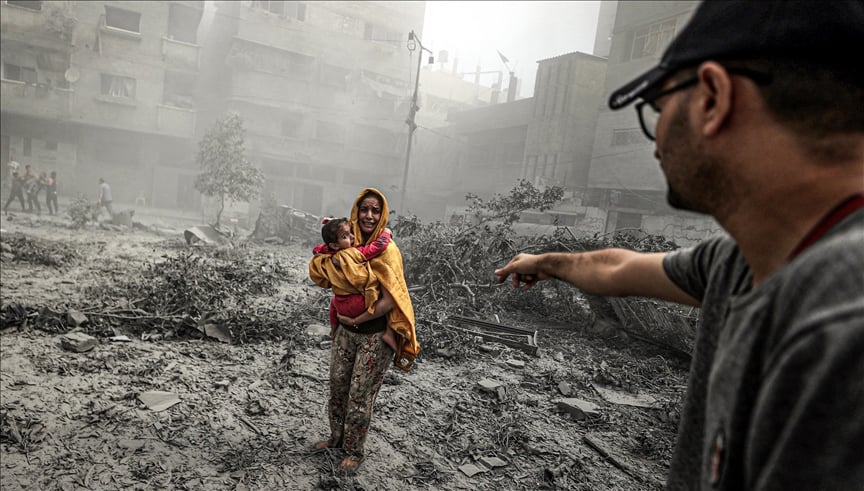
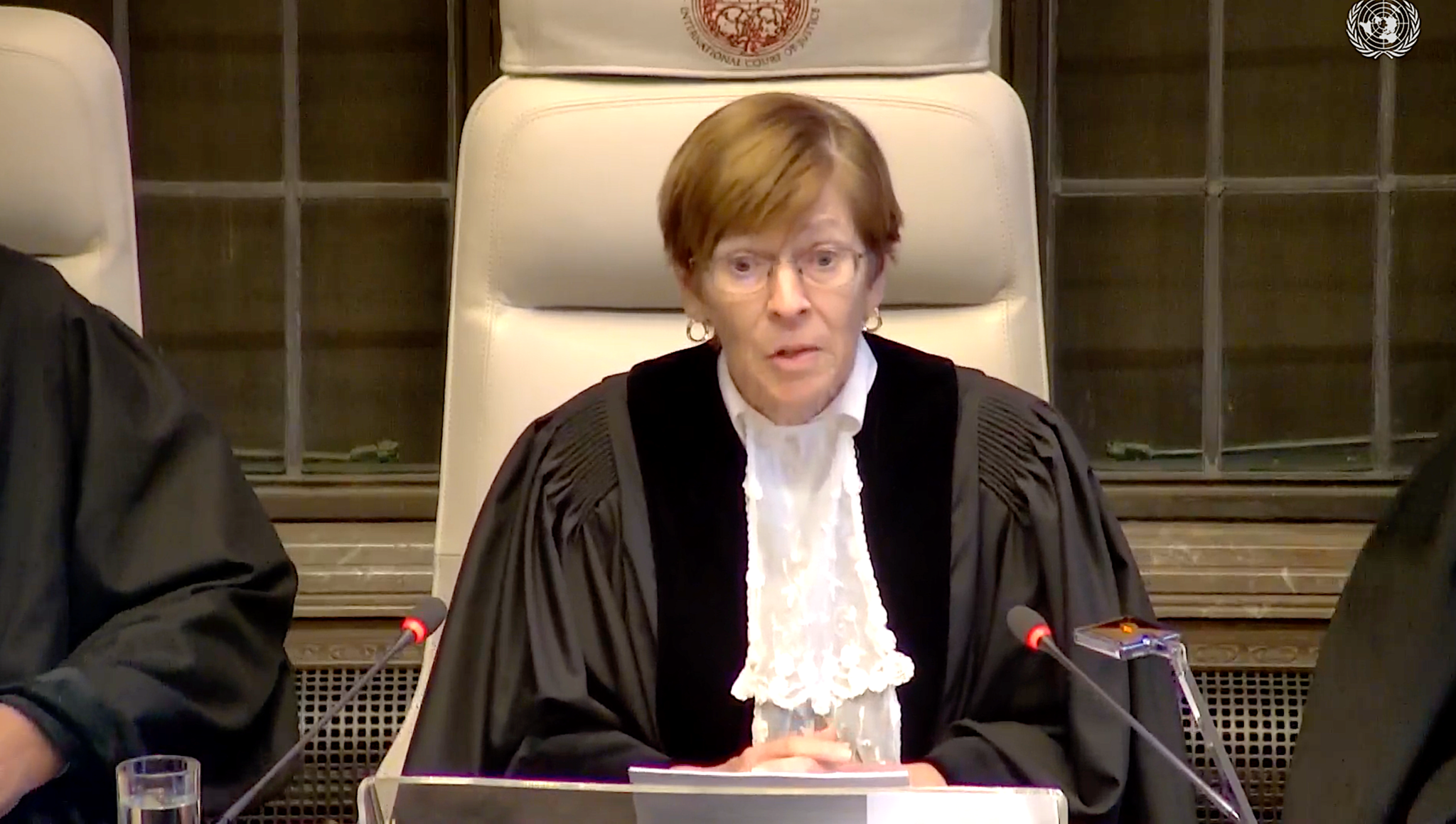 In this regard, the ICJ President Joan Donoghue — former Legal Advisor to Secretary of State Hillary Clinton during the Obama administration– is in conflict of interest. The latter indelibly raises the issue of her
In this regard, the ICJ President Joan Donoghue — former Legal Advisor to Secretary of State Hillary Clinton during the Obama administration– is in conflict of interest. The latter indelibly raises the issue of her 



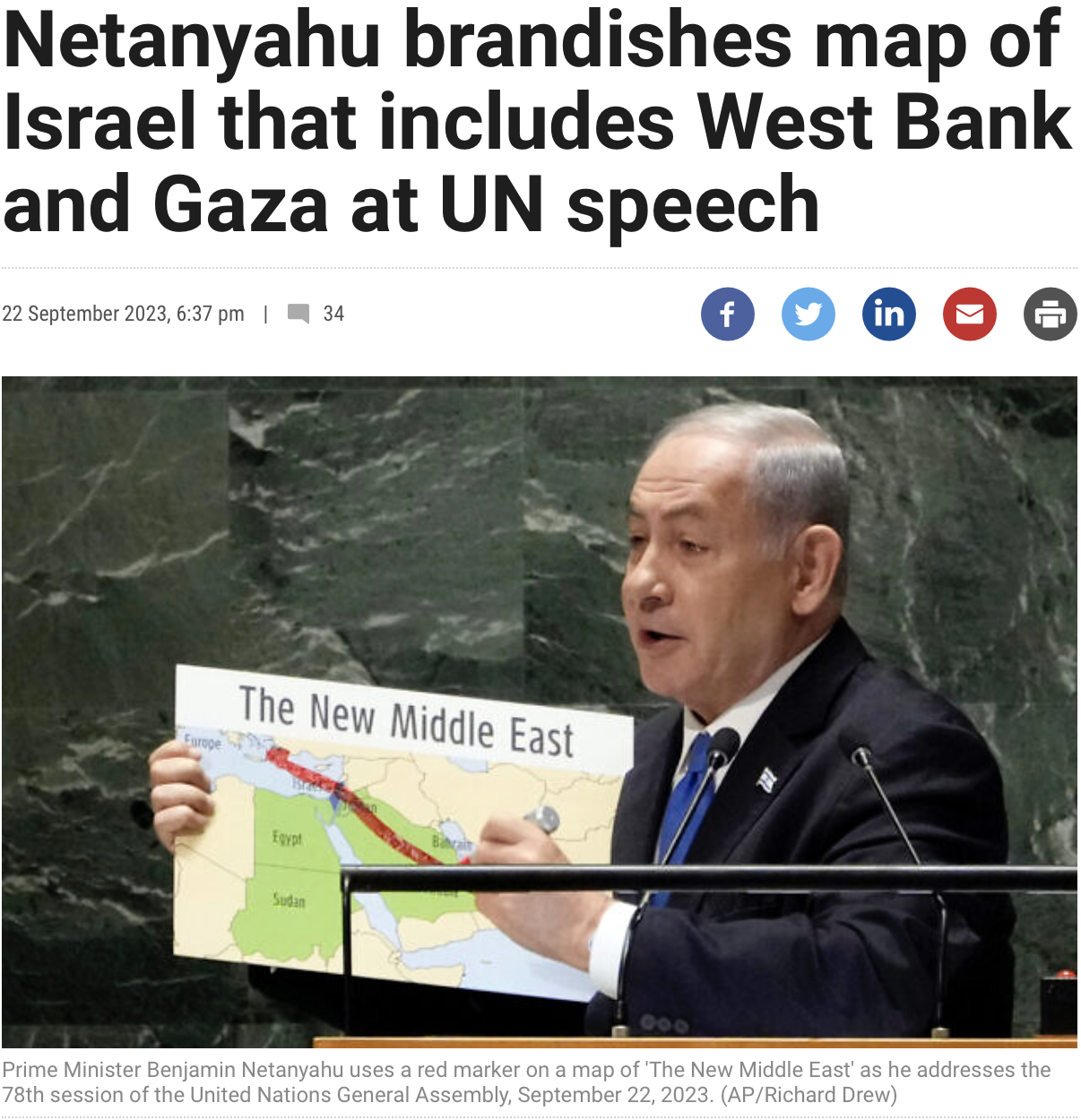
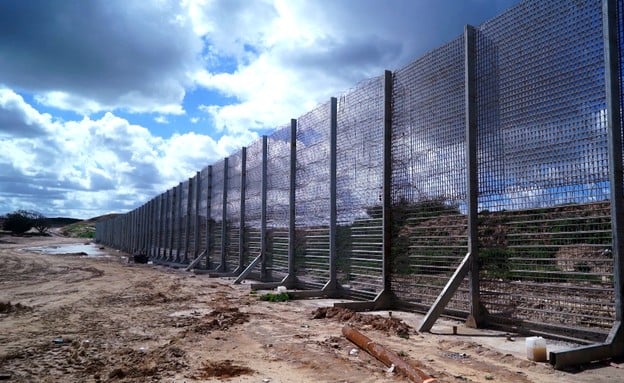

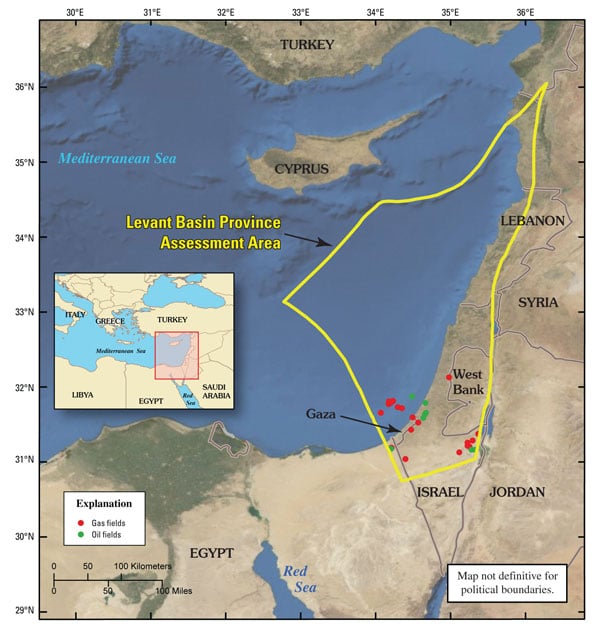






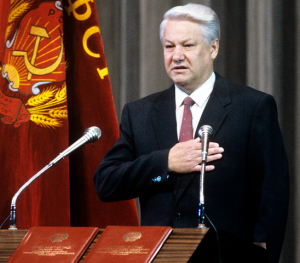


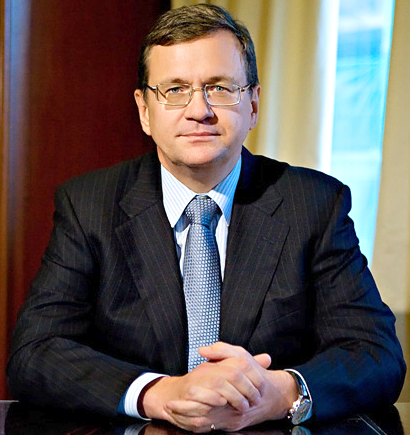

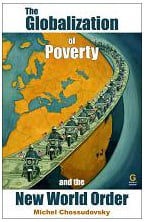
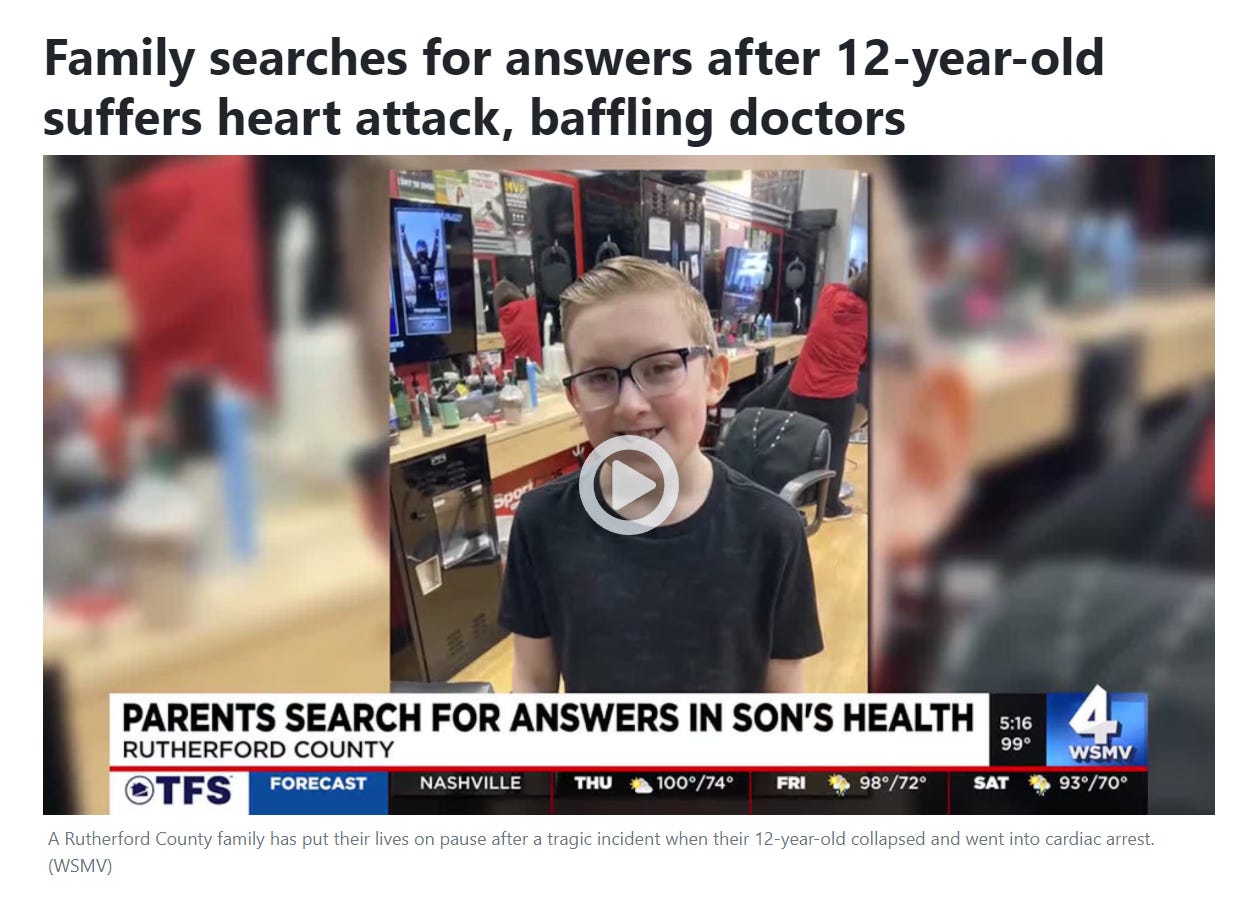
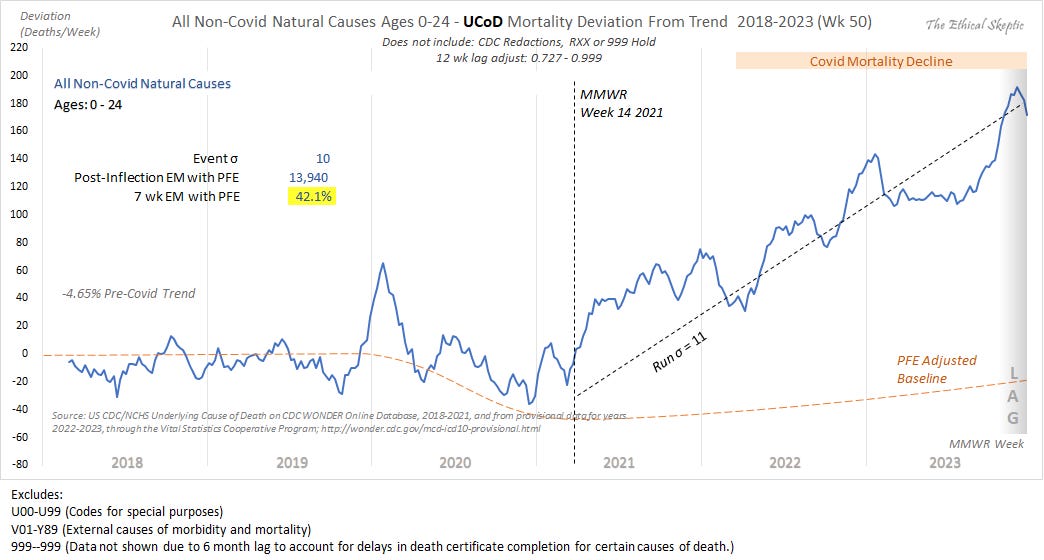

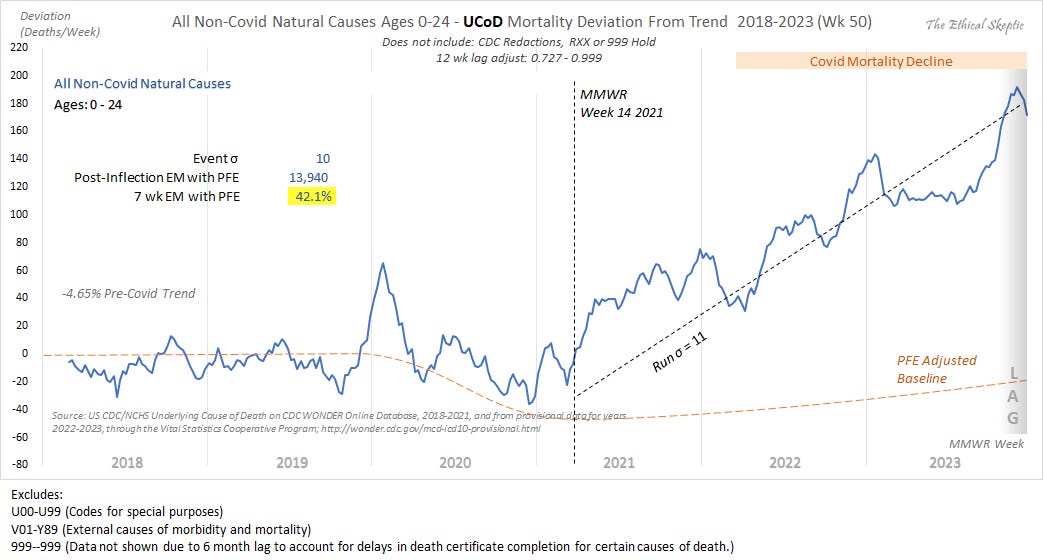









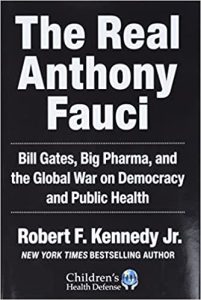


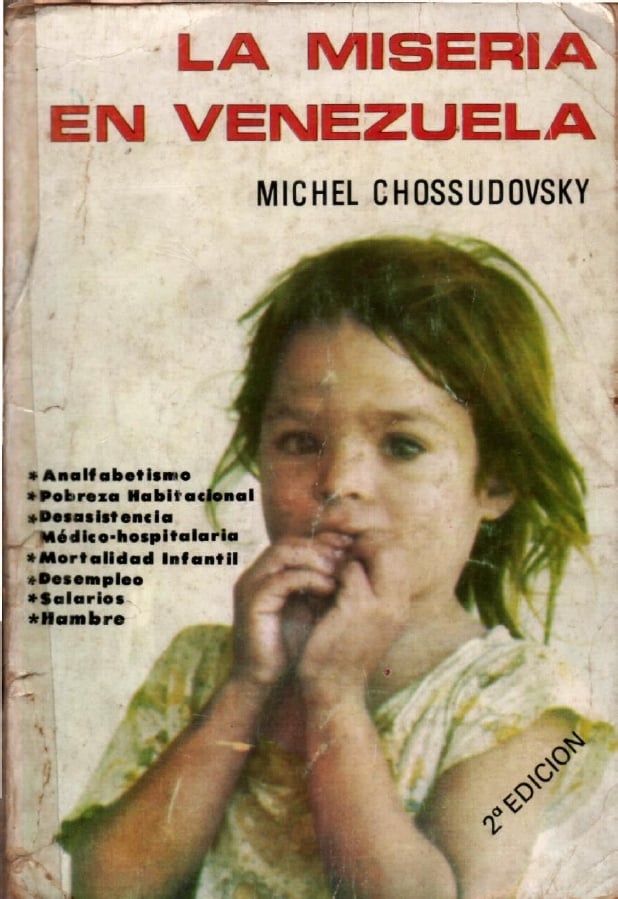
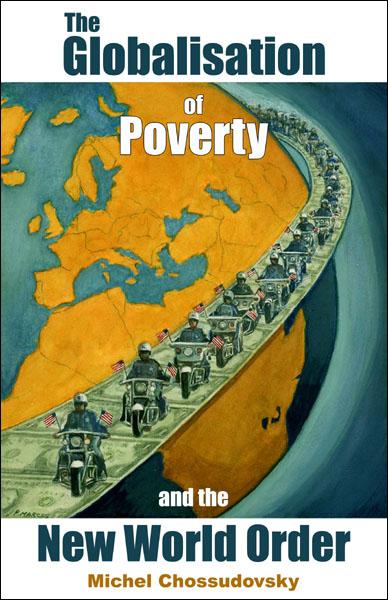
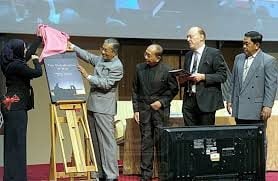
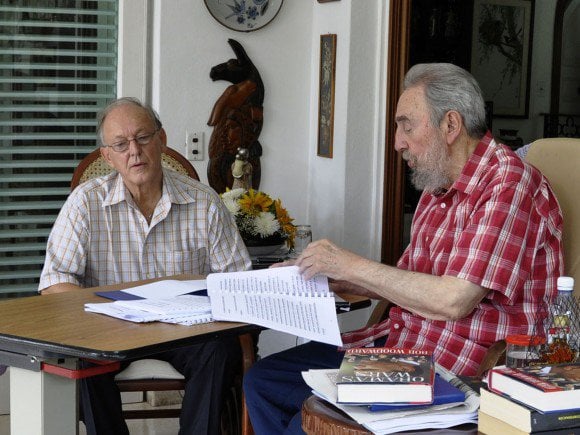
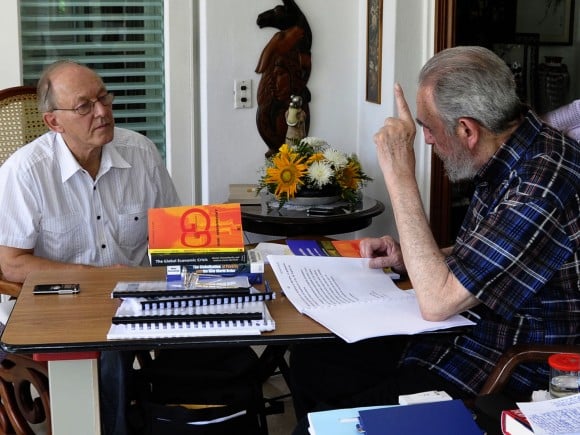
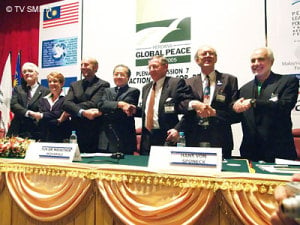
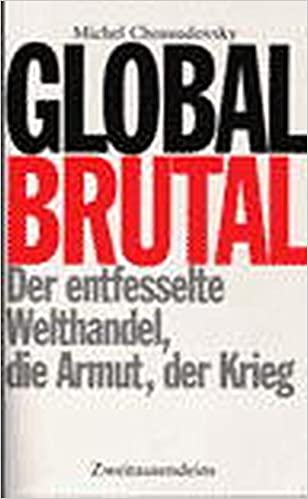
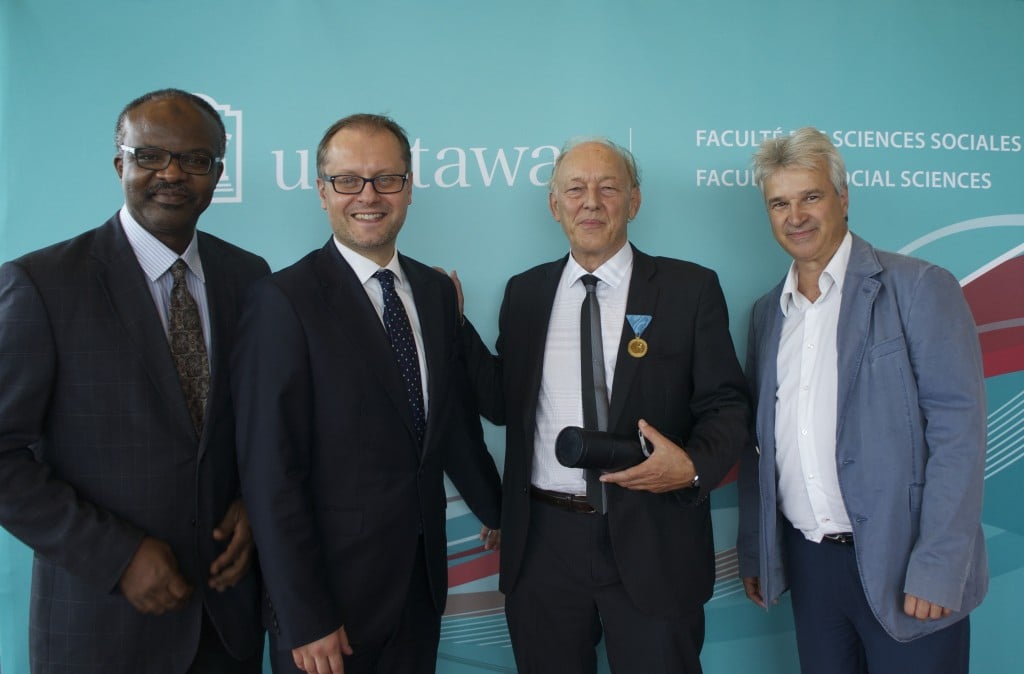
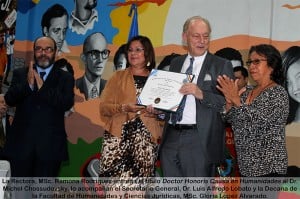

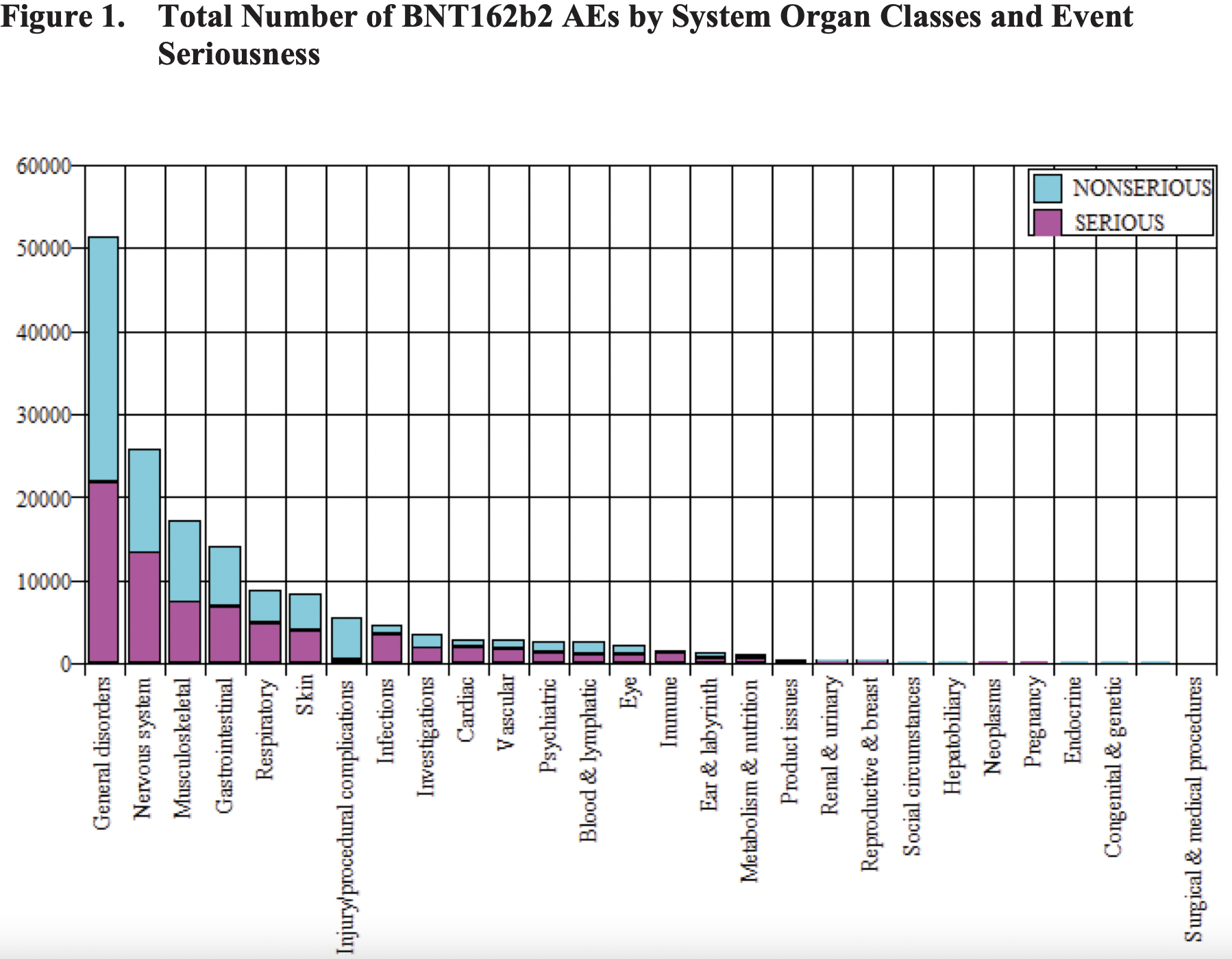

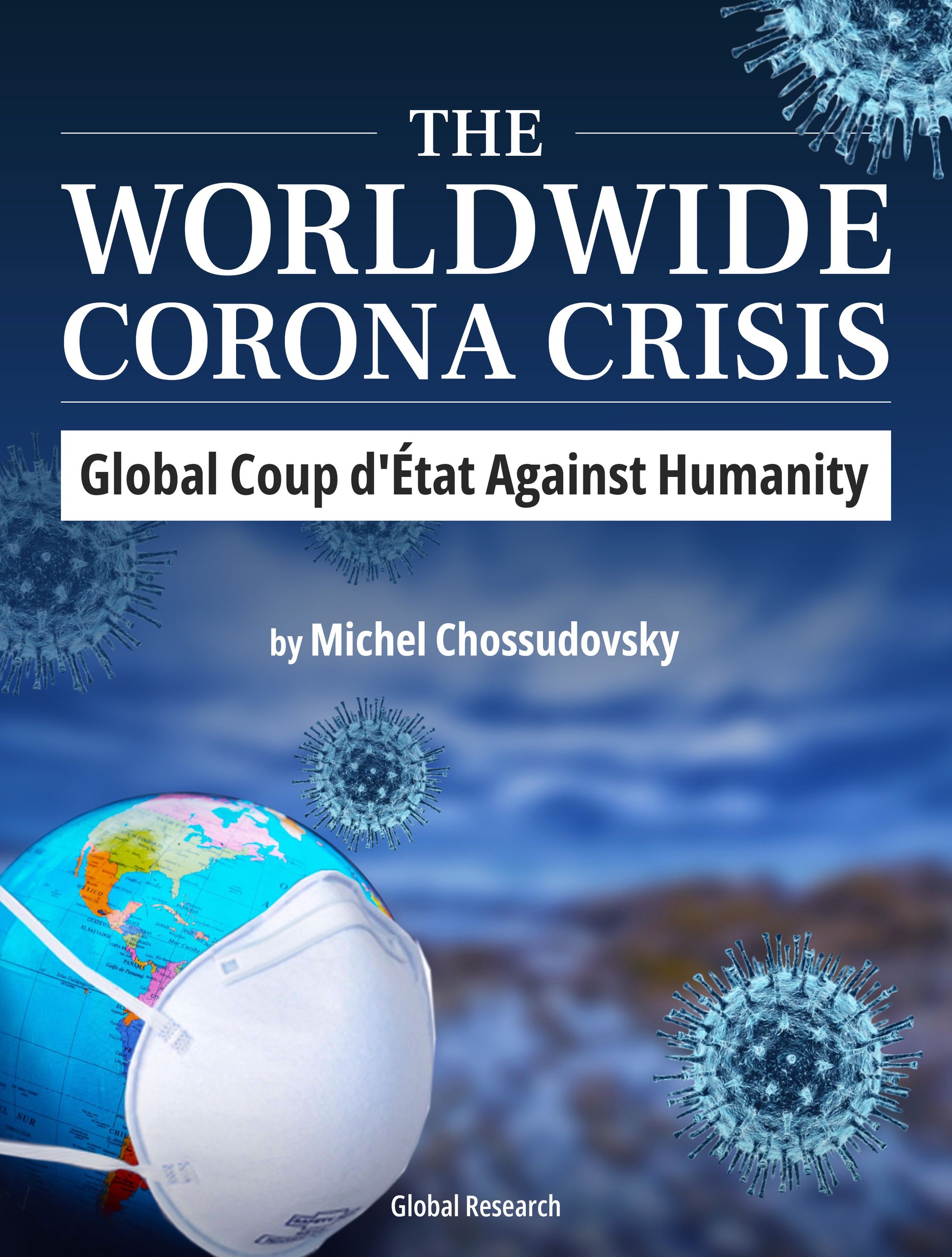 The Worldwide Corona Crisis, Global Coup d’État Against Humanity
The Worldwide Corona Crisis, Global Coup d’État Against Humanity